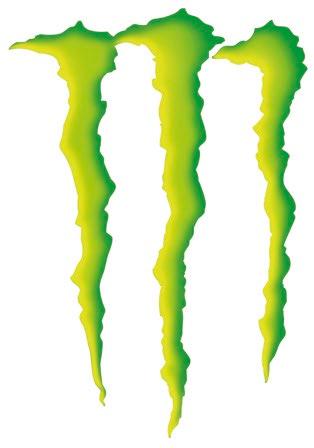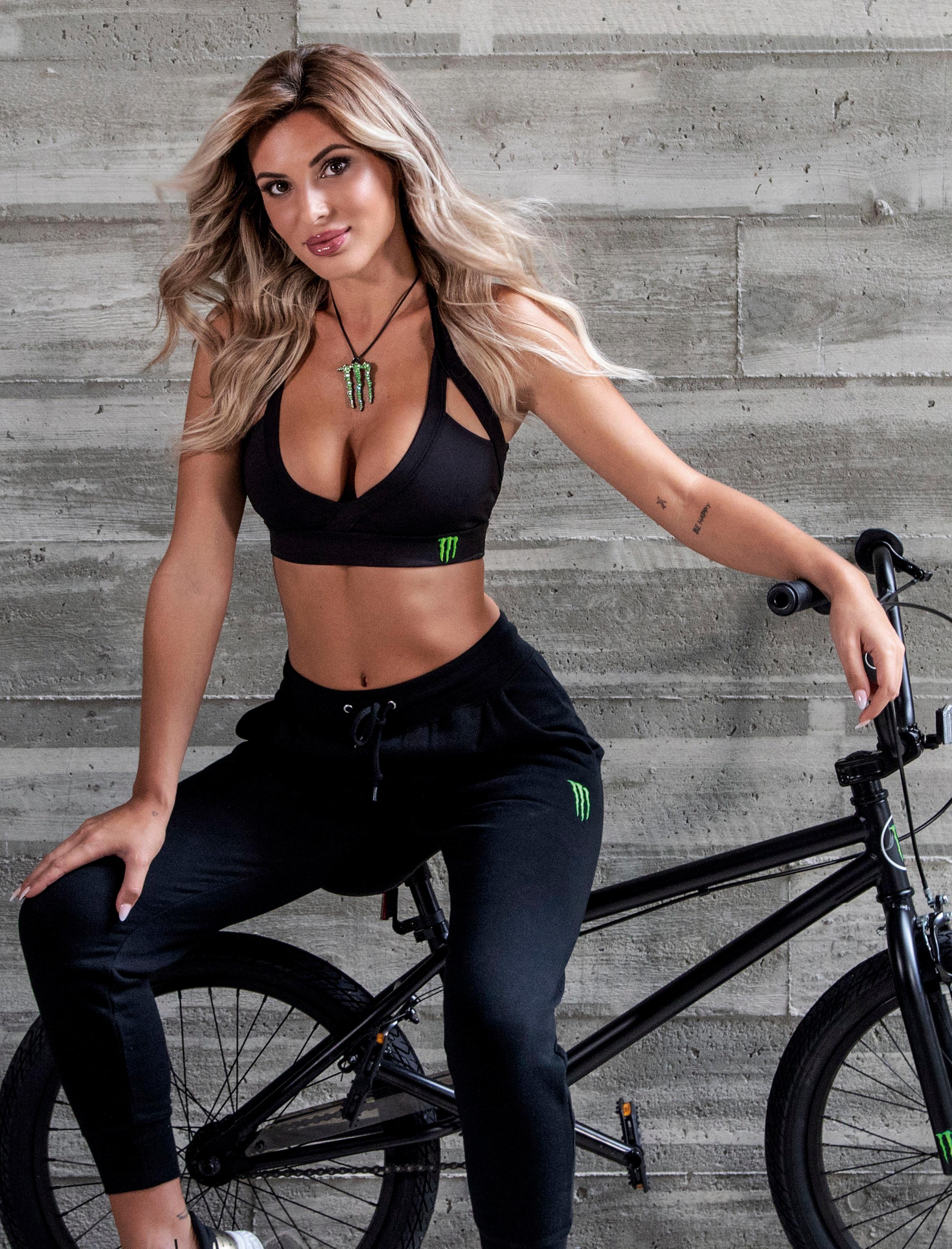




















































































SPECIAL FEATURE CHAD REED 2001 KAWASAKI SR250



HALL OF FAME PHILIPPE DUPASQUIER 074
PADDOCK TALKS

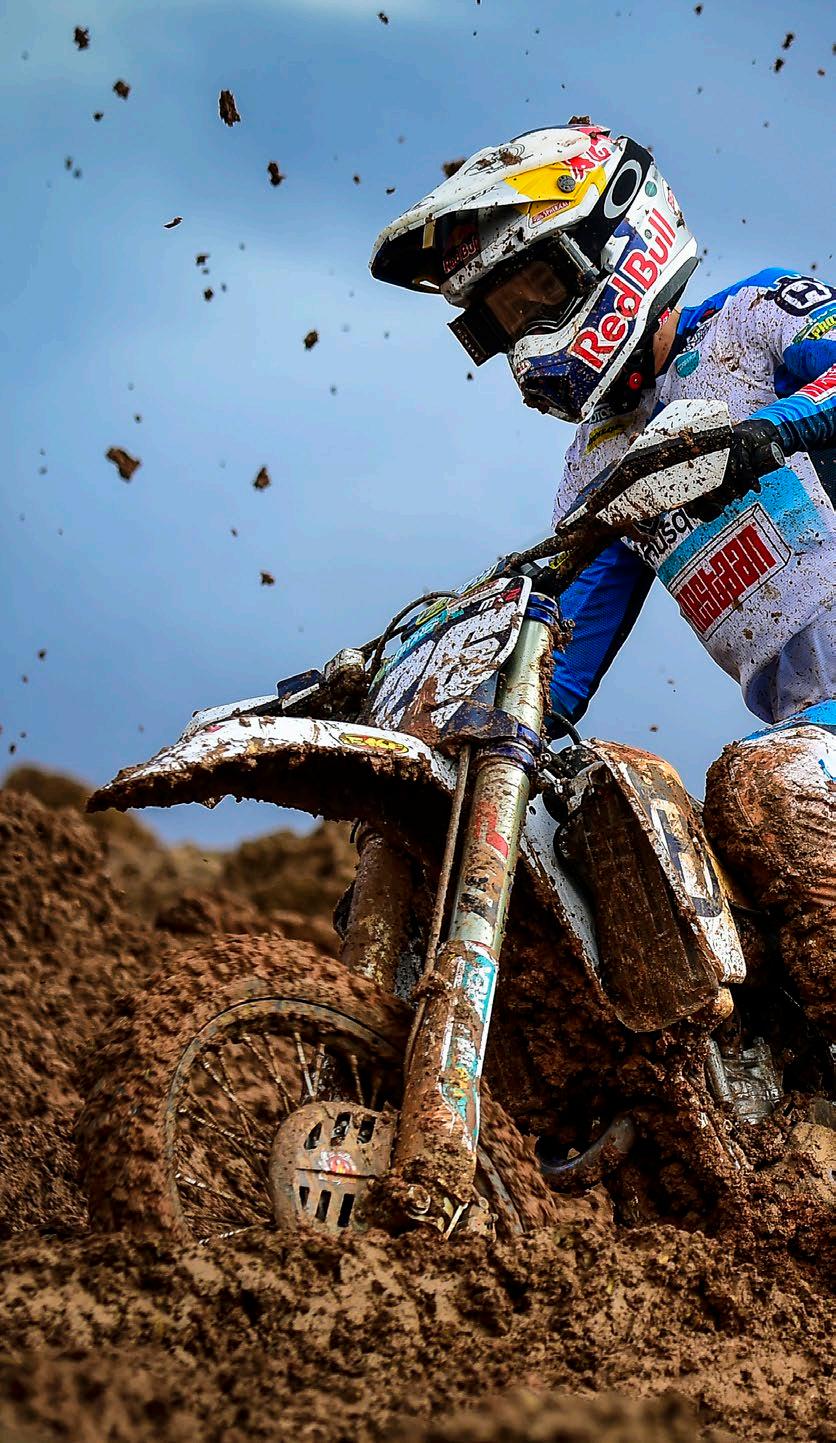
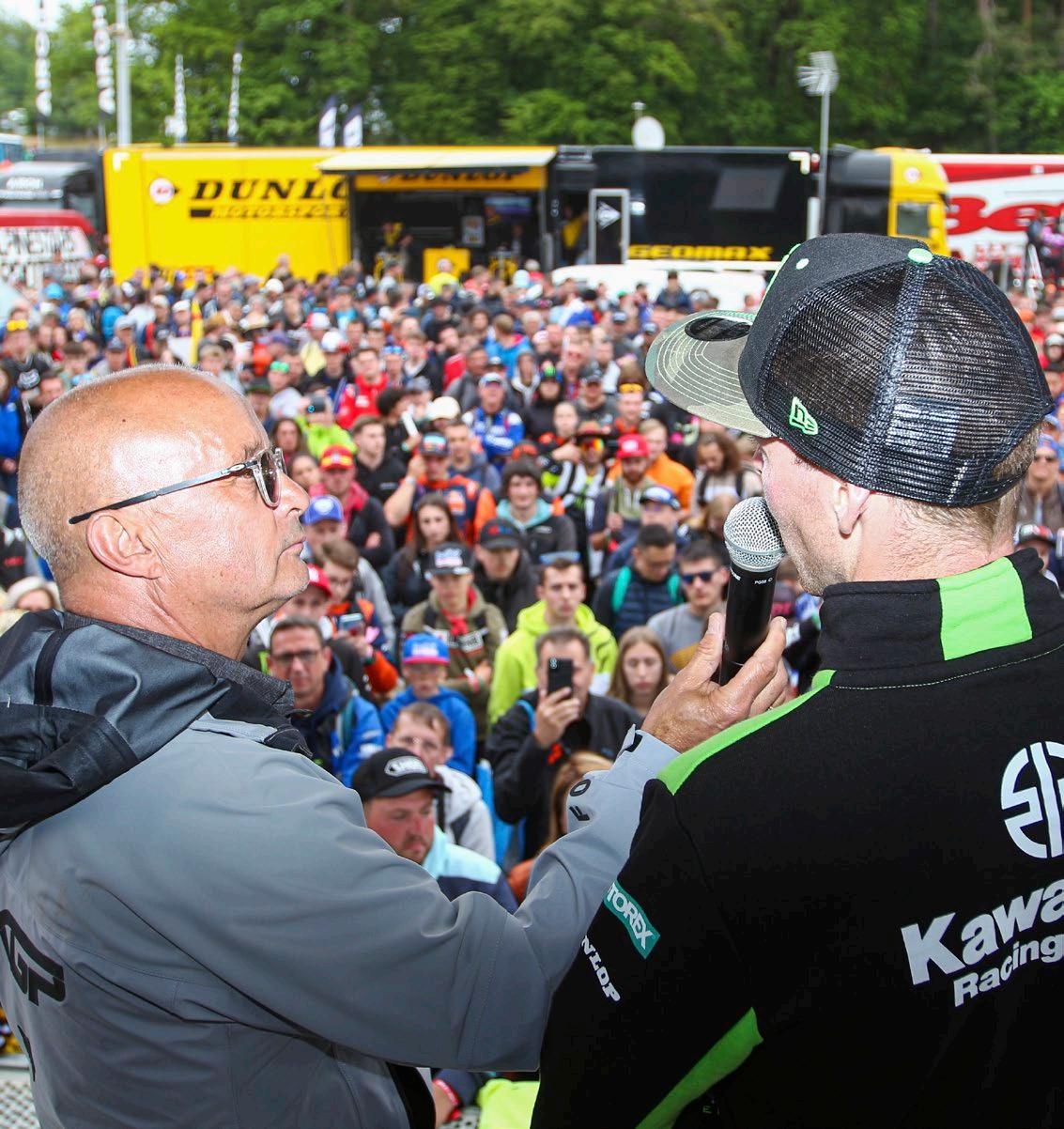


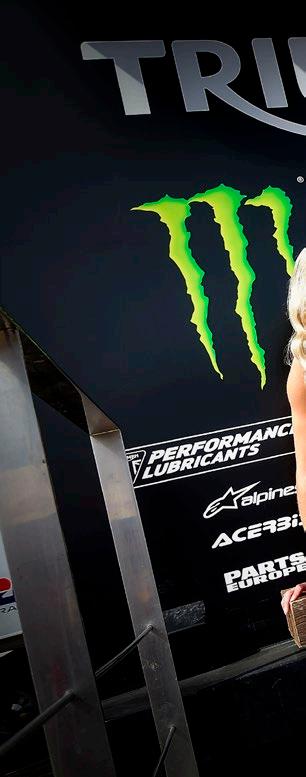





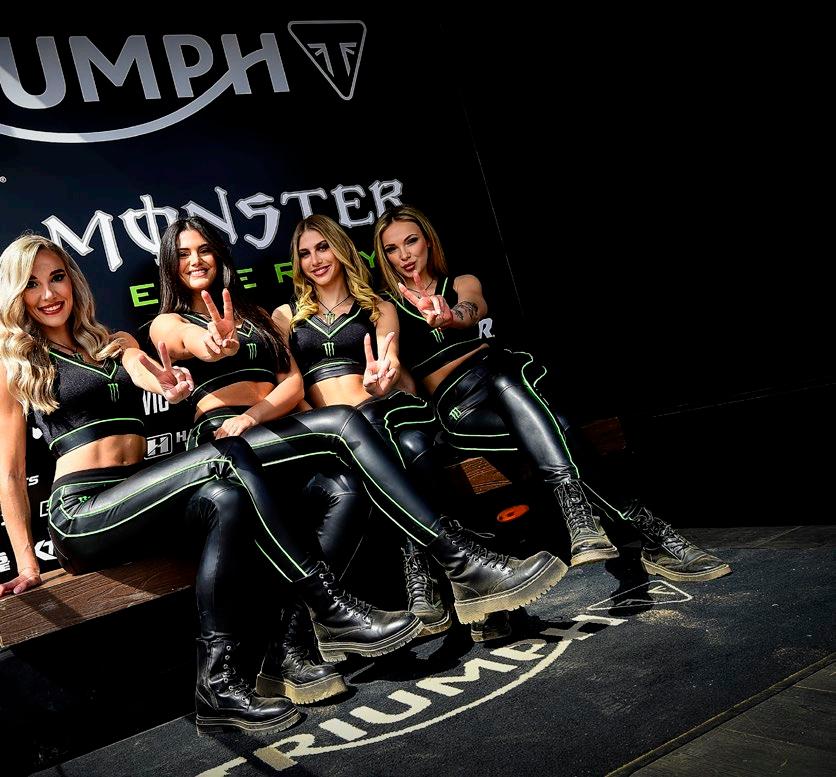




070 HALL OF FAME
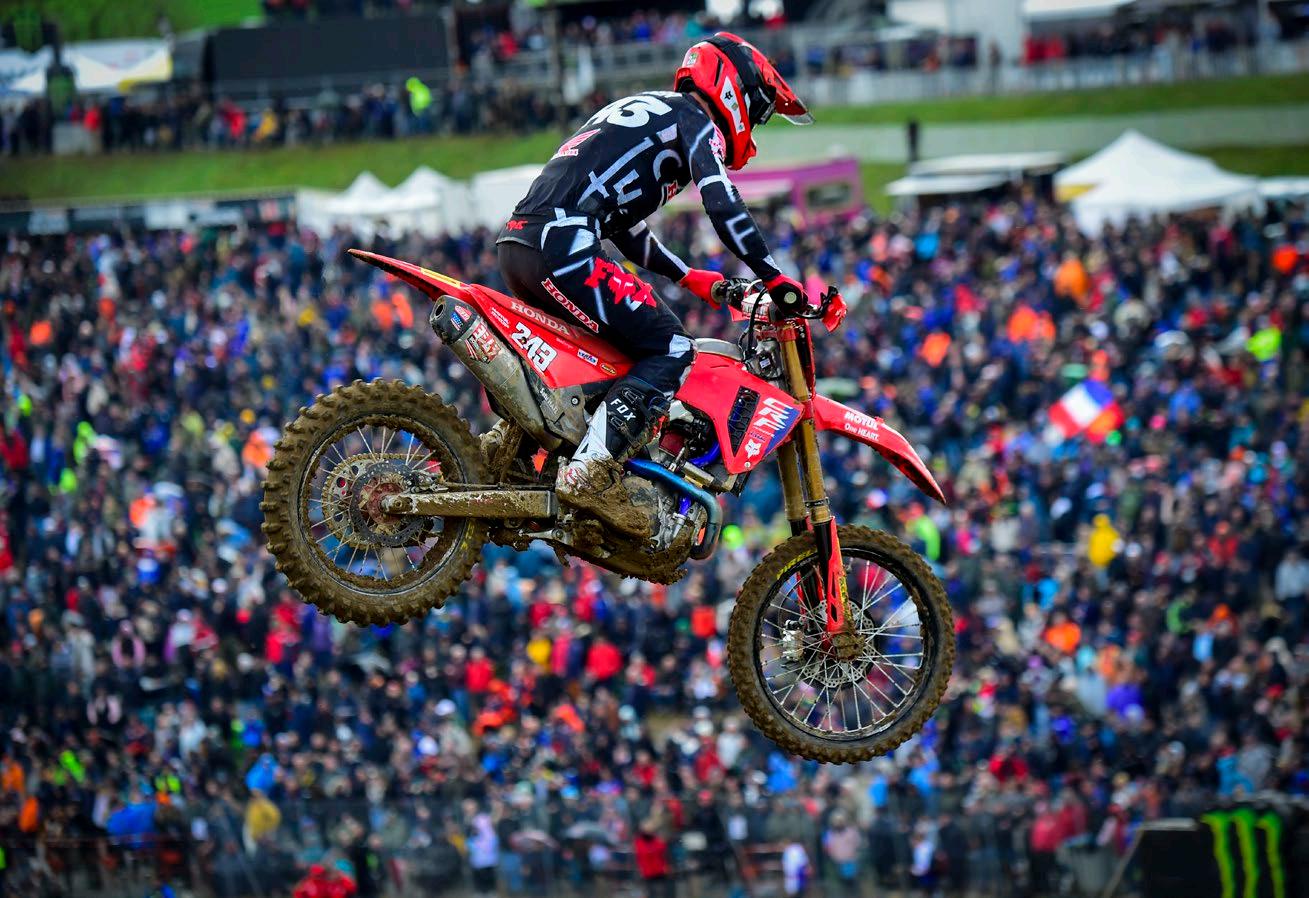
038 RIDER OF THE MONTH
MXGP MAG
Chief Editor: Marionna Leiva Photos: MXGP
INFRONT MOTO RACING MEDIA
World Trade Center II Rte de Pré-Bois 29 1215 Geneva 15 Airport Switzerland

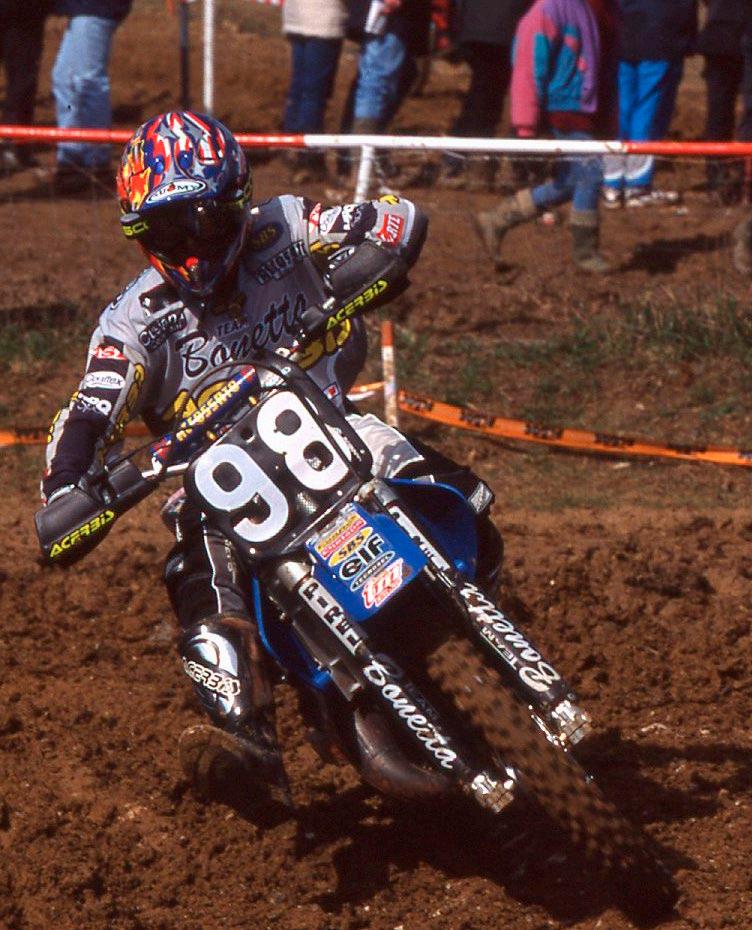

MXGP Mag #137 2025

The articles published in this magazine do not necessarily reflect the official position of Infront Moto Racing.
Then content of this publication is based on the best knowledge and information available at the time the articles were written.
The copying of articles and photos even partially is forbidden unless permission has ben requested from Infront Moto Racing in advance and reference is made to the source (©MXGP).




AS WE JUST PASSED THE FIRST QUARTER OF THE 2025 MXGP SEASON, YOU WILL HAVE THE OPPORTUNITY IN THIS MONTH’S MAGAZINE TO HAVE A RECAP ON THE FOUR LAST GRAND PRIX THAT TOOK PLACE.
After a fantastic opening round in Argentina, the MXGP came back to Cózar, where the final of the 2024 season took place. It was a very challenging weekend as we faced terrible weather conditions during the 10 days prior the event but also during the weekend. What makes our sport so special is probably the fact that we ride in whatever conditions we are facing, and I am very proud that our team, the organizer, and all the stakeholders were able to bring this event to its term, delivering one of the muddiest MXGP races that will stay in the history.
One week later, Saint Jean D’Angely was hosting the MXGP of Europe, and the French fans answered the call of the first of the two Grand Prix that will take place in France this year (the second one being Ernée in upcoming May). The collaboration with the FFM and our historical organizers in France continues to get stronger and targeting long-term growing for Motocross with very good quality of events.
From the French hard ground soil, we then moved to the deep sand of Riola Sardo (Italy), where we had the pleasure to see great races in MX2 and MXGP. This track remains probably one of the most demanding of the calendar and the first sand track of the season.
Finally last weekend, the most awaited MXGP of Trentino, in Pietramurata, rose the bar for one more year. More than 230 riders participated to the event competing between the 125cc and 250cc European Championships, MX2 and MXGP World Championship. Spectators came from all over Europe to enjoy the breathtaking scenary of the
region surrounding the track, situated near Lake of Garda. Italian fans could enjoy the comeback of Antonio Cairoli on the Ducati, and the Slovenian fans turned this race home Grand Prix for Tim Gajser as they came massively to support him!
On the racing side, the MXGP hierarchy starts to take shape with Tim Gajser, who made a gap of 39 points on Romain Febvre after five Grand Prix. But there are still 900 points to be distributed so the road is still very long for the Tim Gajser. Romain Febvre is showing fantastic speed, and you cannot doubt that Maxime Renaux, Glen Clodenhoff and Jeffrey Herlings, who is coming back from injury, and more other riders will continue to put the maximum of pressure on him. In MX2, we had until now fantastic races with many top riders who can compete for the win, in fact 8 different riders won the first 10 races of the season, which gives us great expectations for the rest of the season!
Now it is time for Frauenfeld to host the MXGP of Switzerland presented by iXS and the last of this triple header Grand Prix.
See you in Switzerland.
David Luongo CEO of Infront Moto Racing
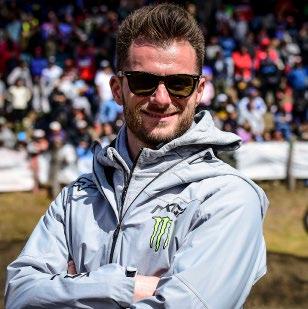

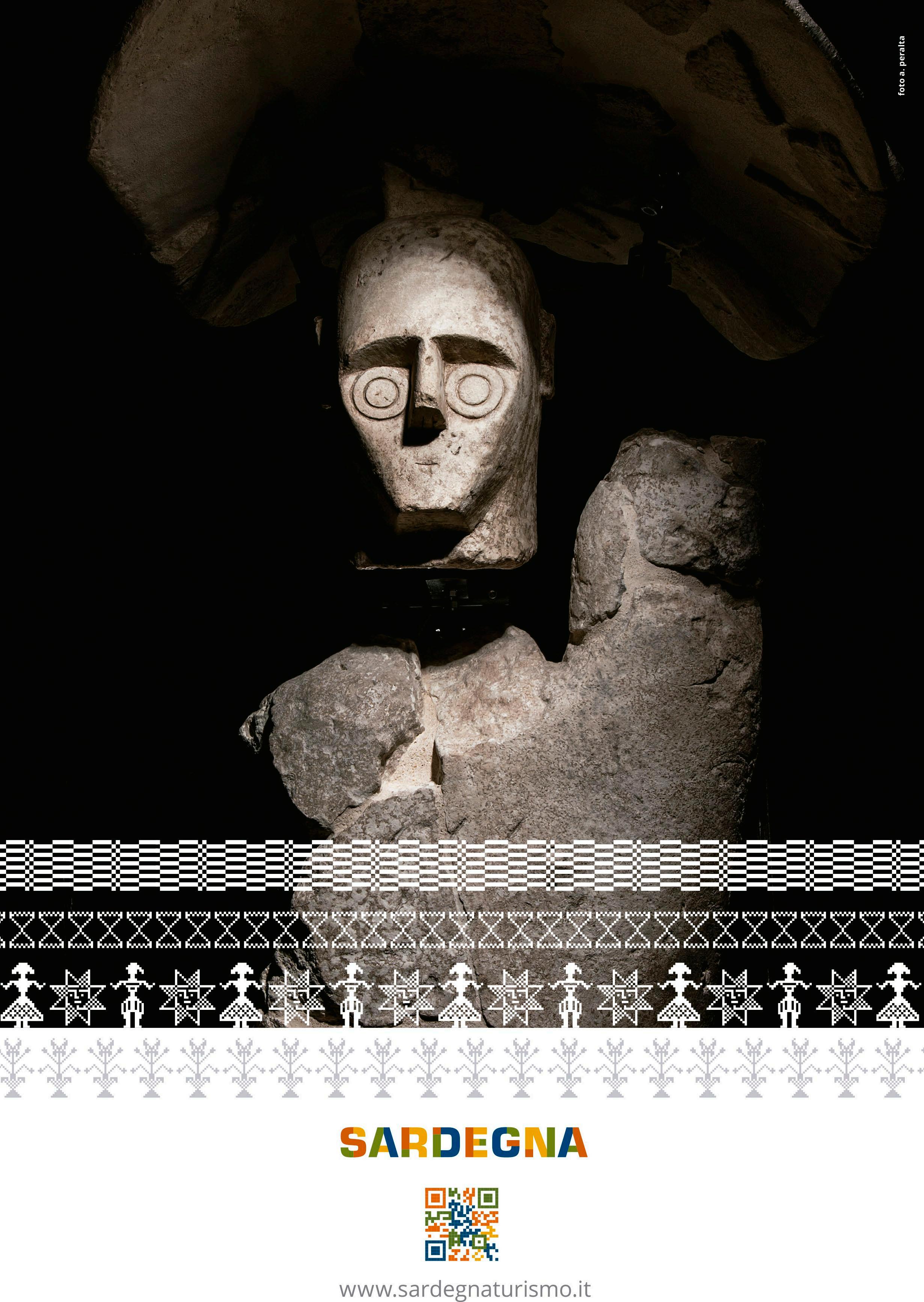

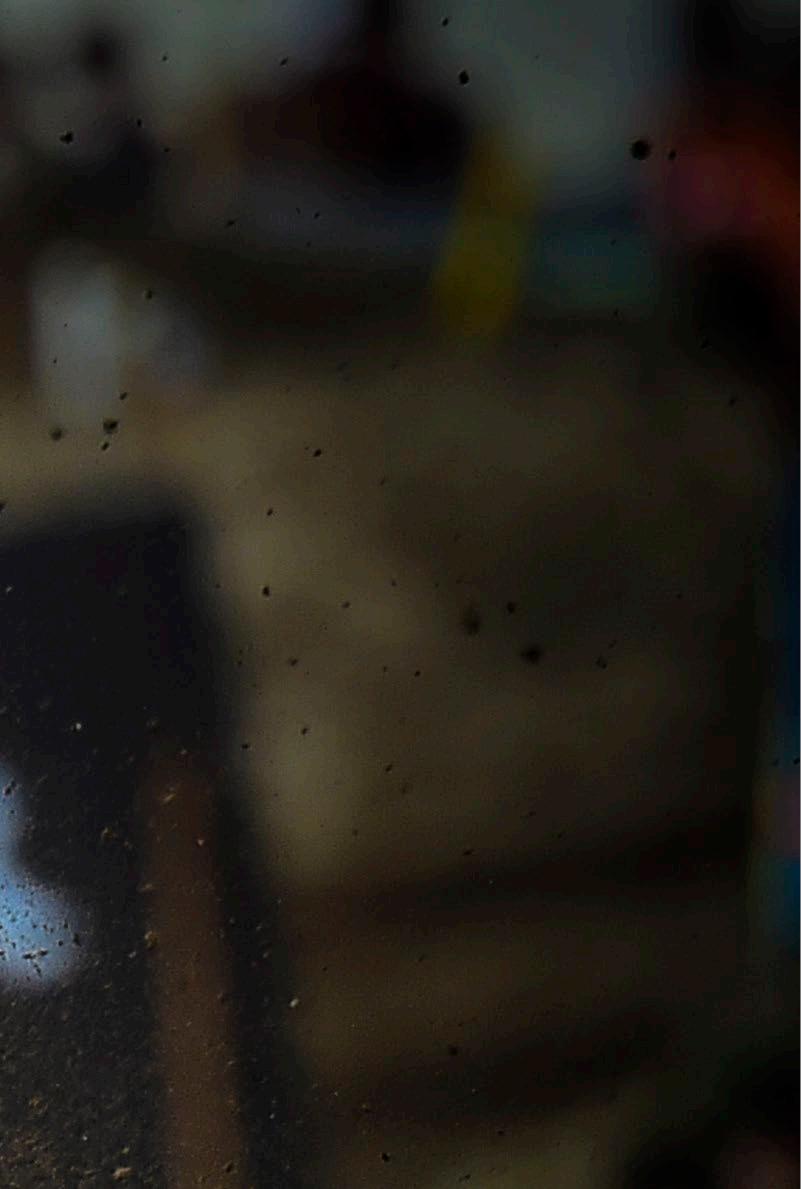
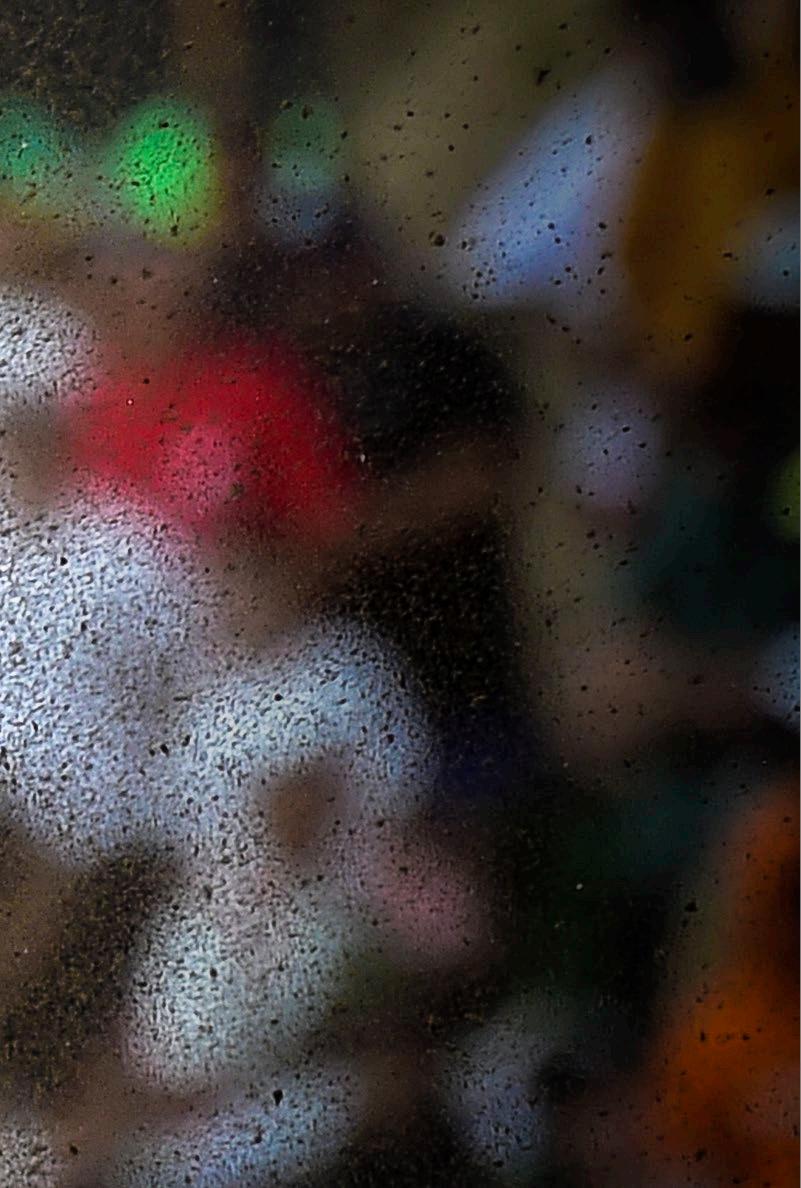
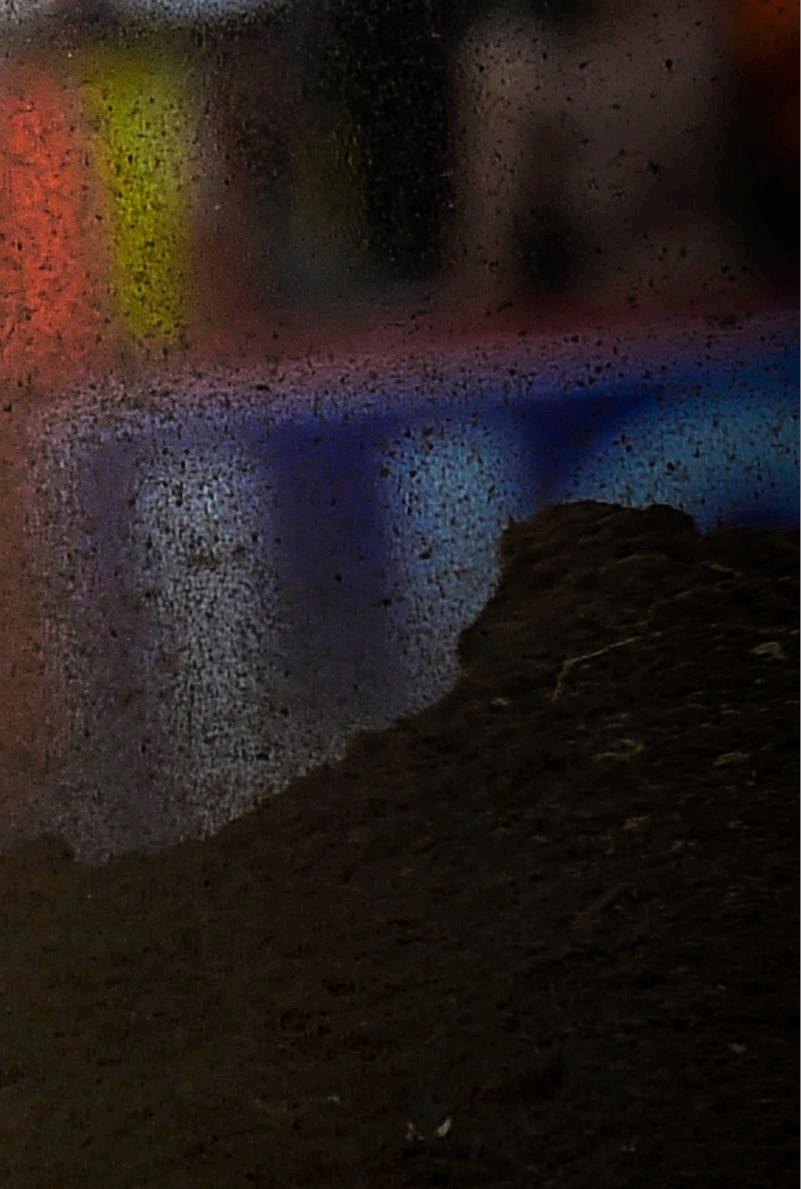

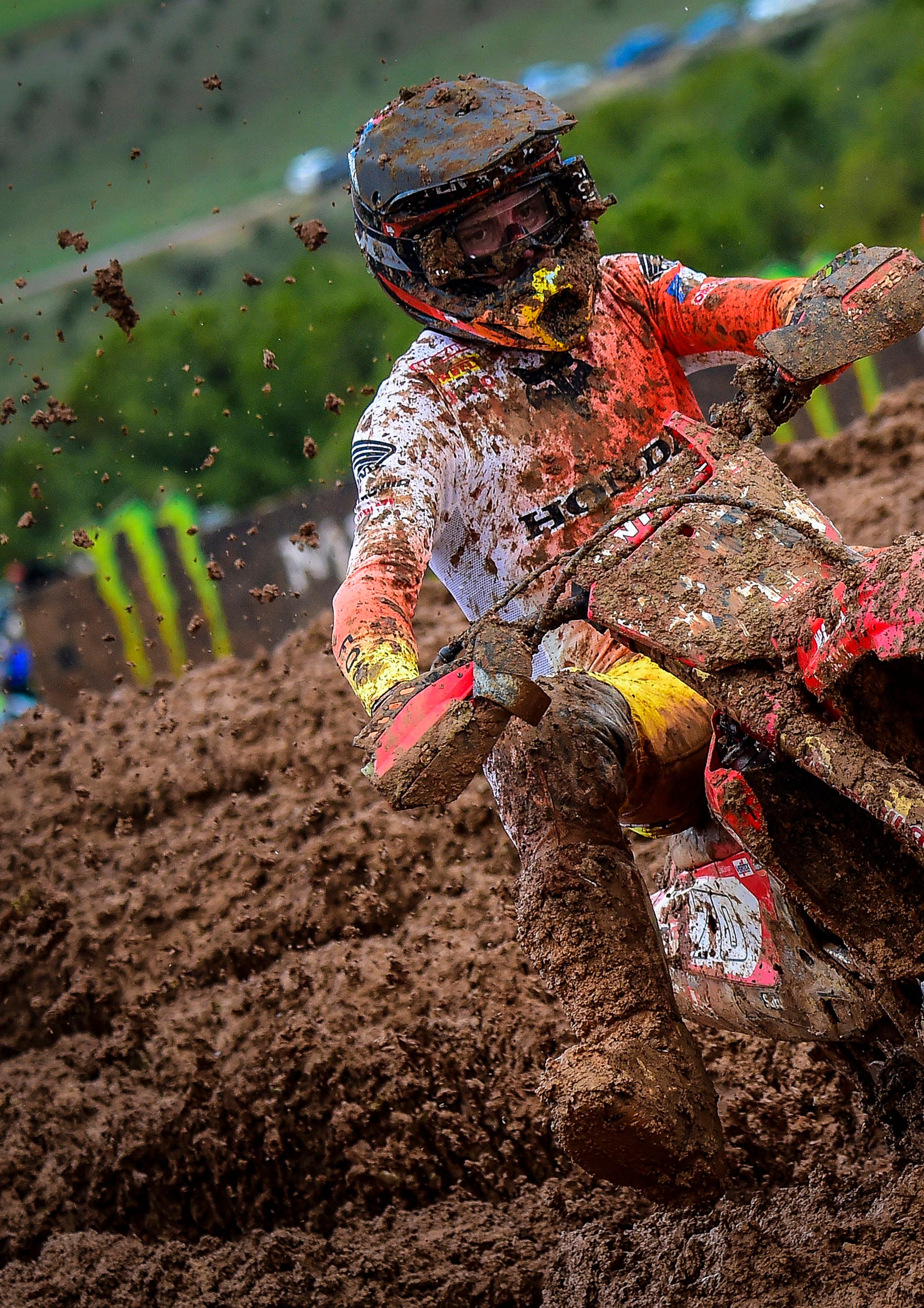

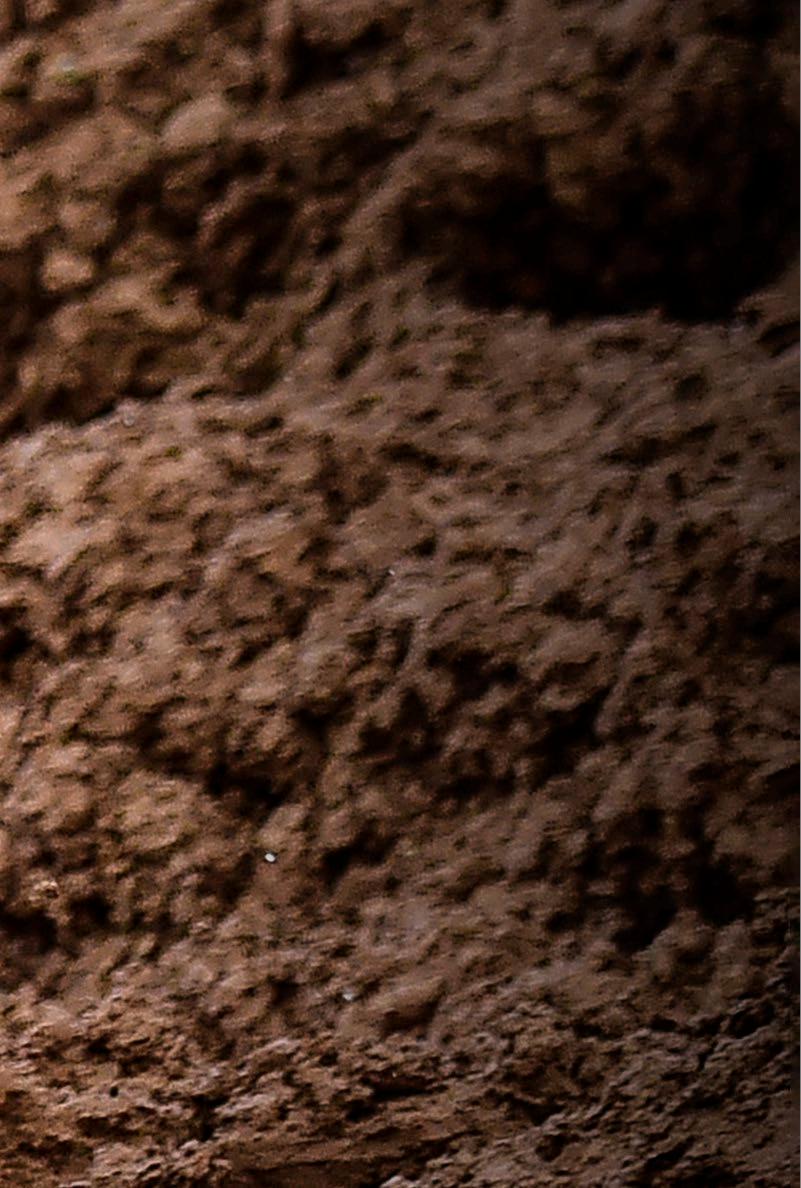
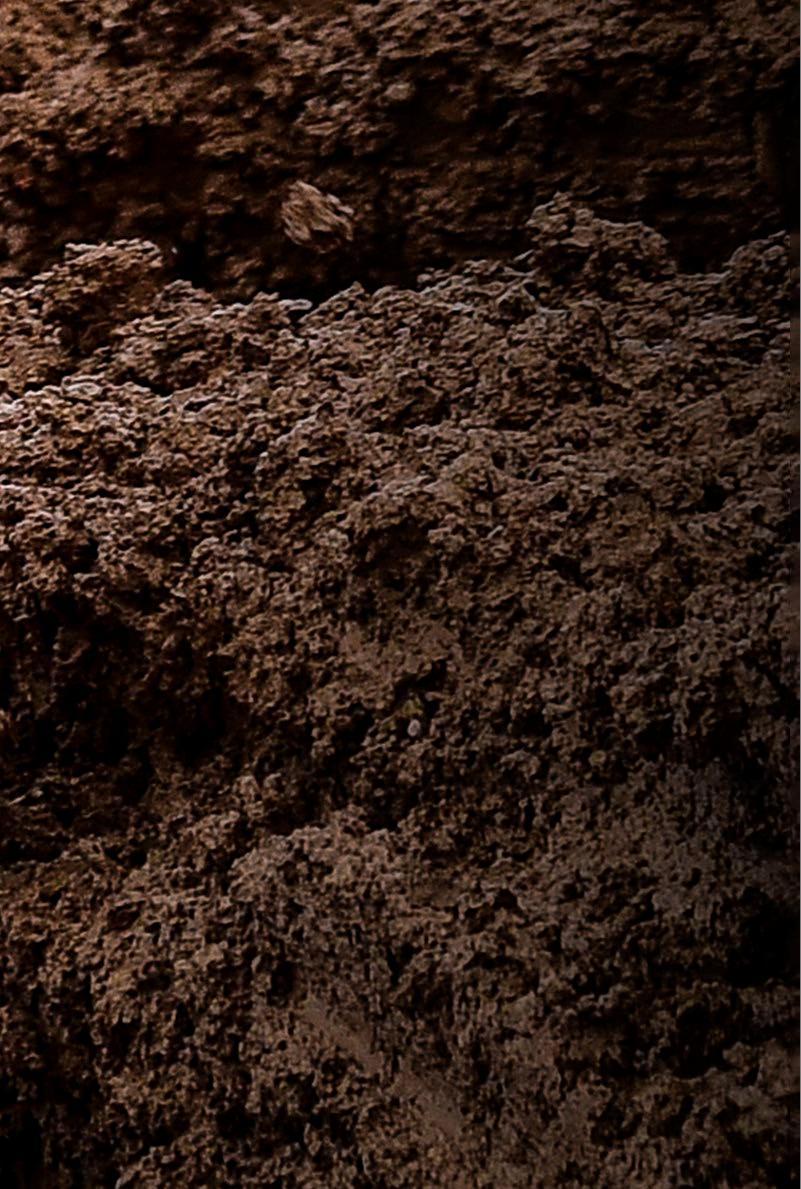



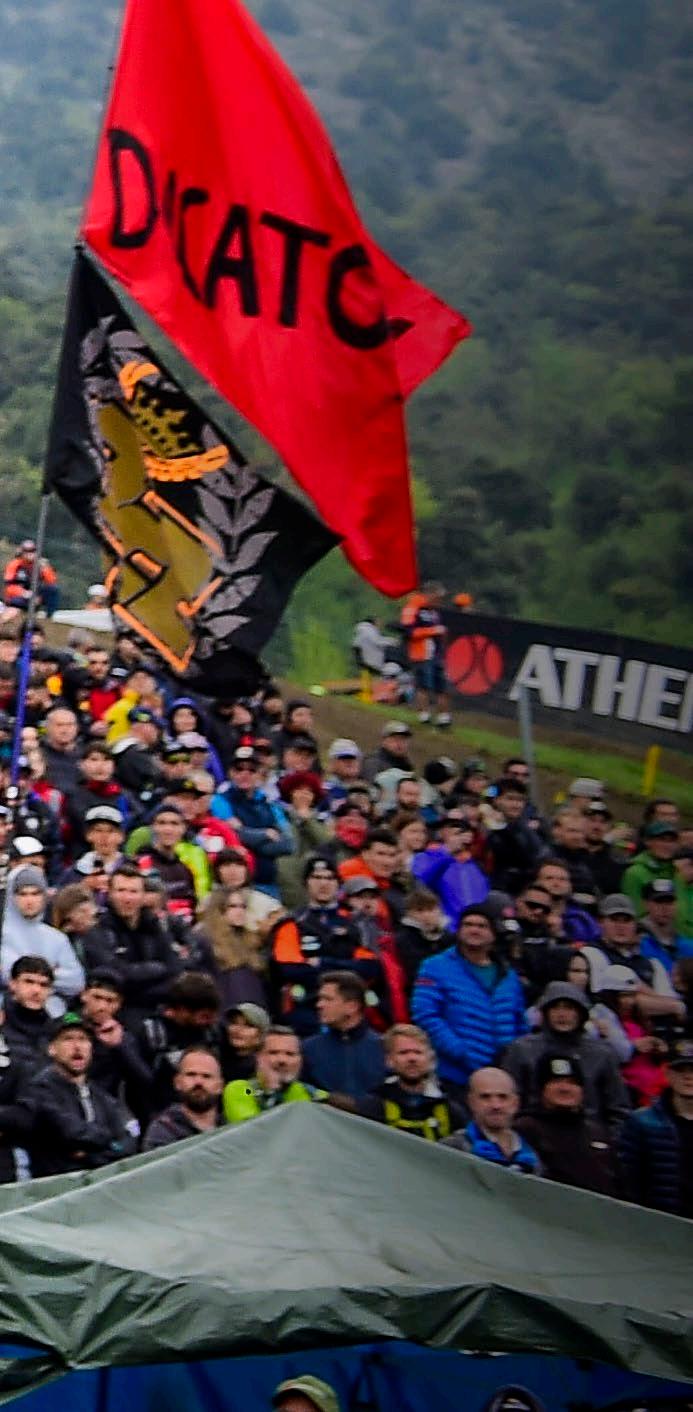
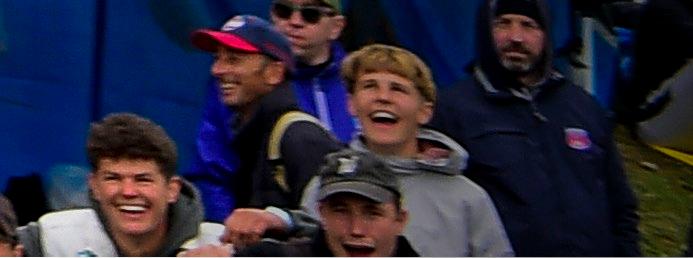

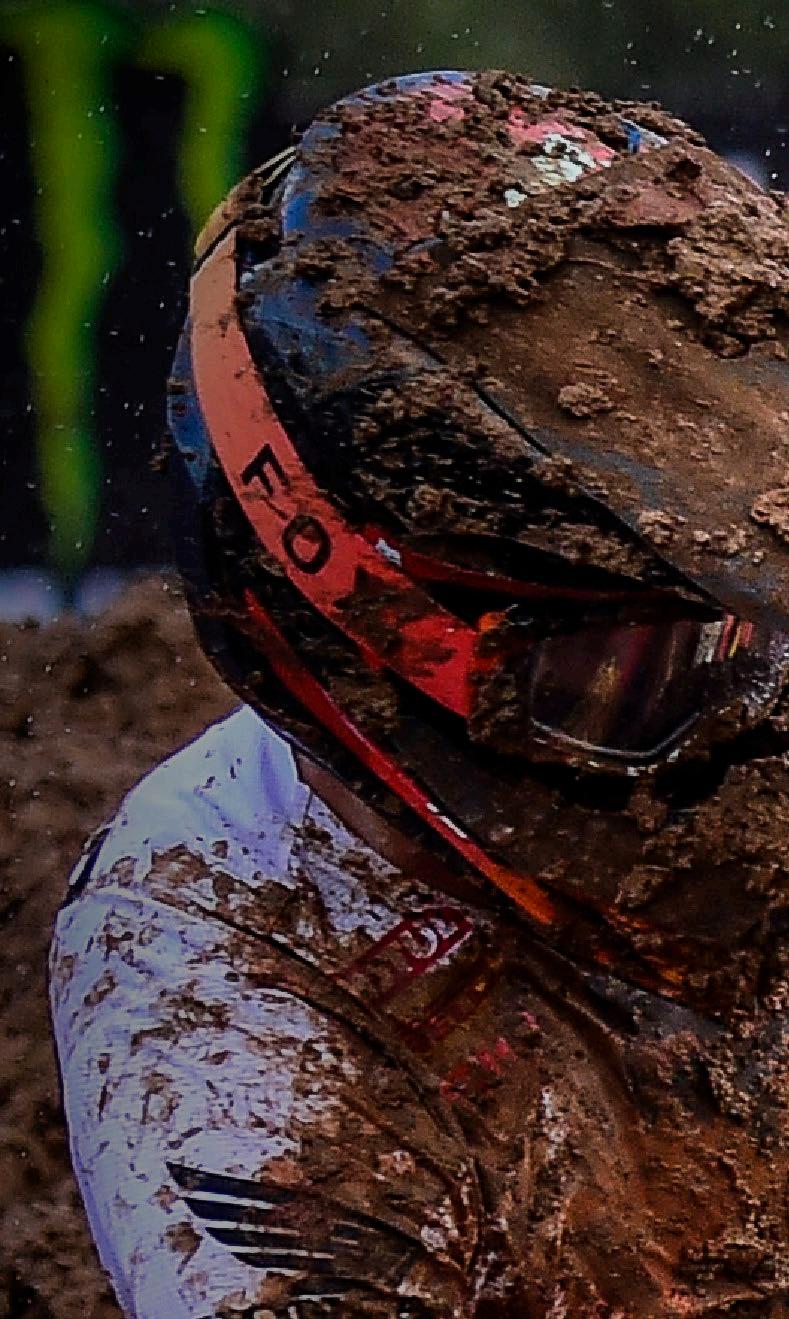


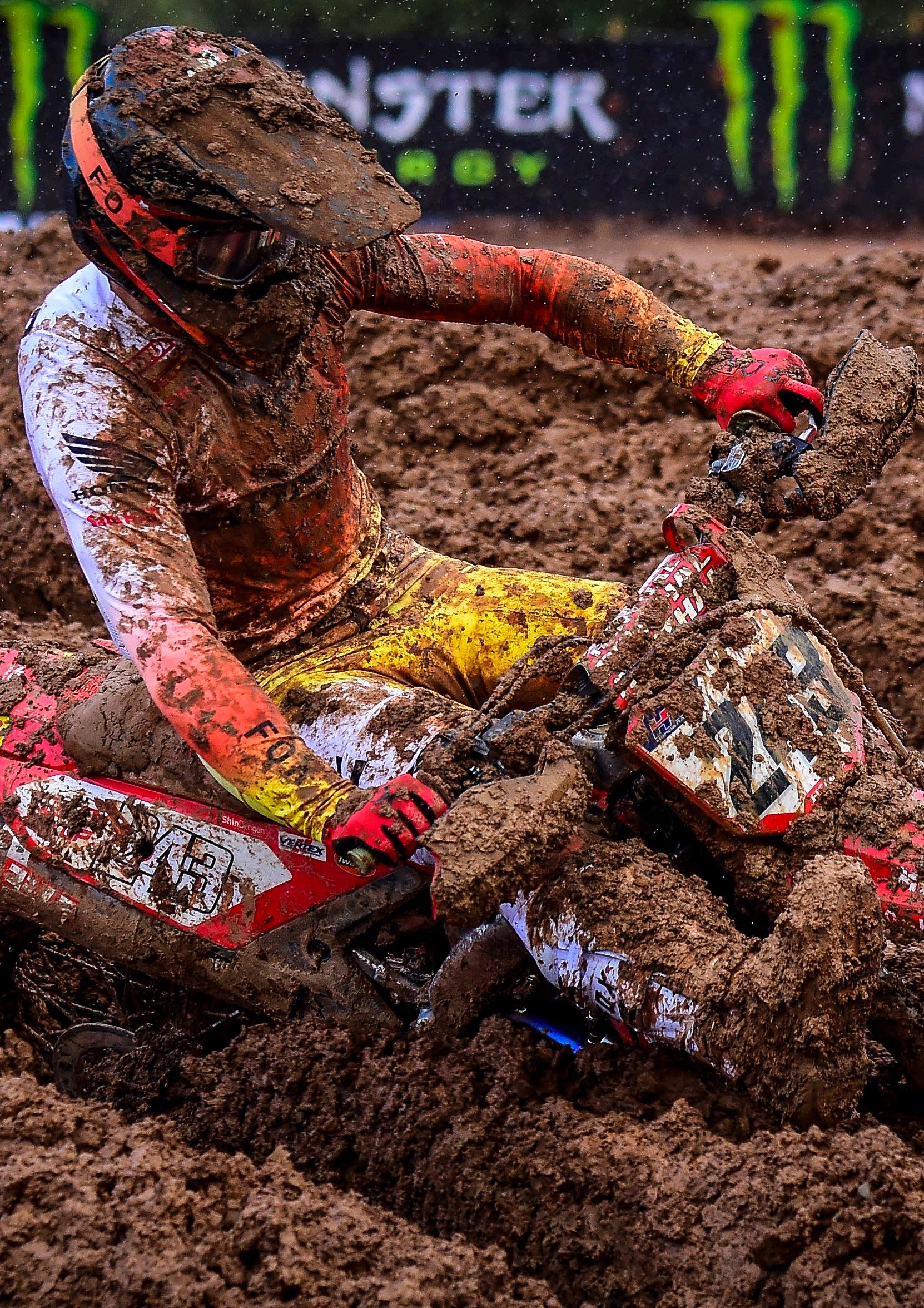
WHEN WE LAST WENT TO PRINT, WE HAD JUST RETURNED FROM THE FIRST GRAND PRIX OF THE YEAR IN ARGENTINA, BUT SINCE THEN WE HAVE WITNESSED ANOTHER FOUR EVENTS IN COZAR, SAINT JEAN D’ANGLEY, RIOLA SARDO AND TRENTINO, AND AS THE SAYING GOES: TIME FLIES WHEN YOU’RE HAVING FUN! WITH A QUARTER OF THE CHAMPIONSHIP NOW COMPLETE, HERE’S A BRIEF RE-CAP OF THE PAST FOUR ROUNDS TO BRING US ALL UP TO DATE.
Motocross is an outdoor sport and so from that side of things we can expect to be held to ransom by Mother Nature every now and then, and in Cozar, sadly, we were. And that was a real shame because since we were last at this venue for the final round of 2024, where we witnessed the crowning of FOUR CHAMPIONS – MX2, MXGP, EMX125 and EMX250 – our MXGP track crew had been hard at work implementing new changes to make the circuit even better.
The bottom end of the circuit had been opened up, making it longer, and as well as that, some of the jumps had also been lengthened. On paper, the changes looked like they were for the better, but with the dirt still soft after all of the hard work, when the rain came, conditions were always going to be tough, especially for the EMX125 riders, who marked the occasion with their opening round of the season, along with EMX250.
However, to coin a phrase – It’s The Same for Everybody – although, some riders managed to have way more fun than others. In a nutshell, the first EMX125 Red Plate holder after two challenging races in Cozar, was
Belgium’s Jarne Bervoets who went 3-2 for the overall victory. In doing so, the Yamaha Europe EMX125 MJC rider stood proudly on the top step of the podium, creating another page of history in the Bervoets’ family album. Jarne’s father, Marnicq, a former GP racer from the late 1980’s to 2002, secured his last GP win on 12th August 2001, meaning the last time a Bervoets rider stood on the top step of the podium was 8618 days prior, or 23 years, 7 months and 5 days. Nice!
Niccolo Mannini (2-7) and Riccardo Pini (6-3) rounded out the podium, on what was a weekend of firsts for all three riders: A first podium and win for Bervoets, and first podium’s for Mannini and Pini. We also saw first-time race winners in the form of Filippo Mantovani of Italy, and Jekabs Kubulins of Latvia, and something tells us that this championship is going to be pretty wide open from start to finish.
EMX250
In EMX250, Adrien Petit out-gunned the established favourites to take his first race win and first overall victory in EMX competition, and all of this on a YZ250 two-stroke as well. Impressive. Behind him, and joining the


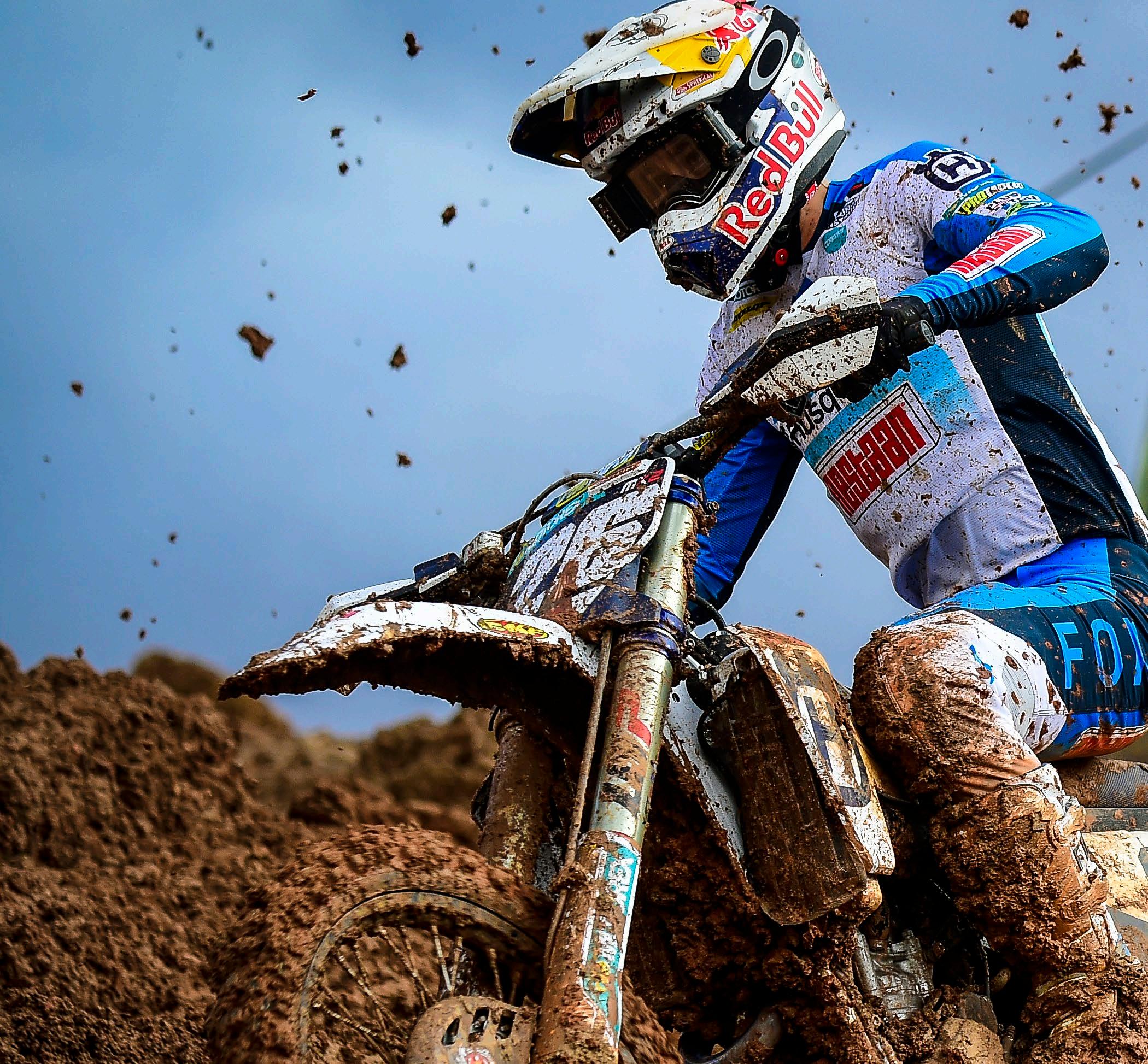
Frenchie on the podium was 2024 EMX125 Champion Noel Zanocz, who guided his JM Honda to 2nd overall with two solid and consistent performances, going 4-3 on the day.
The third step of the podium belonged to Denmark’s Mads Fredsoe who placed 3rd and 6th in his two races. Riders who performed well but did not make the podium were Janis Reisulis who won the first race, and Francisco Garcia who was in 2nd position in the first race when his bike expired. The Spaniard rebounded well to take 2nd in race two. Australia’s Jake Cannon went 2-0 so do not be surprised to see more of him during the season as well.
Kay De Wolf arrived in Spain with the Red Plate, quite fitting really considering the last time he held it and turned it to gold was just five months earlier at this same venue. Although the ‘74’ would remain in Red by the end of the weekend, shots were fired from the other side of the Nestaan Husqvarna rig as his teammate Liam Everts took the overall with a 2-1 performance. Race Two was particularly impressive, beating his nearest rival (De Wolf) by one minute and twenty-one seconds. De Wolf claimed 2nd overall in the GP (3-2) as Ferruccio Zanchi took 3rd. The Honda HRC rider stole the show in race one with his first career race victory, before fighting through
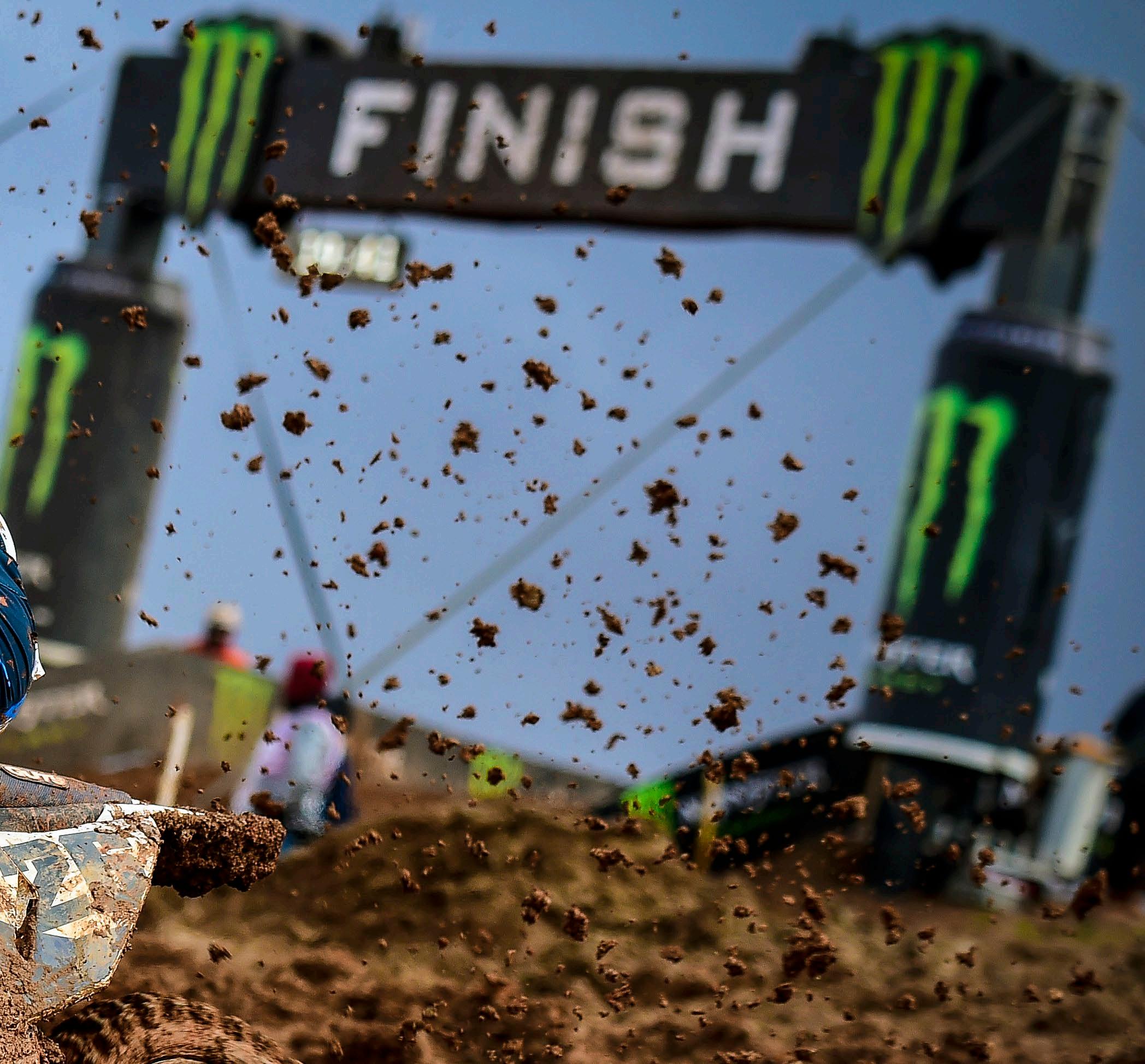
the pack in difficult conditions in race two to secure 10th, which was enough for his first MX2 podium as well.
After taking a solid 3rd overall in Argentina, Tim Gajser was in no mood for hanging around in Spain, as his 1-1-1 scores, across the three races showed. The Honda rider also left Cozar with a 20-point lead at the top of the championship standings. Meanwhile, over at Fantic Factory MXGP, there was cause for a double celebration as Glenn Coldenhoff (4-3) and Andrea Bonacorsi (8-2) rounded out the podium. Whilst ‘The Hoff’ delivered a podium performance for The Netherlands at the 2024
MXoN, Cozar will go down in history as the first podium finish for the Fantic brand. Even better, there were TWO on the box in Spain, proving that if you’re going to do something, you may as well do it right! Congratulations on a stunning performance for the whole team. Oh, and by the way, it was also Bona’s first world championship podium, so double joy for him on a personal level as well.
From Cozar we travelled north to France for the MXGP of Europe at Saint Jean d’Angely, where the threat of more challenging conditions loomed on the horizon. This typical French circuit always delivers on all fronts,
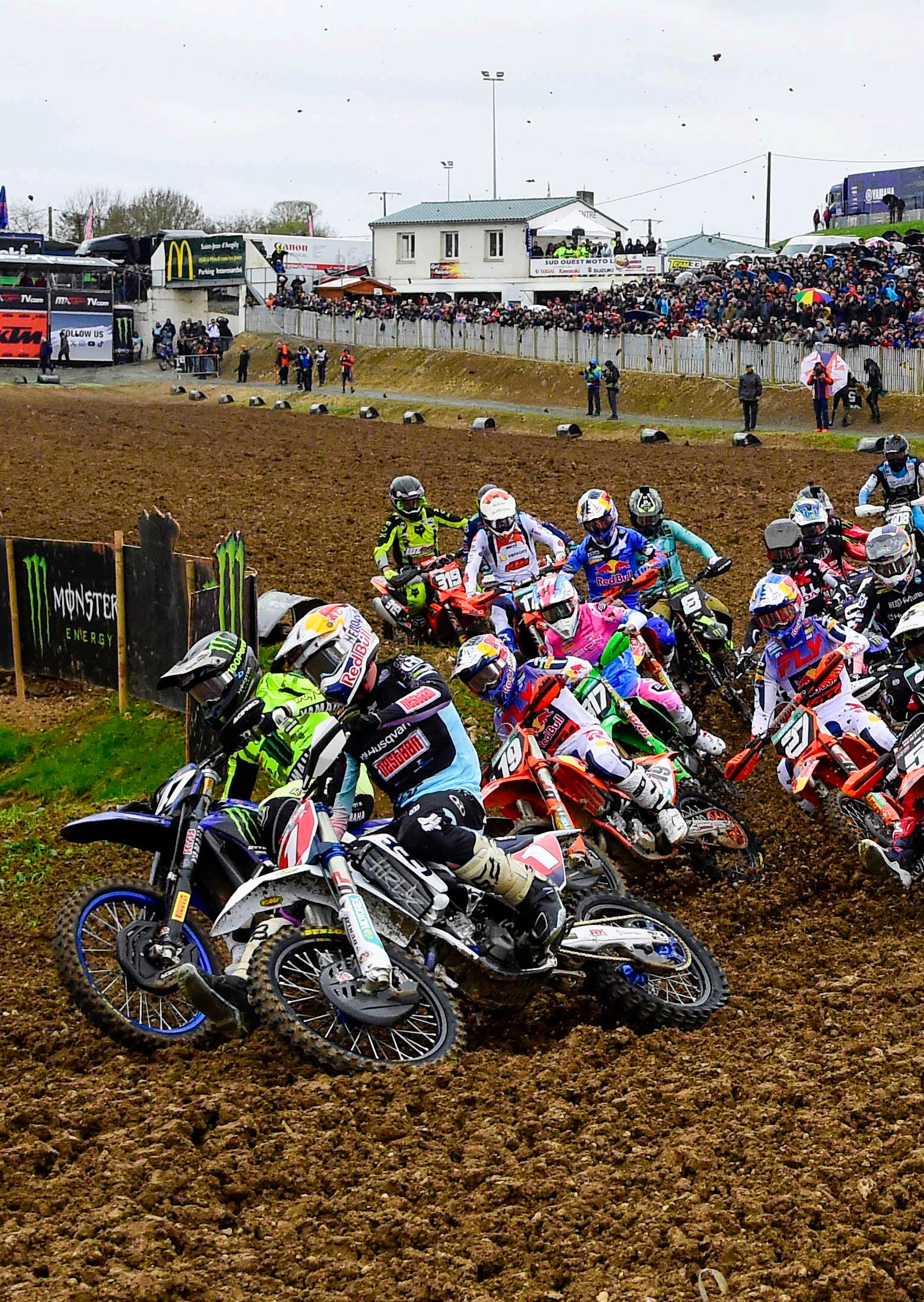
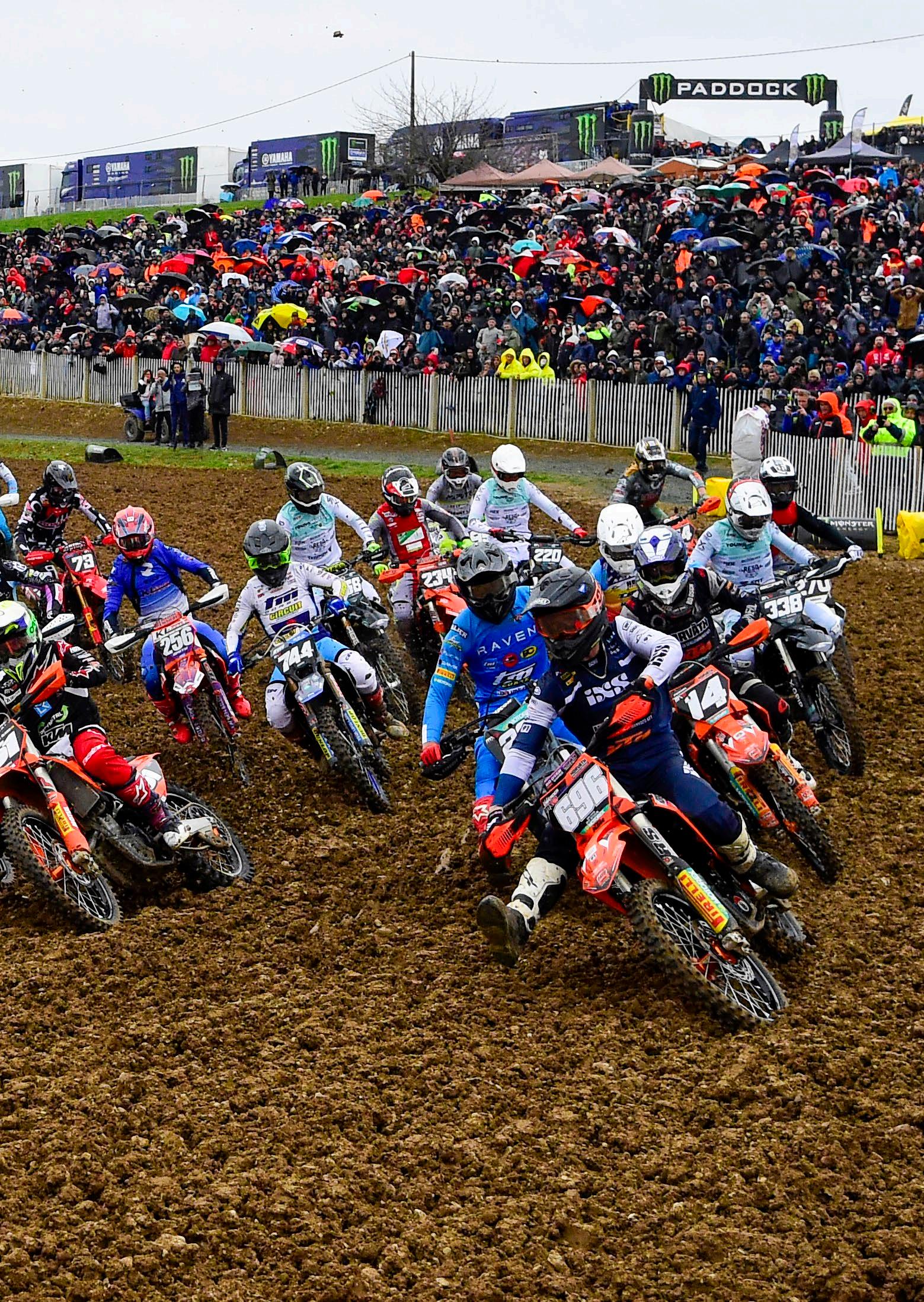
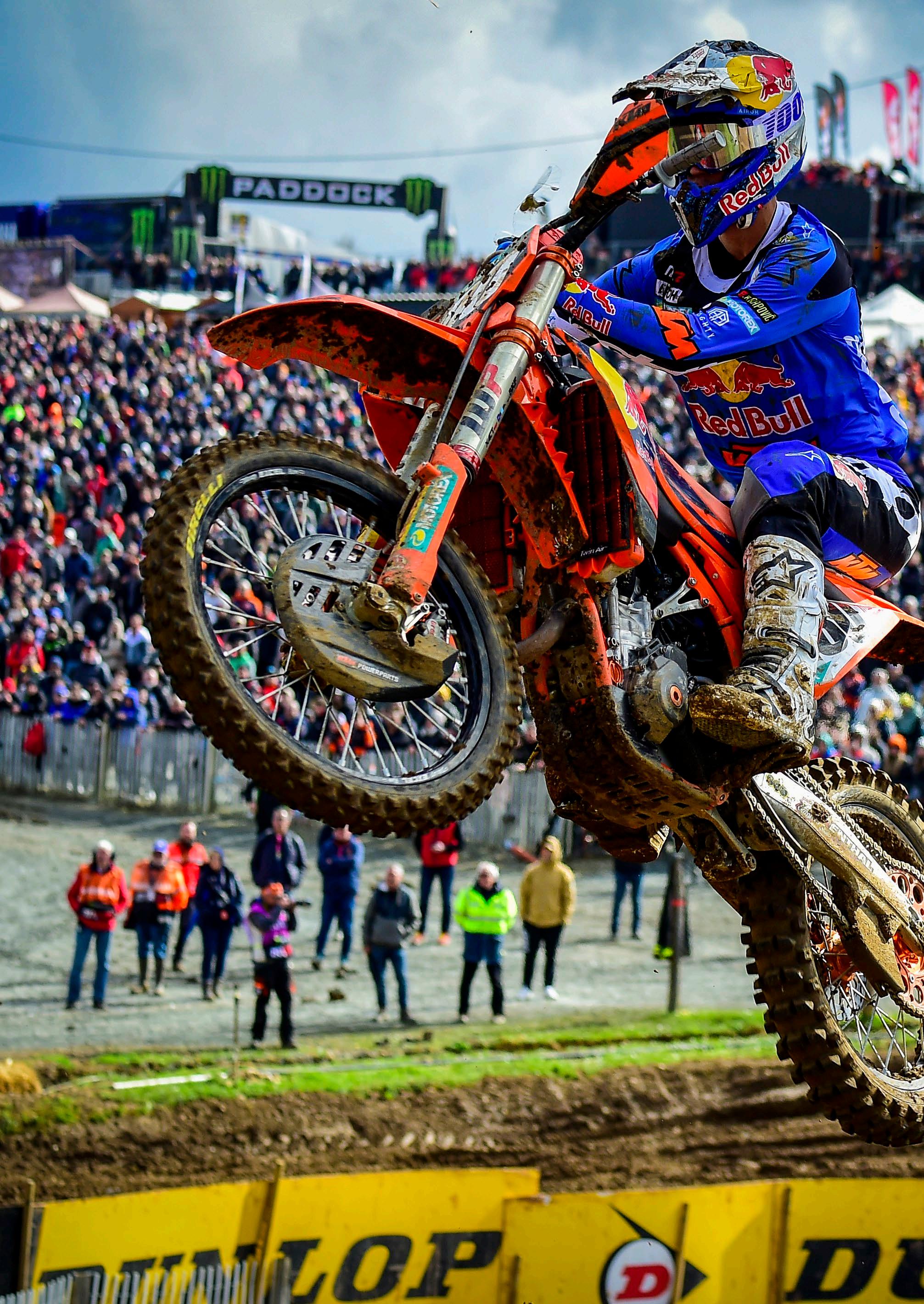

from organisation, to fans, the circuit, and for the most part, the weather. Round three of the championship would be the nineteenth time a GP would be held here, with the first dating back to 1984, and during that time there have been seven French winners: David Vuillemin (1999), Mickael Pichon (2002), Sebastien Pourcel (2008), Marvin Musquin (2010), Steven Frossard (2011), Romain Febvre (2016) and Tom Vialle (2022), and when you get a home win, the atmosphere is off the scale.
Tim Gajser spoiled the MXGP party by wrapping up both races on Sunday, but Romain Febvre gave the fans something to cheer about by posting a solid brace of 2nd place finishes. The rookie to the class though showed he is here to compete, and after Lucas Coenen took the Qualifying Race win on Saturday, everyone stood up and took notice. Two 3rd place finishes on Sunday showed a new, mature side to the young, exuberant Belgian, who enjoyed not only his first MXGP race win (Saturday) but also his first premier class podium (3rd) on Sunday.
Mattia Guadagnini was the best of the rest, pushing his aruba.it Ducati to 4th for the second time this season, posing the question: How long before we see a Ducati on the podium in 2025?
Kawasaki Racing Team’s Pauls Jonass took 5th for his best finish of the season for his new team, whilst the hero of Argentina, Maxime Renaux struggled to 7th overall. However, after the GP, the former MX2 world champion posted on his social media that he had actually broken two metacarpals in his right hand just before Cozar which required surgery, so all things considered, 64 points from two rounds that he might have missed, may turn out to be crucial.
In MX2, and for the third time in three rounds, we saw another Red Plate holder when Liam Everts capitalised on his team-mate’s misfortunes (bike failure) in the Qualifying Race. The two-point advantage though was nothing much to brag about, but hey, if you have it and feel that you’ve earned it then why not enjoy it? Andrea Adamo (2-1) took the overall victory and his first win since round fourteen, in Finland on 30th July 2023, which was certainly long overdue. Simon Laengenfelder (1-3) also had the opportunity for the win, but threw it away whilst leading the second race, but you sense his time will come, sooner rather than later.
Twelve months prior to this GP, Thibault Benistant suffered a heavy fall which resulted in a significant concussion. Fast forward to 2025 and ‘Benni’ was the darling of the crowd in Saturday’s Qualifying Race, winning by more than seven seconds. When Laengenfelder threw away the lead in race two on Sunday, the French #9 made his way past Everts to take over the top spot for the next eight laps, before Adamo passed him for the lead with four laps to go. If the French want to see anything, it’s passion, and Benistant certainly raced with passion that weekend, and his place on the third step of the podium (5-2) was justified. Everts might have just missed out (3-5) but the Belgian had done enough to come away from France with Red Plate still attached to his motorcycle.
Janis Reisulis (1-1) was the standout performer in EMX250, which netted the 2024 EMX125 Champion his first EMX250 win. Joining him on the podium was the first-round winner Adrien Petit (2-2) who retained the Red Plate, with Noel Zanocz (5-3) maintaining his 100% podium streak. In EMX125 presented by FMF Racing, home rider Mano Faure delivered the goods with a 1-4 display that took him to the top step for the first time in the class, and where better to do it than at home? Niccolo Mannini’s consistency was rewarded with 2nd overall as the Italian went 3-3, but even better than that was the fact he and the TM Moto CRD Motosport team which he rides for, came away with the Red Plate. And, after a nervy start, Hungary’s Áron Katona secured his first EMX125 podium with 3rd overall after going 12-1.
After a one-week break, the travelling MXGP circus headed south to the beautiful island of Sardegna and the deep sands of Riola Sardo, where for the first time this year we got to see what the women had been up to during the off-season. The first big announcement came when four-time world champion Courtney Duncan announced that she would not be lining up due to health reasons, with no timeframe given as to when we could expect to see her back behind the gate. Get well soon champ.
Defending champion Lotte Van Drunen hadn’t raced any pre-season events due to a crash whilst in the USA in the off-season, and so there were one or two question marks hanging over the Queen of Sand heading into the season opener, although, as it turns out, she needn’t have worried. One thing we didn’t know until after the GP though was that the

‘401’ had been sick all week prior, and had lost around 4kg’s as a result, so to go 1-1 was unexpected, even by her. Shana van der Vlist (3-2) impressed for 2nd overall after taking five months off after the round in Germany last year, where she fell and dislocated her shoulder. The time was also spent getting surgery on a troublesome ankle injury from 2023 as well, so after a much-needed health pit stop, the Dutch girl was good to go.
Rounding out the podium was Lynn Valk (2-3) who admitted afterwards that she should have won the GP had it not been for a fall whilst leading the second race, but no doubt the Venrooy KTM rider will bounce back and find the top step during the 2025 campaign.

EMX125 were in action again for the third successive round, and after taking his first podium in France, Áron Katona secured his first overall career victory with an impressive double-race win on his Racestore KTM Factory Rookie machine. Joining him on the podium was his team-mate Nicolò Alvisi, who went 2-4. A rider who should already have a few podiums under his belt is Cole McCullough but for one reason or another, the box has eluded him on several occasions. In Riola though, the young Northern Irish rider took the opportunity with both hands, securing a 5-3 finish on his Dream Team Fantic. Can he do it again though, now that he has the first one off his back?
If anybody was in any doubt about the defending MX2 world champion’s intentions this year, then Sardegna would have put of those doubts to bed. Or at least for now anyway. Kay De Wolf may have had a few issues in the Qualifying Race on Saturday, but he more than made up for it in Sunday’s races by sweeping to an impressive 1-1 for the first time this season. Prior to Riola, we had seen SIX different race winners in MX2 in the first three rounds, so it’s possible that the champ wanted to change that stat. And, he did!
Camden Mc Lellan took his Monster Energy Triumph to 3rd overall in Sardegna twelve months ago, and this time he went one better, going 2-3 for 2nd overall. Time will tell if

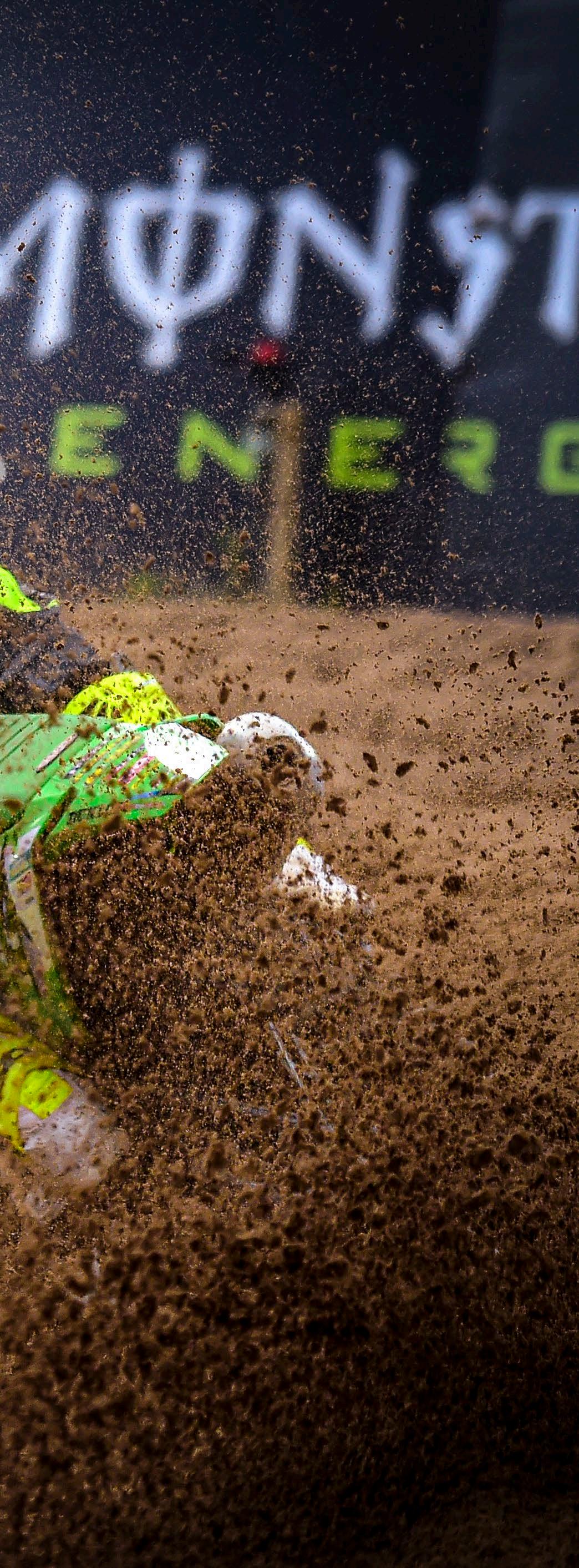
he has the belief to do it again, away from the sand. Andrea Adamo came away from Sardegna with 3rd overall after going 4-2. His second race was impressive, and it took until three corners to go of the final race before De Wolf made the pass for the win. Whilst the race win might have eluded him, the Italian’s speed hasn’t, and the former champ will be looking to build on his back-to-back podiums from the last two rounds.
Sardegna saw the return of The Bullet, as Jeffrey Herlings made his long-awaited return to the series after off-season knee surgery. With next to no time on the bike, nobody was expecting anything too impressive, but over the course of the weekend Herlings’ pace improved as he shook off the effects of arm pump to find himself leading for three laps in Race Two. The only way is up from here for the ‘84’
Romain Febvre was the overall victor for the first time since Holland 2023, and he did it with a 4-1, holding off a charging Tim Gajser for much of the second race. Febvre’s second race win was his 50th career race victory, so it was nice to celebrate the GP win with such a milestone race win. The Frenchman joins Britain’s three-time world champion Dave Thorpe on 22 GP wins.
There was a second podium in four rounds for Glenn Coldenhoff (2-3), making it three in total now for Fantic in 2025, and the way things are looking, we can expect to see more from this team moving forward. Third overall was Tim Gajser, who struggled to 5th in the first race, but after one or two changes ahead of Race two, the Slovenian was back to his usual self. He and Febvre put on a great display of riding for the fans, but it was Febvre who had the last laugh with the overall win. Next stop, Trentino.
The final round of our three-in-a-row brought us to the Monster Energy MXGP of Trentino in Pietramurata, where no fewer than 201 riders showed up across all four classes, our busiest weekend of the year so far. The weekend also marked ‘quarter-distance’ in the championship.
It’s been a busy start for the EMX125 riders with Trentino being the fourth round in a row
for the young riders. Perfect weather leading into the weekend meant a nice, try track for Saturday for everyone. Race One saw a first ever career race win for Northern Ireland’s Cole McCullough on the Dream Team Fantic and in doing so, pulled himself up to 7th in the championship standings. However, a DNF in Race Two meant a potential second podium in successive rounds went begging, and he now heads to Switzerland tenth overall in the championship.
Mano Faure was the most consistent, picking up his second overall victory of the campaign (2-4) on his Yamaha Europe EMX125 MJC machine, and the young French rider sits 4th in the overall classification. Joining Faure on the podium was Niccolo Mannini (7-1), who took his first career victory in the second race, and Francesco Bellei (5-2), who claimed his first podium of the season. Series leader Áron Katona took fourth overall and holds a twentyfive point lead heading into Round Five in Switzerland.
In Timed Practice, a crash took out the Red Plate holder Adrien Petit with a broken left collarbone, and with Janis Reisulis starting the weekend just one point behind the injured Frenchman, the Latvian was poised to make big gains at the top of the standings. Reisulis fell in turn one at the start of the first race, but clawed his way back to 2nd by the time the chequered flag fell, as Venum BUD Racing Kawasaki rider Francisco Garcia cruised to his first career race win. Dirtstore Triumph rider Billy Askew led for three laps before being caught by the Spaniard, but the Brit held on for 3rd, his best ever finish in the EMX250 division.
Race Two threw a real spanner in the works though, and the first rider to suffer misfortune was the points leader, Reisulis, who went out of the race on Lap 2. With Noel Zancoz just eighteen points behind going into the race, the JM Honda rider was looking to gain some ground, but after a poor start, the Hungarian fell on Lap 3 to 36th, before making his way to 19th in muddy conditions. An opportunity wasted for the ‘716’.
Garcia won his first ever EMX overall with 1-7 places, followed by Alexis Fueri (5-2), who guided his Ghidinelli KTM to not only his first points of the season but also his first podium since 2022 when he was in the 125 class. Another first-time visitor to the podium was RFME Spain National Team GASGAS rider, Adria Monne. The Spaniard failed to score in Cozar, placed 18th overall in Saint Jean and with
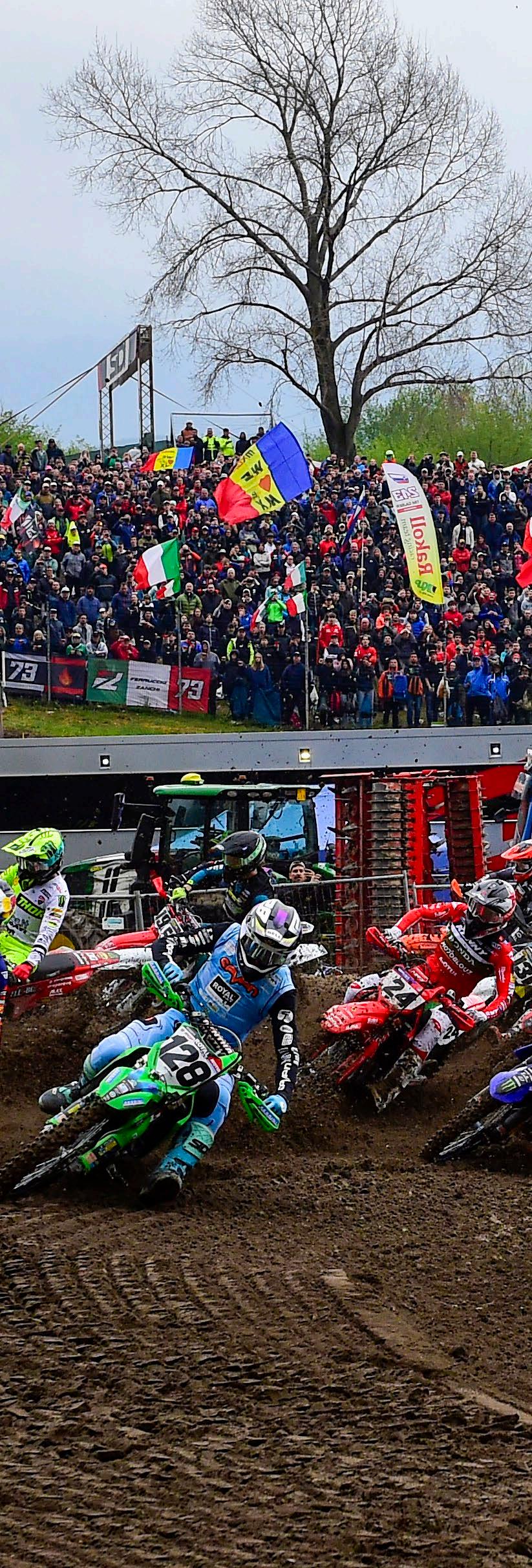

6-6 finishes in Trentino took 3rd overall. Despite his DNF, Janis Reisulis holds a sixteen-point advantage over Noel Zanocz, with Adrien Petit just five points adrift in 3rd. Garcia climbed from 7th to 4th.
MX2
Kay De Wolf arrived in Trentino with a slender eight-point lead over Simon Laengenfelder, with Liam Everts just two points behind the German. Italy’s Andrea Adamo was another four points further back but was looking to impress in front of his home fans.
In a nutshell, Adamo claimed his second overall win of the season (3-2) from De Wolf (2-4) and Thibault Benistant (12-1), and whilst they celebrated on the podium, there were a few riders who were left disappointed in one way or another. Camden Mc Lellan finally claimed his first career race win with a start-to-finish victory in Race One, but then he fell from 4th in Race Two, his chances of consecutive podium’s was over.
Liam Everts, who was 4th in Race One, fell at Turn 2 at the start of Race Two after clipping the rear wheel of his teammate De Wolf. When the Belgian remounted, damage to the bike after it had been hit by another rider, meant he could not continue, and the ‘26’ dropped from 2nd in the championship to 4th, and is 28 points off the lead. Sacha Coenen, who was
9th in Race One, found himself on the podium as he led Race Two, but the KTM rider fell on Lap, eventually finishing 7th in the race and the overall.
On a weekend when nine-time world champion Antonio Cairoli made a surprise return to racing for aruba.it Ducati, two riders showed once again that they are very much at the top of their game, as well as the ones to beat in 2025. Tim Gjaser came away from Trentino with his sixth victory at this venue, with a stunning double-race win as his nearest rival, Romain Febvre took a brace of 2nd place finishes for 2nd overall. A rider who is clearly enjoying his racing at the moment is Glenn Coldenhoff whose 5-3 was enough to net him third podium of the season with 3rd overall. The Fantic Factory MXGP rider is currently enjoying his best start to a season in his career so far.
Lucas Coenen proved his performance in Sardegna was no fluke as he marched to 3rd in Race One, but a fall when in 3rd whilst challenging Ruben Fernandez for 2nd dropped him to 6th, and 4th overall in the GP. With the first five rounds of twenty now in the books, MXGP heads to Frauenfeld, Switzerland which takes place on Easter weekend, and as always you can follow the action LIVE on MXGP-TV.
COM







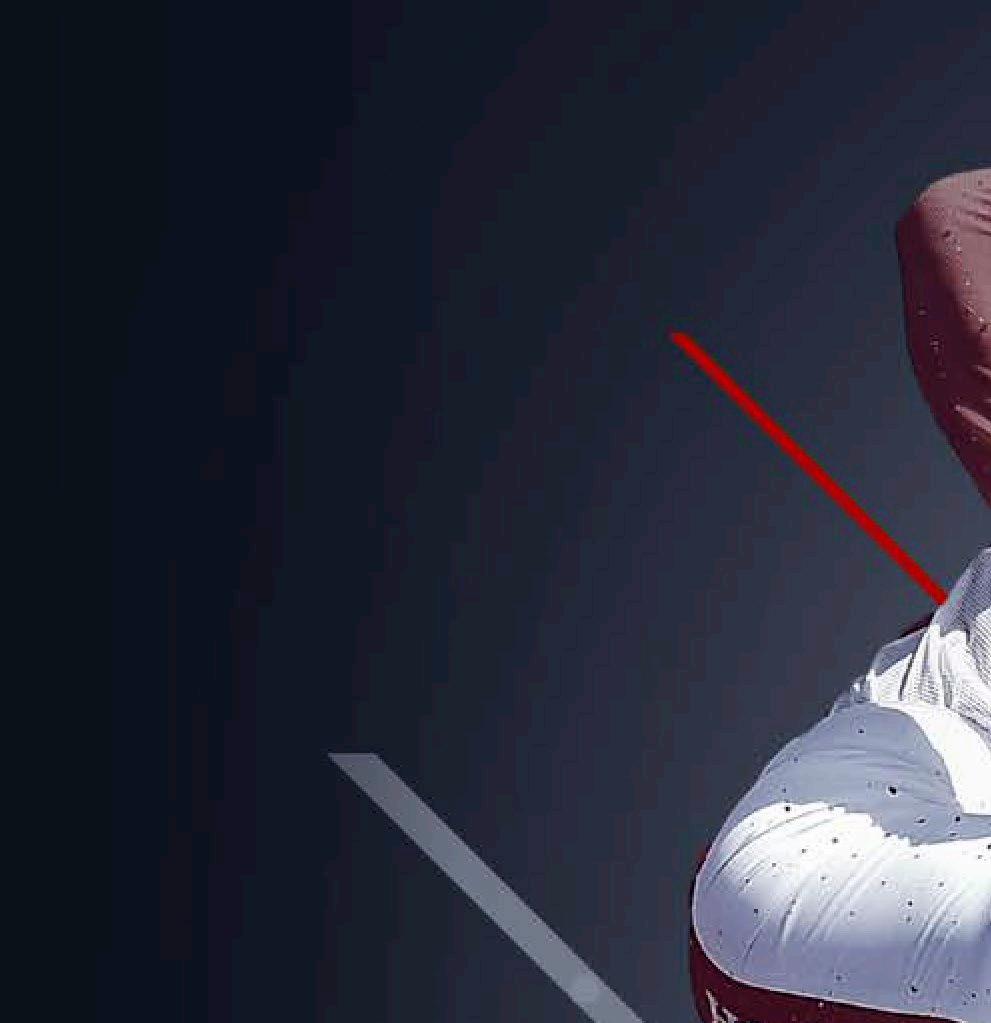
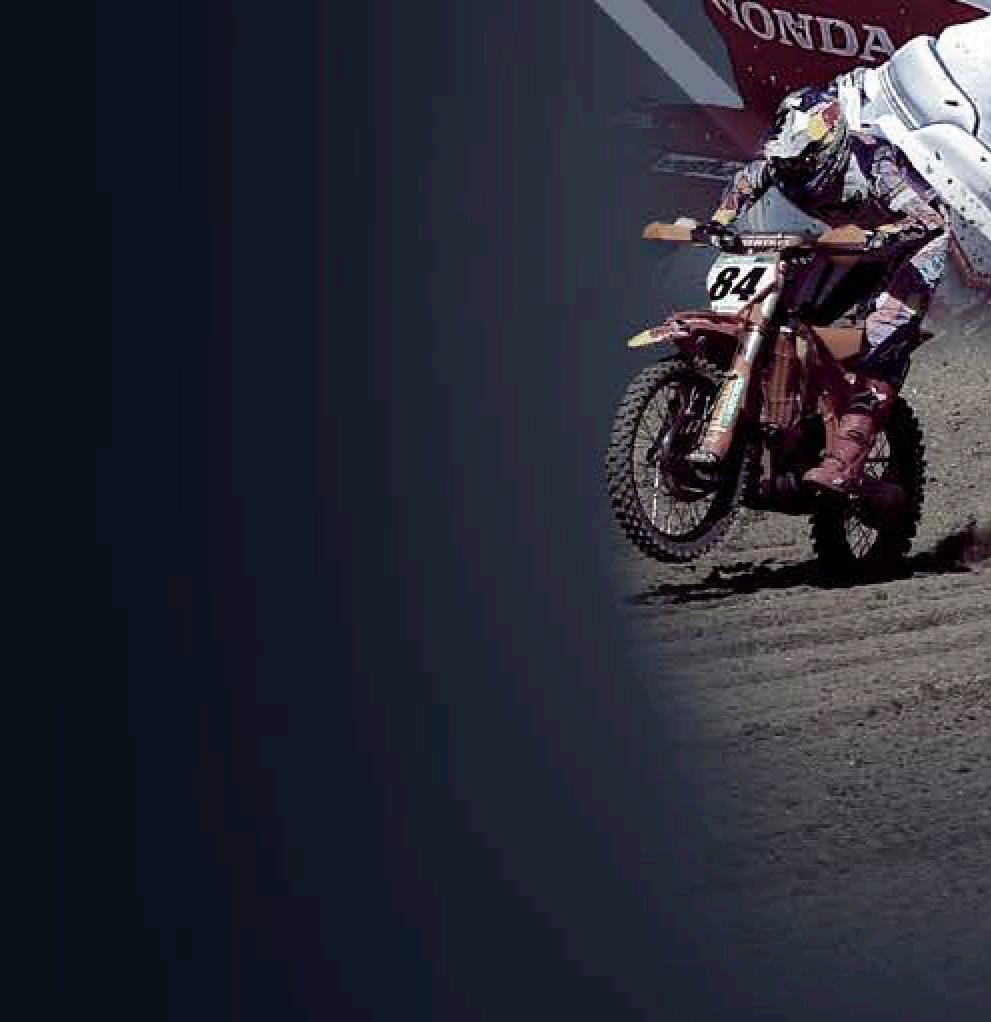

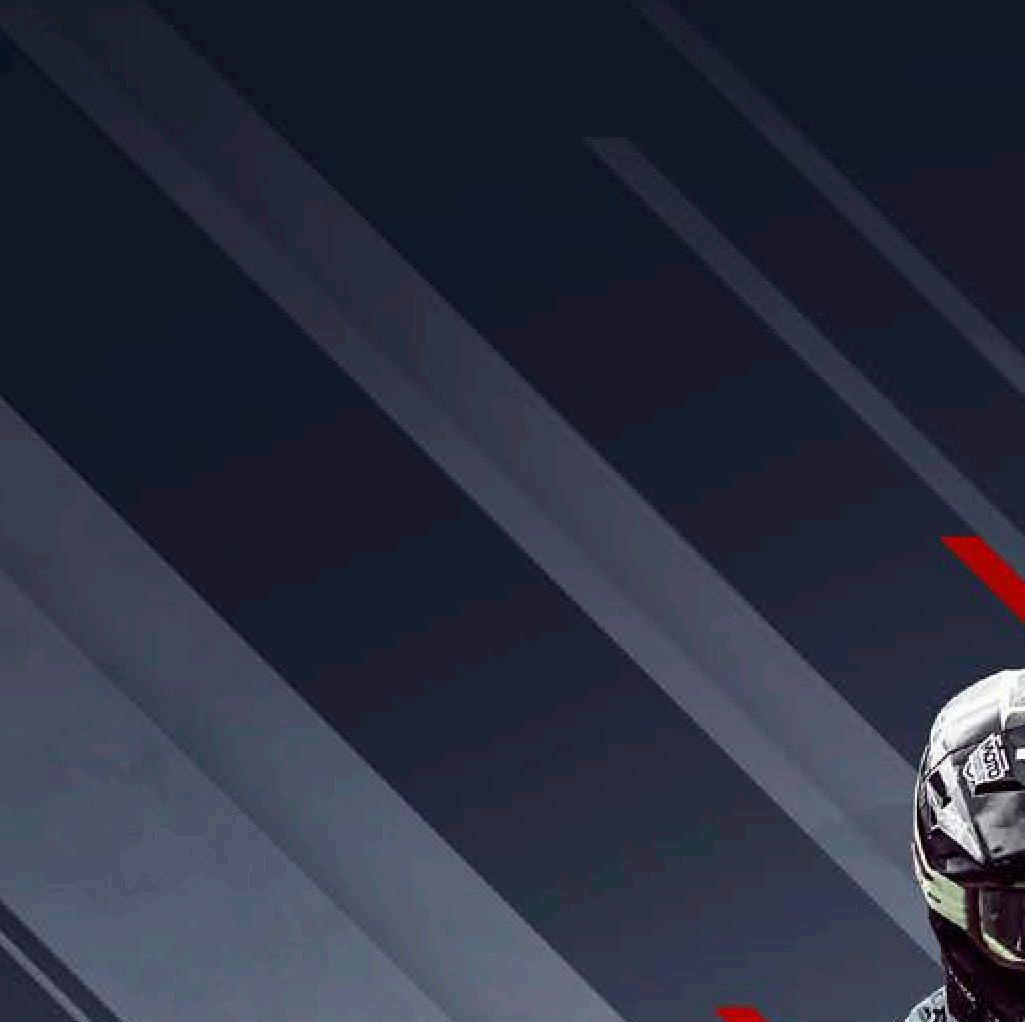
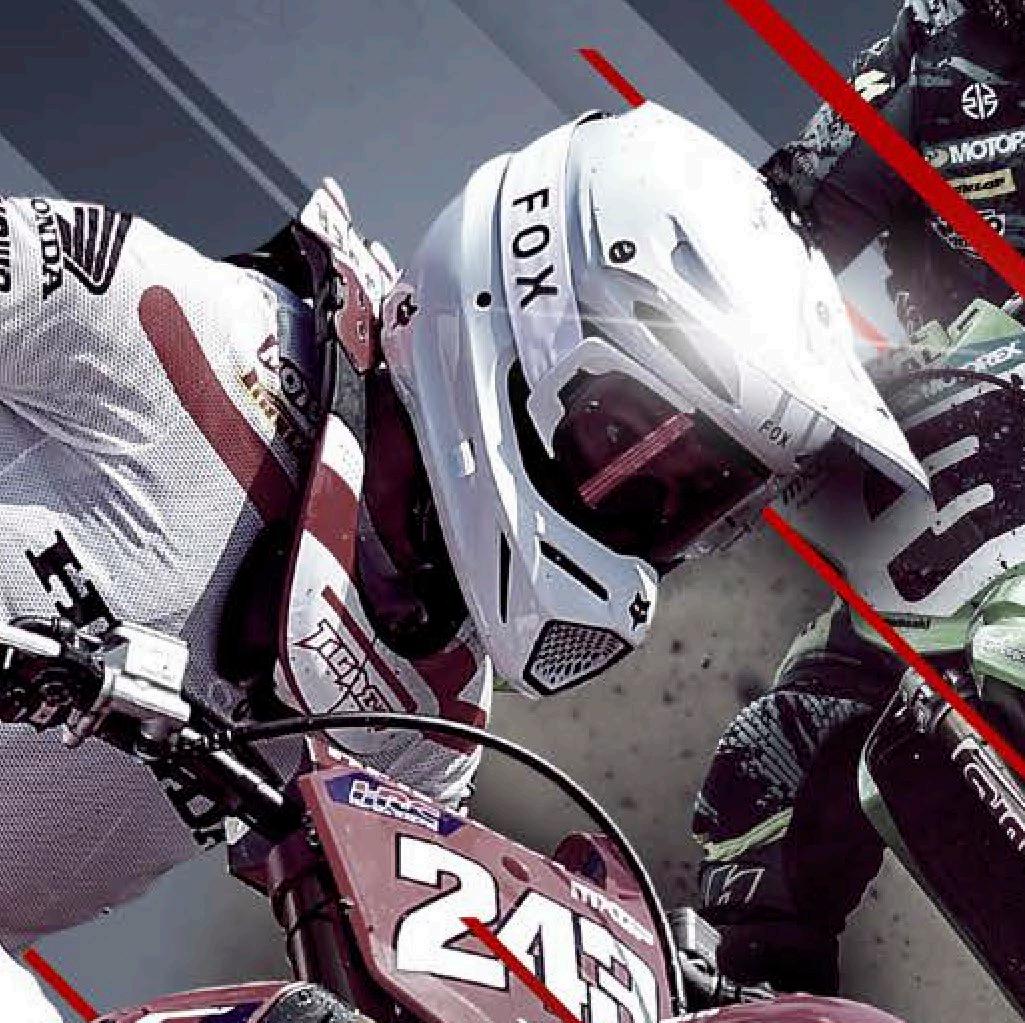
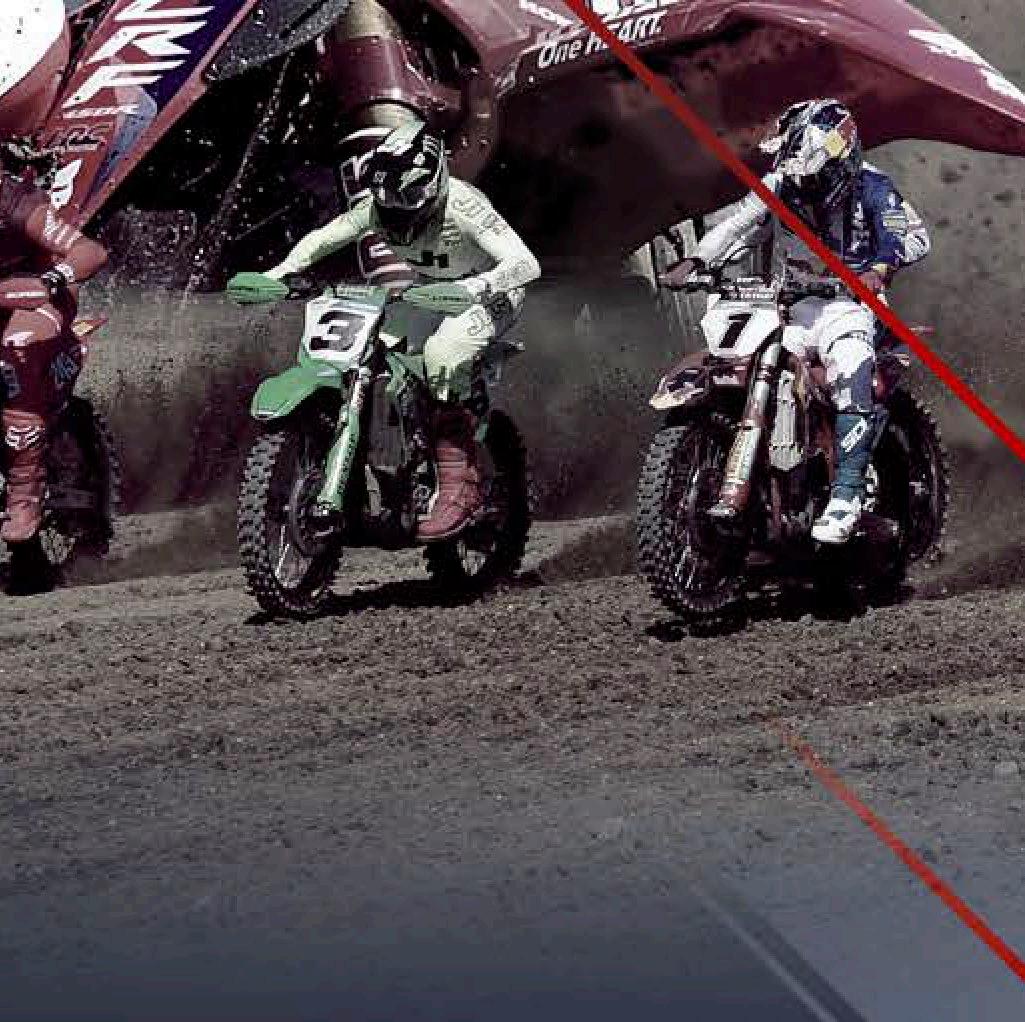
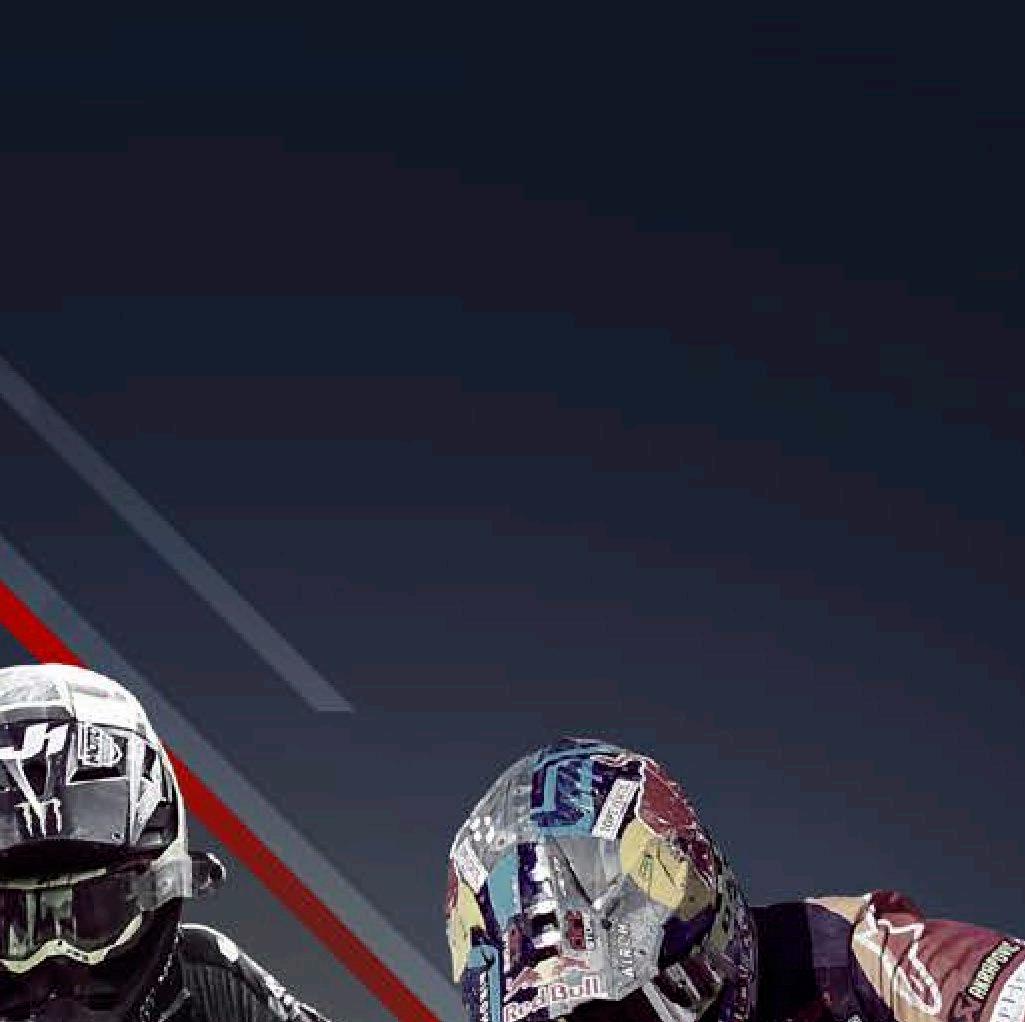






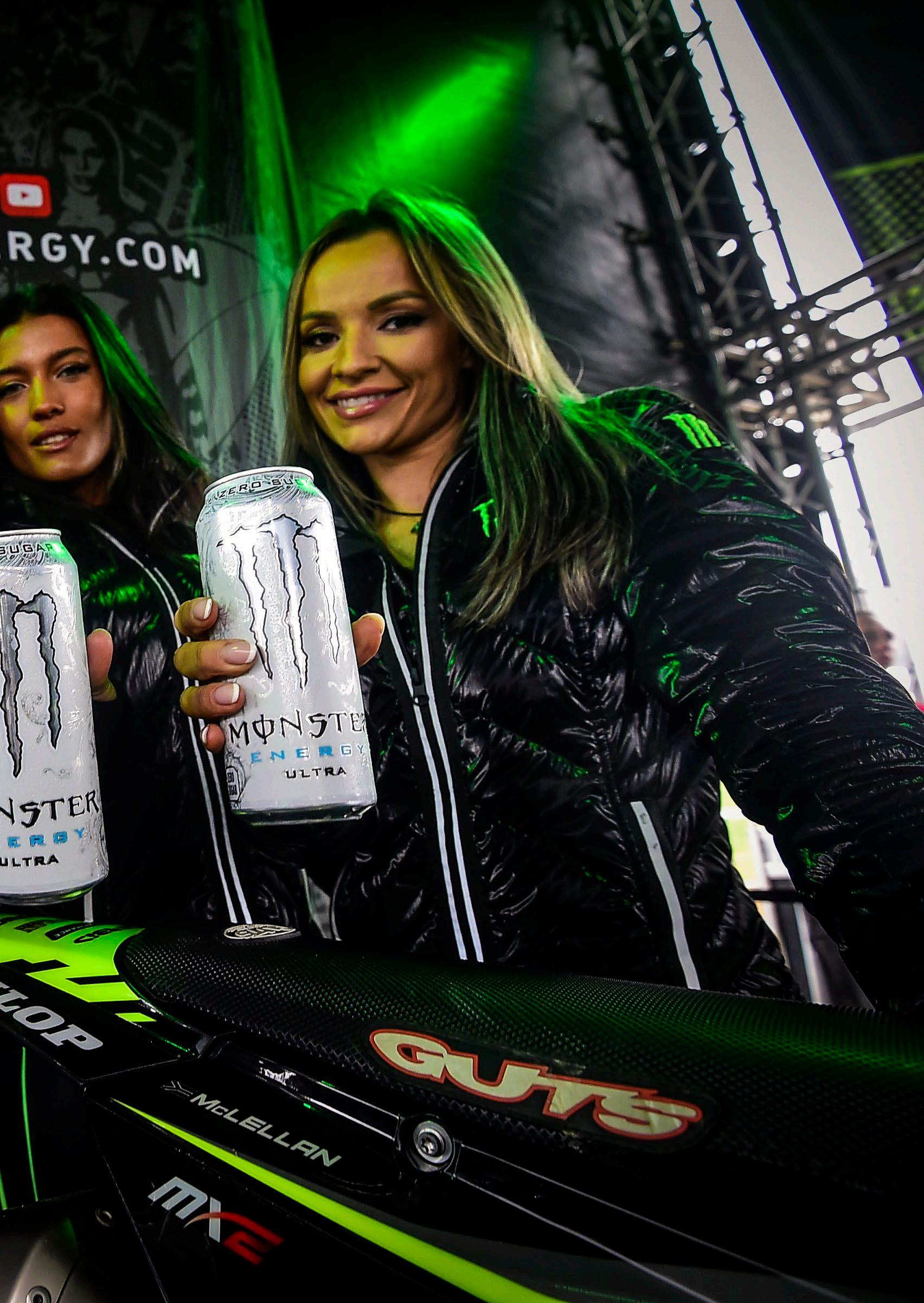
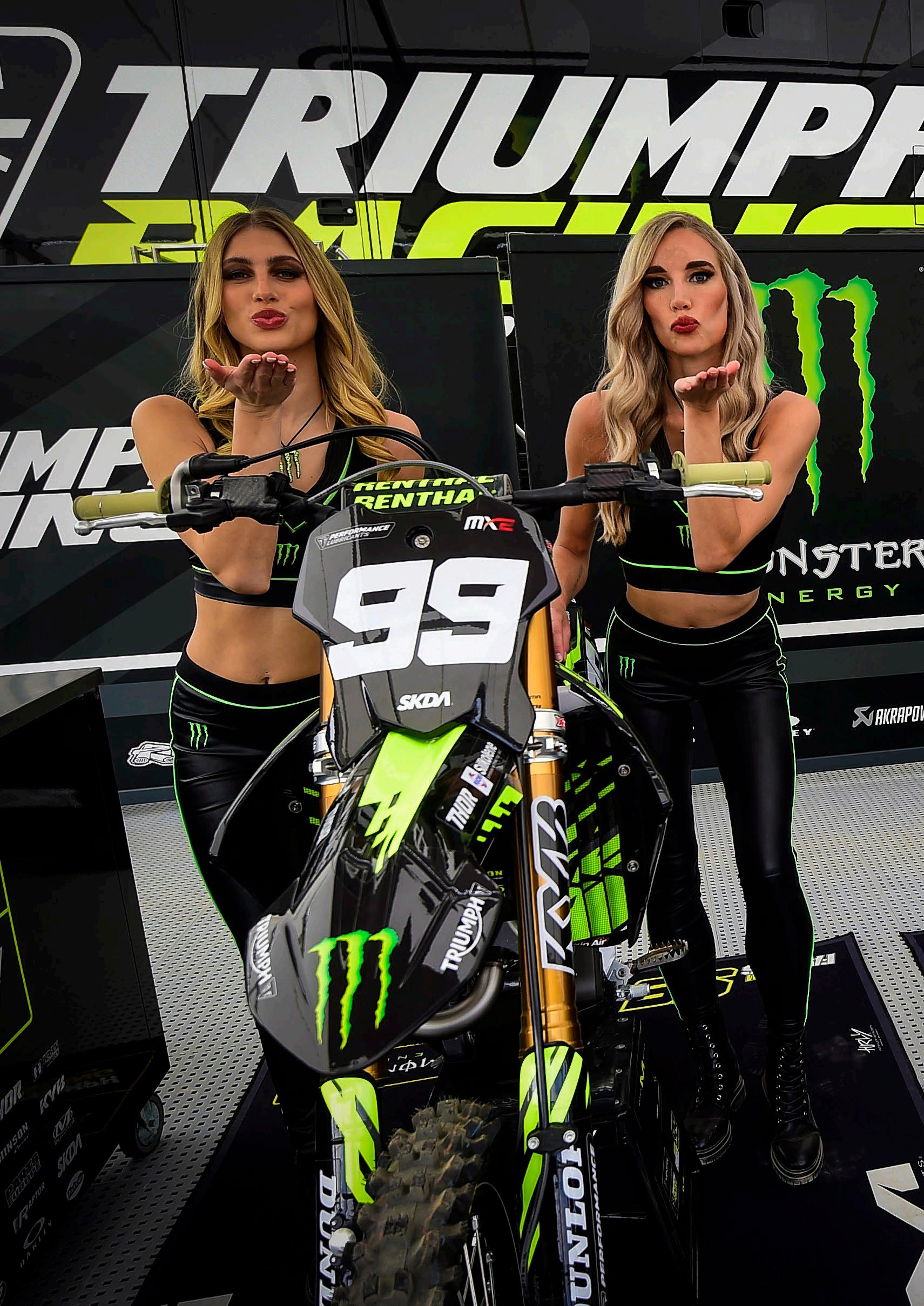
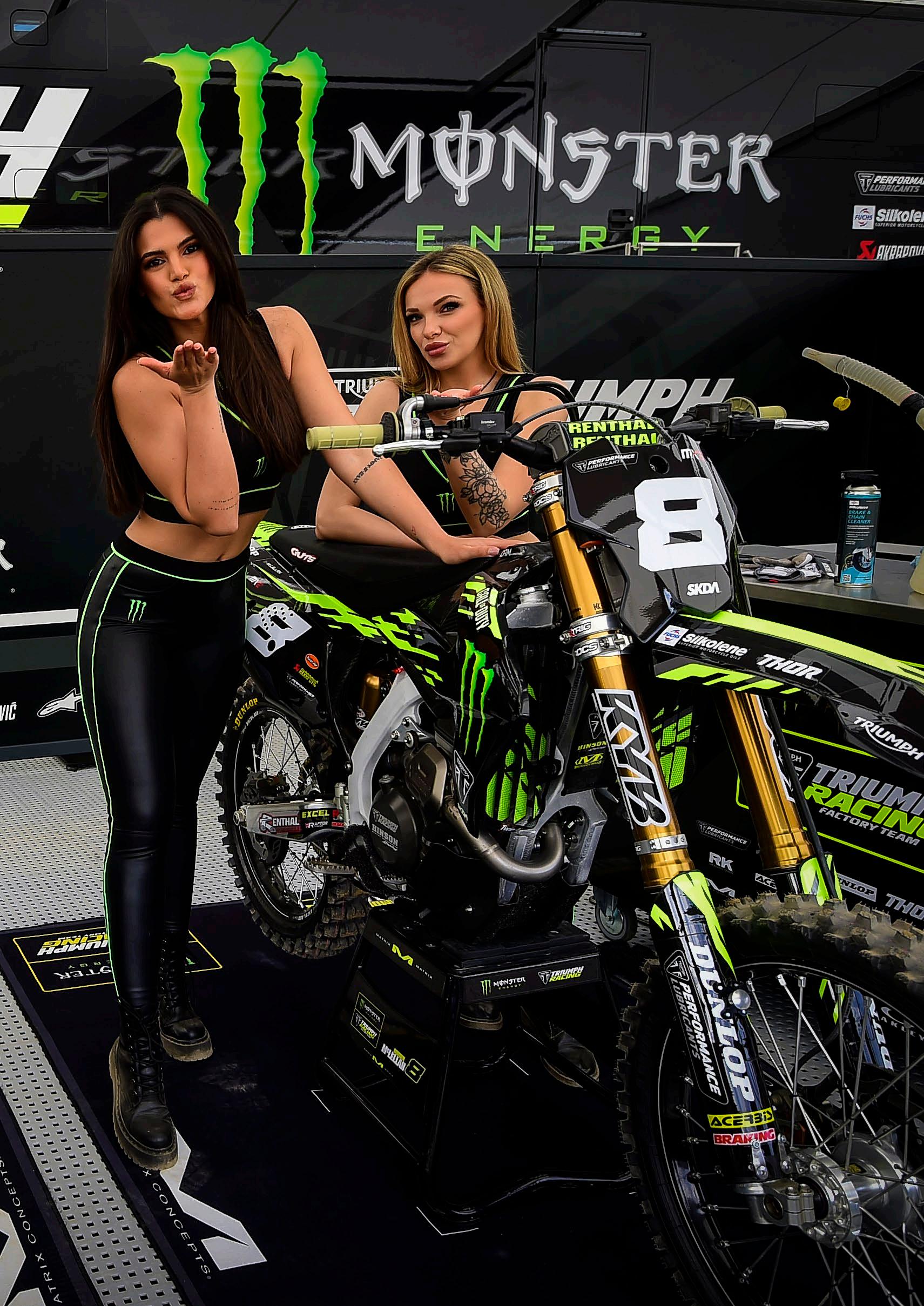
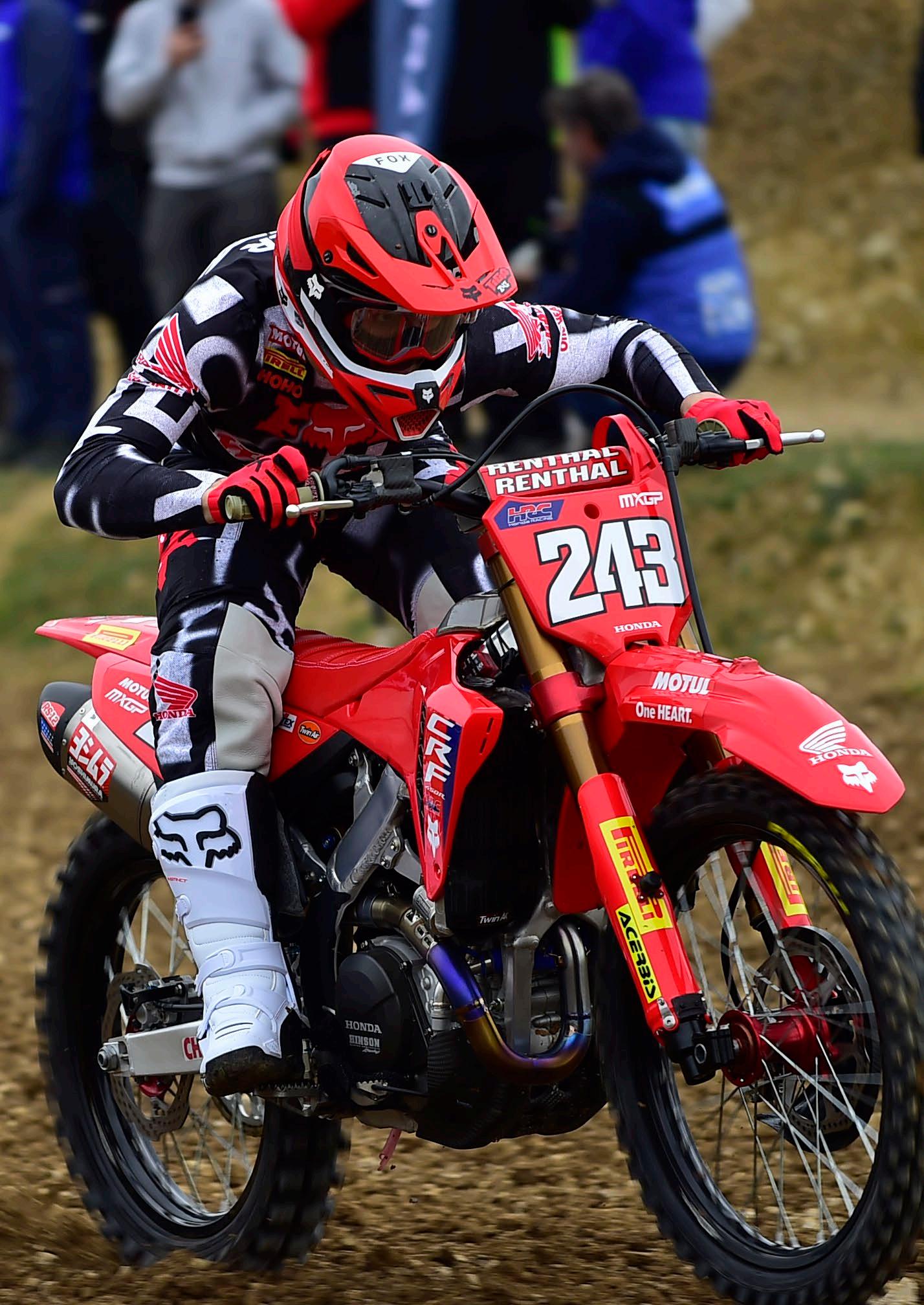
At round two of the 2025 FIM Motocross World Championships, the MXGP of Castilla La Mancha, Slovenian legend Tim Gajser joined a hallowed club of true greats, becoming only the sixth rider in history to win 50 Motocross Grands Prix in his career. In addition to his five world titles, this further cements his position amongst the very best to ever throw their leg over an off-road motorcycle.
The victory was taken in typical Tiga style. Rising from a solid starting position in race one and then fighting back early from a lower place in race two, he did what was necessary to win through some of the toughest conditions the Championship has ever seen. It surely helped to erase the memory of a tough title loss to Jorge Prado at the same venue the previous September and was celebrated by honouring a wager made with a media company to jump in a muddy puddle and take a swim should he win! Despite being an obsessive cleaner, he duly complied!
For many Motocross fans over a certain age, the milestone of 50 Grand Prix victories has always been a very special one. The mighty Belgian Joel Robert, one of the first real megastars of the sport, was the first to get to that total in a career when he dominated the 250cc World Championship in the late 1960s and early ‘70s. My own father was a massive Robert fan, having seen him at the British GP as a teenager, and couldn’t believe what this man could do on a motorcycle. You have to remember that dirt bikes were little more than street bikes with knobbly tyres at this point, with little more than 100mm of suspension travel. In the days before extensive track preparation, the natural lay of the land was something that had to be assessed and negotiated in order to be fast, and when Robert would launch off a natural bank when others were rolling over them to stay on the ground, it was a sight that few could believe.
In the days when there was no real ‘Premier’ class, although naturally the bigger 500cc machines grabbed the most attention, Robert preferred the smaller capacity 250cc category, with bikes that he could
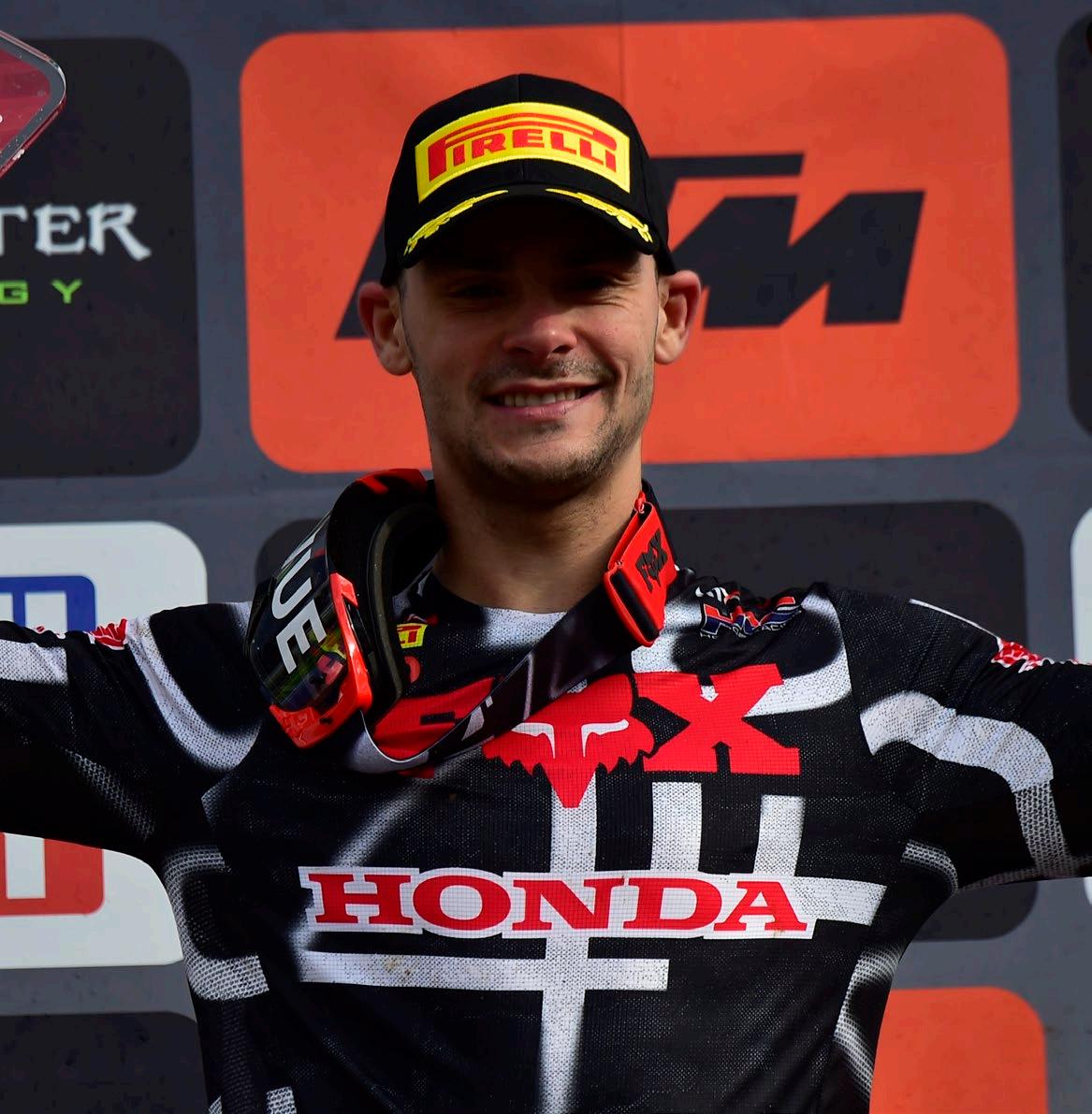
throw around with reckless abandon. In 1964, at the age of 21, he defeated the winner of the first two World Championships in the class, tall Swede Torsten Hallman, and took the first title for Czech manufacturer CZ with eight wins from the 14 rounds held. After Soviet star Viktor Arbekov just pipped Joel in 1965, so Hallman would fight back to take the next two years for Husqvarna. However, Robert stepped up his game and reclaimed the title in 1968. It was the first of five straight titles up to 1972, something nobody in Motocross would do until 33 years later. The first two were for CZ, then he led the immediately successful attack from the far east, becoming the first World Champion for a Japanese manufacturer, namely Suzuki, in 1970. He also led Team Belgium to three years of Nations domination, winning both the 500cc event and the 250cc-only Trophee des Nations from 1969 to 1972.
Robert averaged 5.5 GP wins per season between 1964 and 1972, winning 42% percent of all the 250cc GPs held in that time. With the reliable Suzuki under him, that percentage was up to exactly 50% during his last three title seasons. Besides the racing, he earned a reputation as a serious party-goer, often playing around by putting his crash helmet on backwards, pretending to fall over while starting his bike, and generally giving the impression that it was all too easy. Although as Roger DeCoster, Suzuki’s Belgian talisman in the 500cc class and a five-time World Champion in his own right, once said, “When you drank with him, most of his drink would end up in a nearby plant pot. A lot of his antics were designed to mentally defeat the opposition.” The genius retired in 1977, and his 50 wins remained as the Holy Grail for over a quarter of a century.
Robert stuck around the sport to help many Belgians reach the top throughout the 1980s. Andre Malherbe, with three world titles, Georges Jobe and Eric Geboers both with five, all fought to many victories during a decade which saw massive advances in off-road motorcycle technology. Briton Dave Thorpe enjoyed three title-winning seasons of his own. However, none of these great Champions were able to match Robert’s six titles or get near to the total of 50 wins. This could have been down to a massively more competitive field, of course, as those multiple Champions, all fought each other to deplete each other’s totals. Either way, Robert’s records would stand at the turn of the millennium, although one rider, the last in that long line of great Belgian world-beaters, was getting closer and closer…
As the year 2000 dawned, Flemish stylist Stefan Everts, himself the son of four-time World Champion Harry, had got up to 43 GP wins and four titles of his own. Eric Geboers got to 39, with DeCoster, on 36, level with Hallman, the top non-Belgian. Already in the thirteenth year of his career when he signed for Michele Rinaldi’s factory Yamaha team for the 2001 season, Stefan had suffered two injury-ravaged campaigns and was considered past his best at the age of 28.
Little did anyone visualise that this second phase of his career would go on to outshine the first, and it began with victories in seven of the first nine GPs, that seventh one on the hallowed ground of Namur in Belgium, a fitting site for him to equal Robert’s 50-win record. The two men enjoyed a glass of champagne each on the podium as an incredible moment to mark the occasion. By the end of the year, he had become the first, and still only rider ever, to win world titles on four different brands of motorcycle. He went on to win six world titles in a row, breaking another one of Robert’s all-time records, and set an incredible tally of 101 Grand Prix victories by the time he retired at the end of 2006.
One of the riders that Everts battled with in his first years at Yamaha was one who was named after Robert himself. Joel Smets, who became known as The Flemish Lion, had a remarkably different path than many did, but it still led to incredible achievements. Five times a World Champion, all in the “Kings” class of the 500cc division, came from a rider who didn’t race until he was 17 years old, and went straight to a 500cc two-stroke due to both his size and the minimal cost of repairs to such a sturdy machine. Racing for such brands as Vertemati, Husaberg, and eventually KTM and Suzuki, he would go on to take 57 victories, surpassing his mighty namesake and showing just how much can be done when you really, really want it.

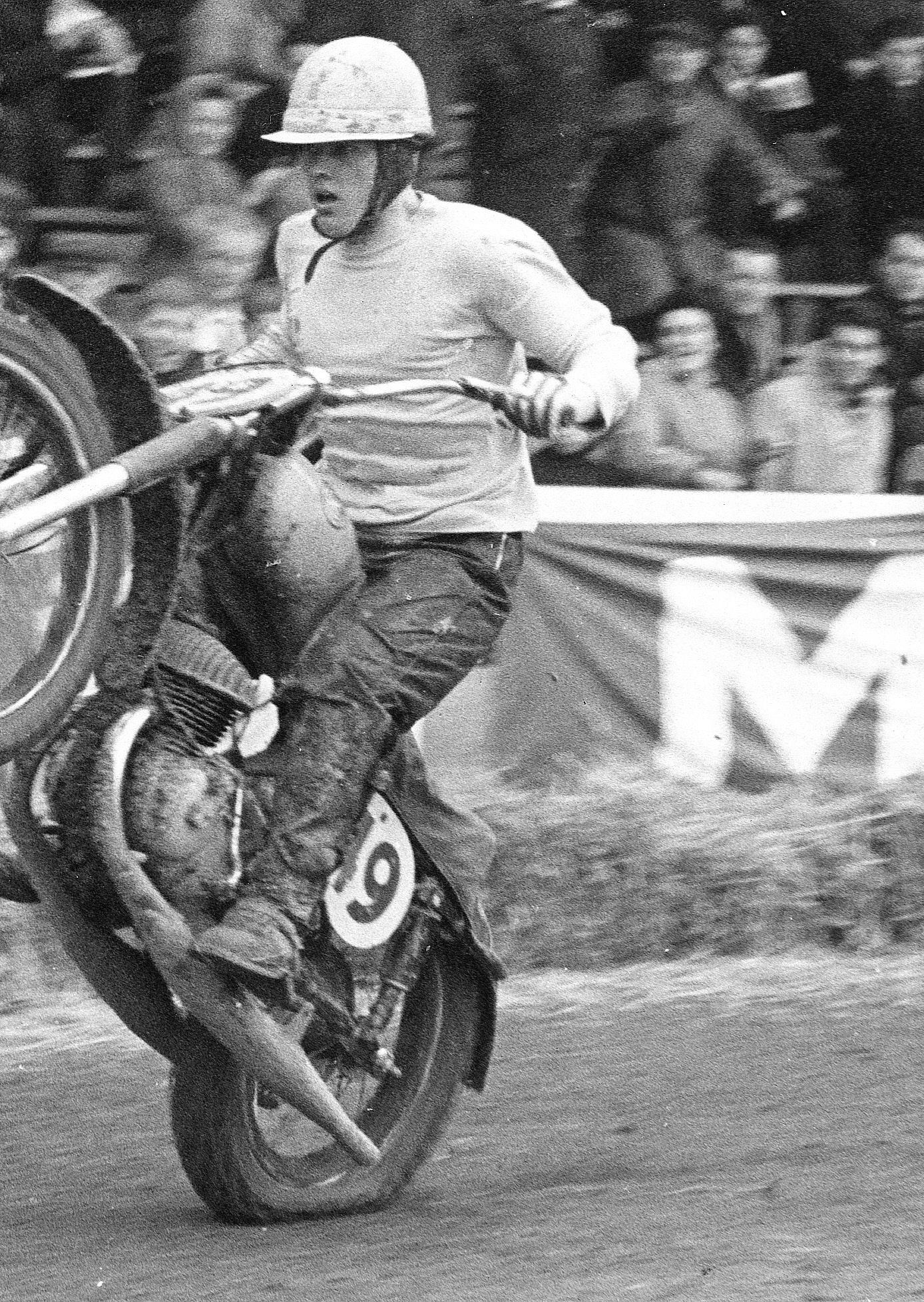
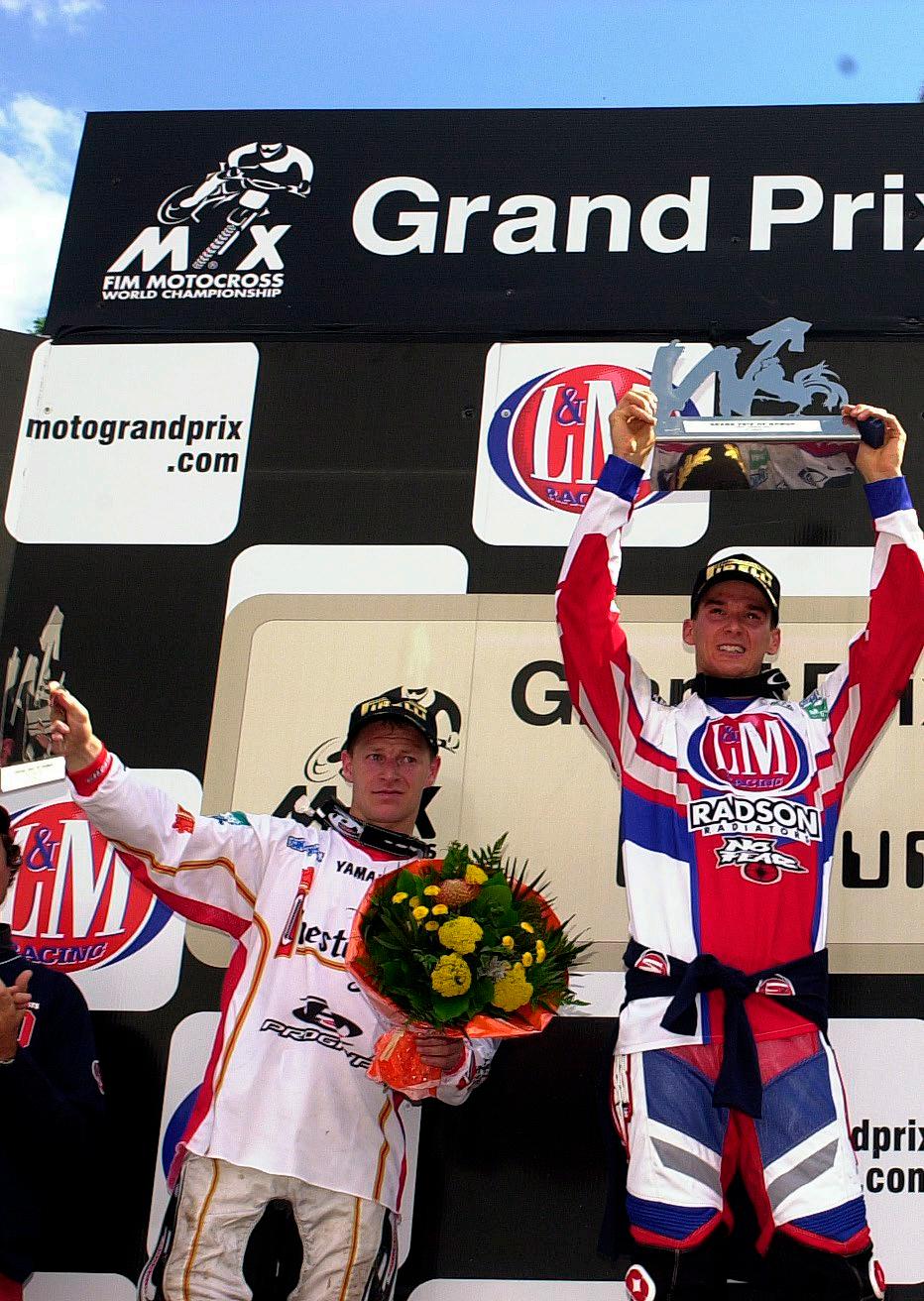
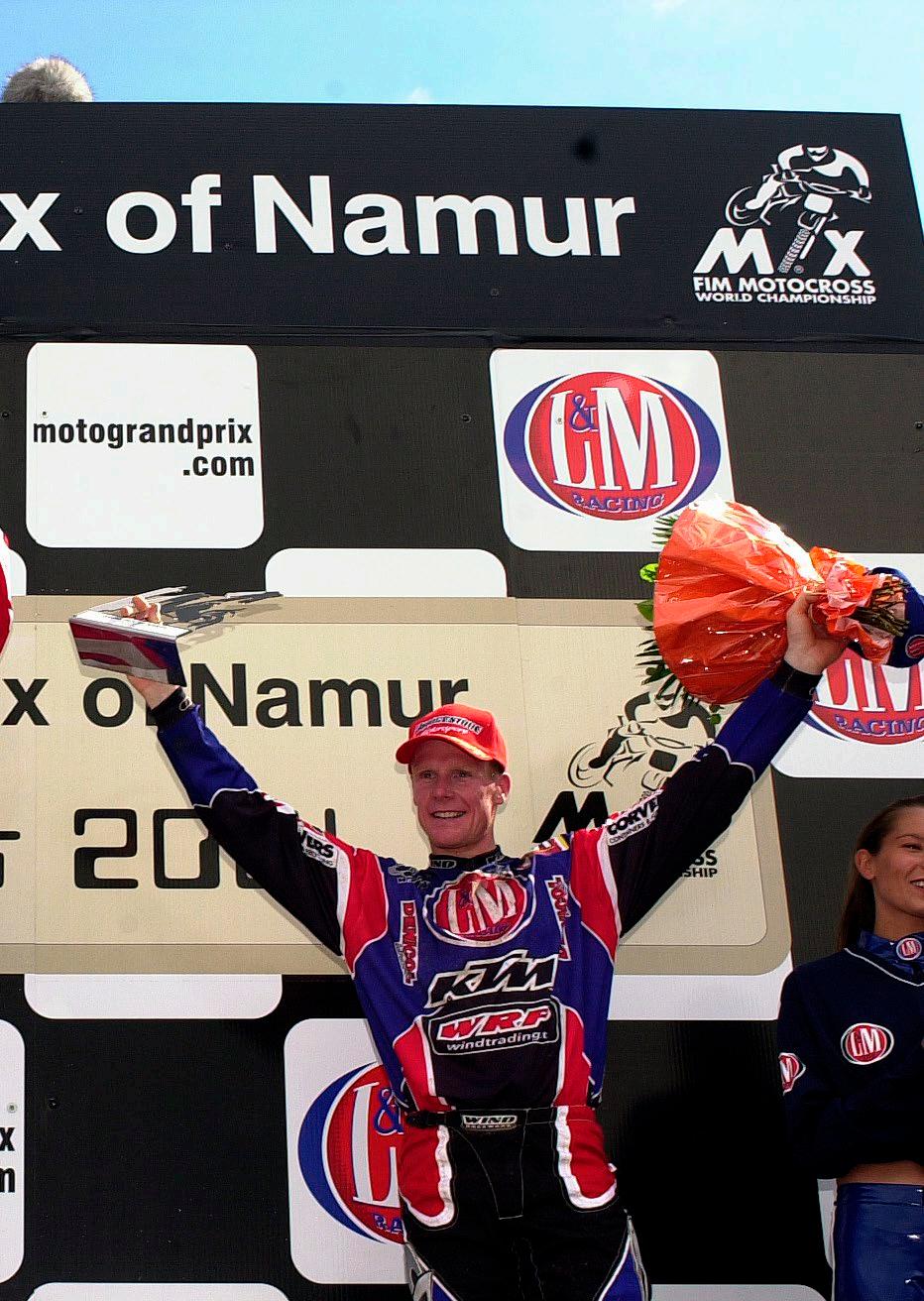
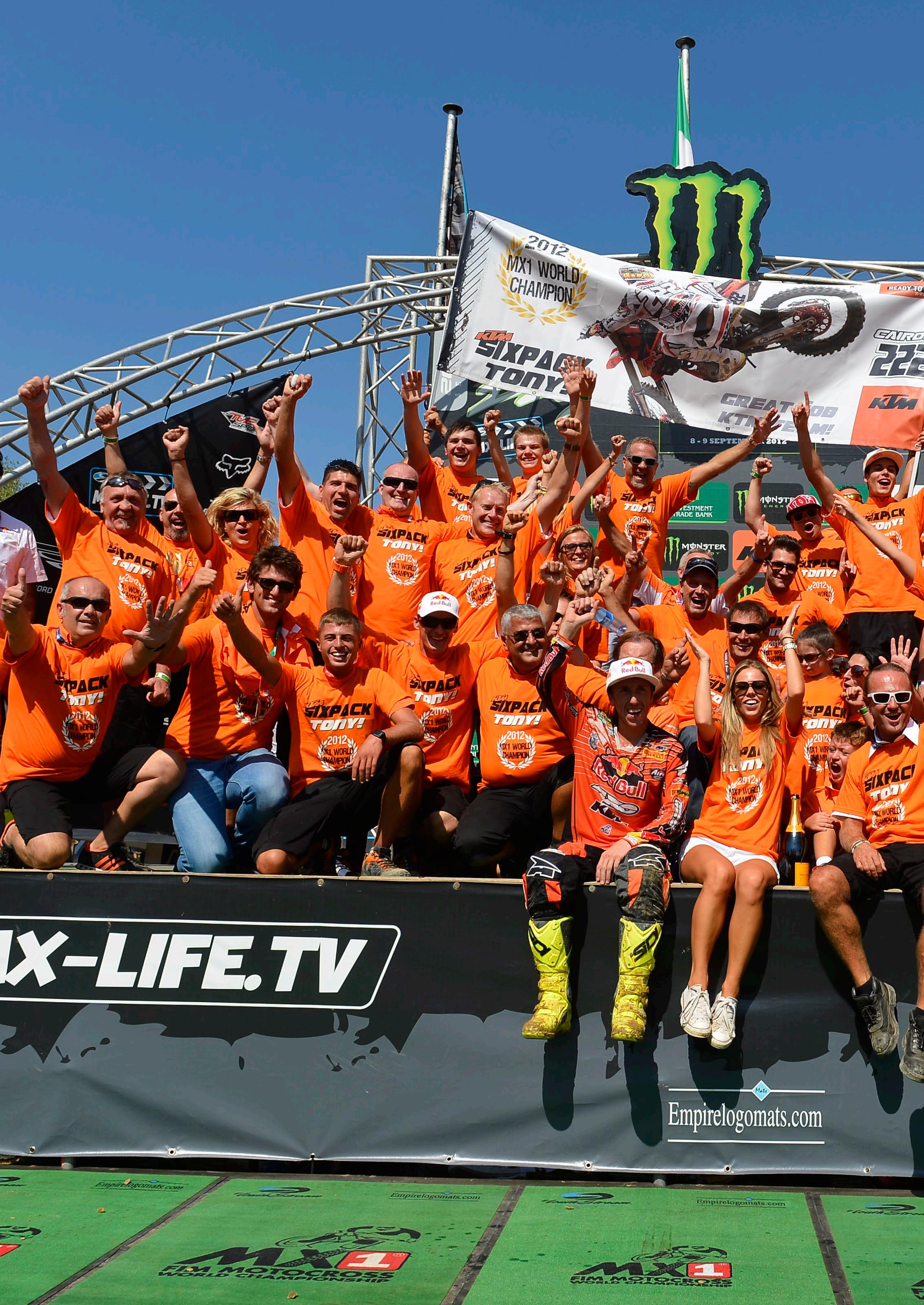

As Everts was reaching the end of his career, a diminutive Sicilian was beginning to carve his own way to greatness. Swiftly becoming the greatest Italian racer of all-time, equalling Stefan’s record of six straight titles from 2009 to 2014 in MXGP, the #222 of Antonio Cairoli became one of the most dominant figures of our sport. Reaching the 50 GP win mark at Loket in 2012, at his best he was a dirt bike equivalent to Valentino Rossi, all Italian charm and toothy grin on the surface, with impeccable branding and style but possessing a hardcore, brutal racer’s mentality beneath it all. Having only just raced again in MXGP, at the age of 39, he still draws fans towards him, on a new Ducati factory machine as much as in his pomp on the 350cc KTM. One of his last acts as a full-time racer was to finally win the Motocross of Nations with Team Italy, on their home circuit of Mantova as well!
Bowing to Cairoli on the podium of his ‘retirement’ GP was a phenomenal racer who surely limited Antonio’s final GP tally to ‘only’ 94. Known as “The Bullet”, on account of his sheer speed that stuns spectators at his best, Dutchman Jeffrey Herlings reached the 50-win mark on home sand, the surface on which he is peerless, at Valkenswaard in 2016. That was in the MX2 class, where he took 61 wins across six seasons, despite missing the majority of three of those seasons due to injuries which have continued to plague his career.
Jeffrey continued to shock both spectators and competitors alike when he moved up to MXGP. Winning 17 of 20 Grands Prix in just his second season – and he missed one of the others with another injury – he became a four-time World Champion in 2018, and many thought he would dominate for years to come. Did I mention that my father was a massive Robert fan? Since then, only Herlings has impressed him as much, despite the many great racers he has seen over the years.
Sadly, brutal crashes and a very battered body have limited Herlings to five world titles, all with Red Bull KTM Factory Racing, arguably having lost all of the others he contested to injuries. However, in the early rounds of 2023 he amazingly surpassed the record tally of GP wins, set by his former Team Manager Stefan Everts. Still active, rebuilding again from another injury, but by his own words not likely to race for much longer, Jeffrey’s final tally could extend further than his current 107. And if he is able to stay healthy, he would certainly be in contention to match Robert’s six-title haul.

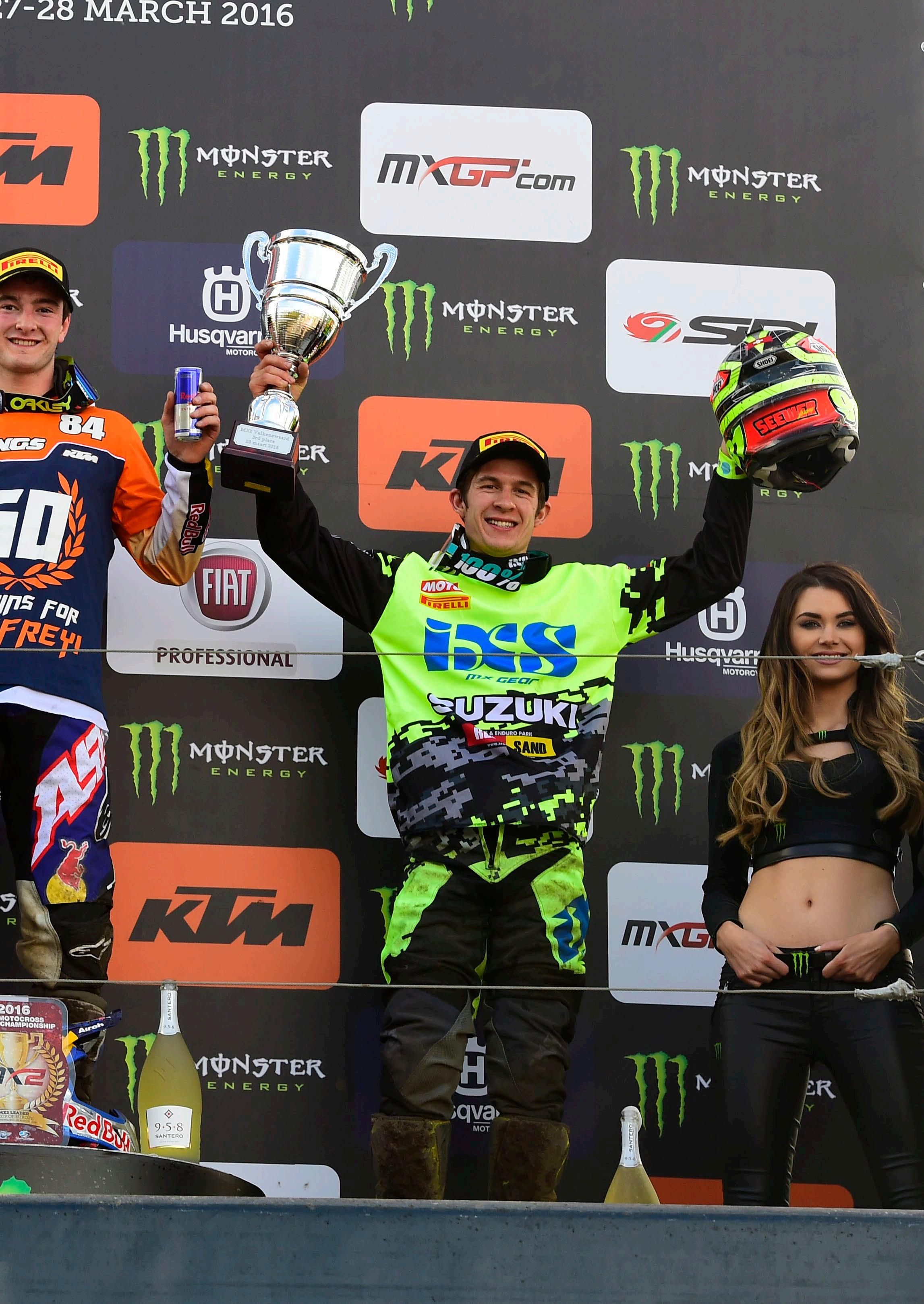

Speaking of six world titles, at the time of writing it is the latest member of the 50-win club, the aforementioned Tim Gajser, who is well on his way to reaching that particular total. Some cynics might say that he has only won when Herlings could not, but the iron Slovenian has fought The Bullet on many occasions and come out on top. A major factor in his longevity, now ten years on from his first world title in 2015, is his strength and composure under pressure. He rarely crashes, rarely pushes beyond the limit, and is so consistent that he barely ever has to. When he does push, as he did against Jett Lawrence in an epic final race at the Motocross of Nations last October, he is a sight to behold. Even Jorge Prado, who just managed to beat the Slovenian to the title in 2024, was soon telling people, “that’s the Gajser I had to deal with every weekend!”
A solid starter, if not a complete hare out of the gate, his true speed is shown when he has to move forward early in the race, which has been key to much of his success in making sure that he is always in a great position. A lifelong cornerstone for Honda HRC, they recognised his talents early, and he is still the last winner of an MX2 world title for the Japanese brand. Strong on all types of terrain, it is only the presence of
Herlings, and more recently Prado, which has limited his numbers to five world titles and 52 GP wins so far.
Humble in interviews no matter what the result, approachable, likeable, and great to work with for the media, the man from the little-known nation of Slovenia deserves every success that comes his way. He carries the number 243 because the 24th of March is the birthday of his late brother Žan, who died before Tim was born, hit by his own father’s bike in a horrible Motocross accident. It is a mark of the character of Gajser that he will always race with this number in tribute to the brother he never knew.
Until he was told afterwards, Tim himself didn’t even know that the GP win at the MXGP of Castilla La Mancha, at a very muddy Cozar circuit, was the 50th of his career. Calling the achievement a motivation to win even more, he is certainly far from finished at the age of just 28. Just how many more he can win doesn’t seem to have a visible limit when there are 20 opportunities each year and with no sign of him slowing down.
For now, even if he might be running away with another world title, we can be entertained by his riding and appreciate that we are watching one of the best of all-time, doing what he does best.
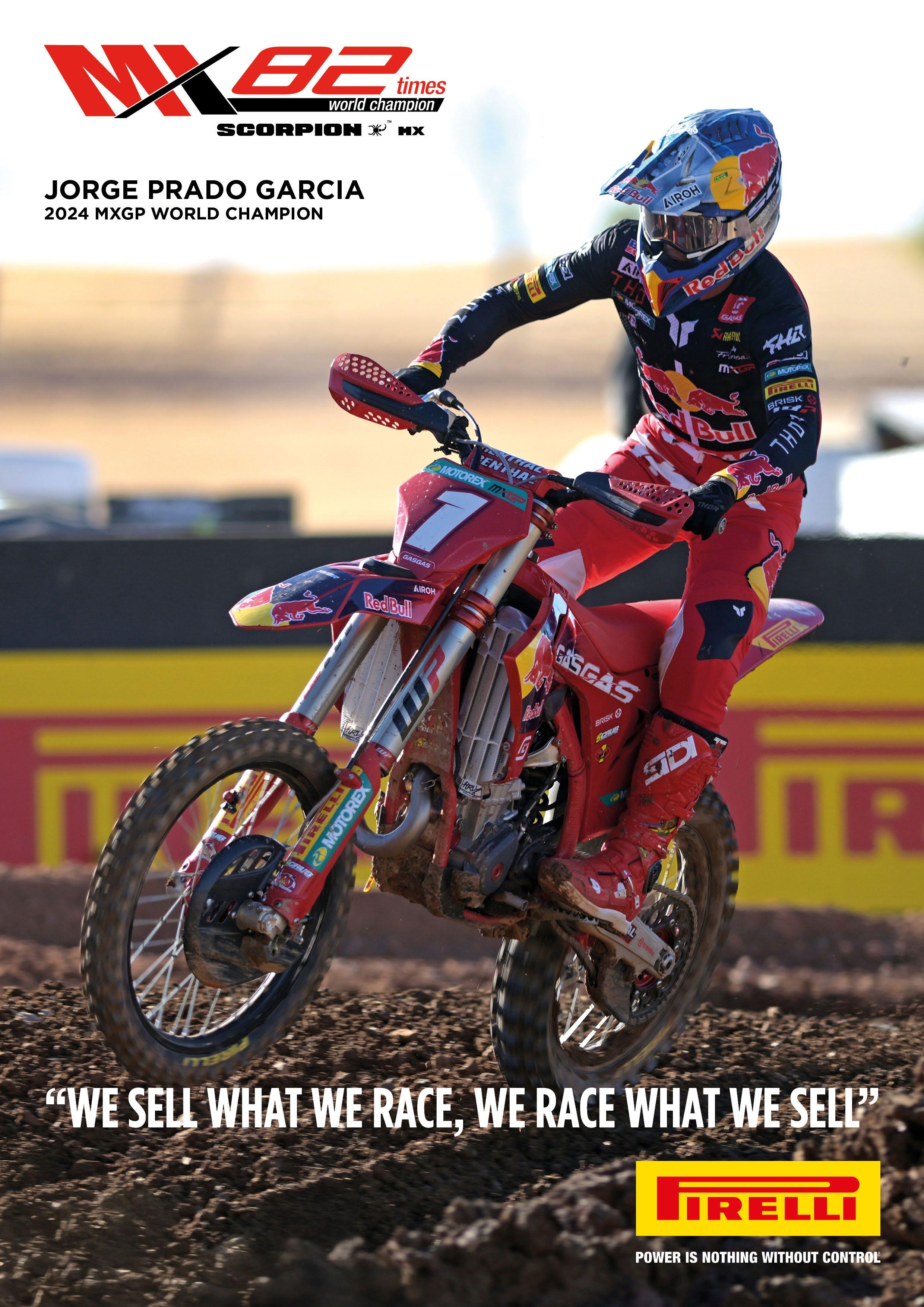
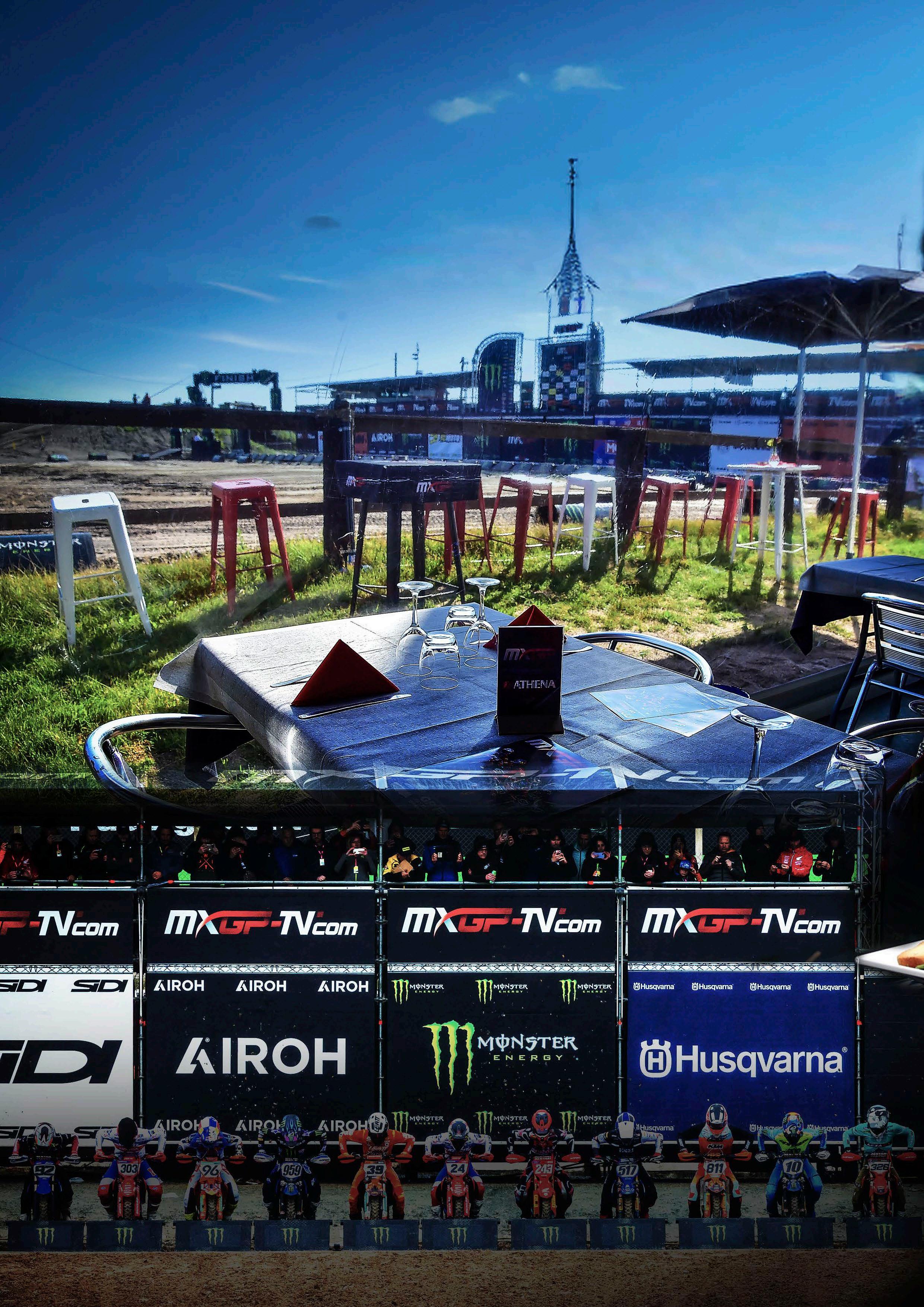




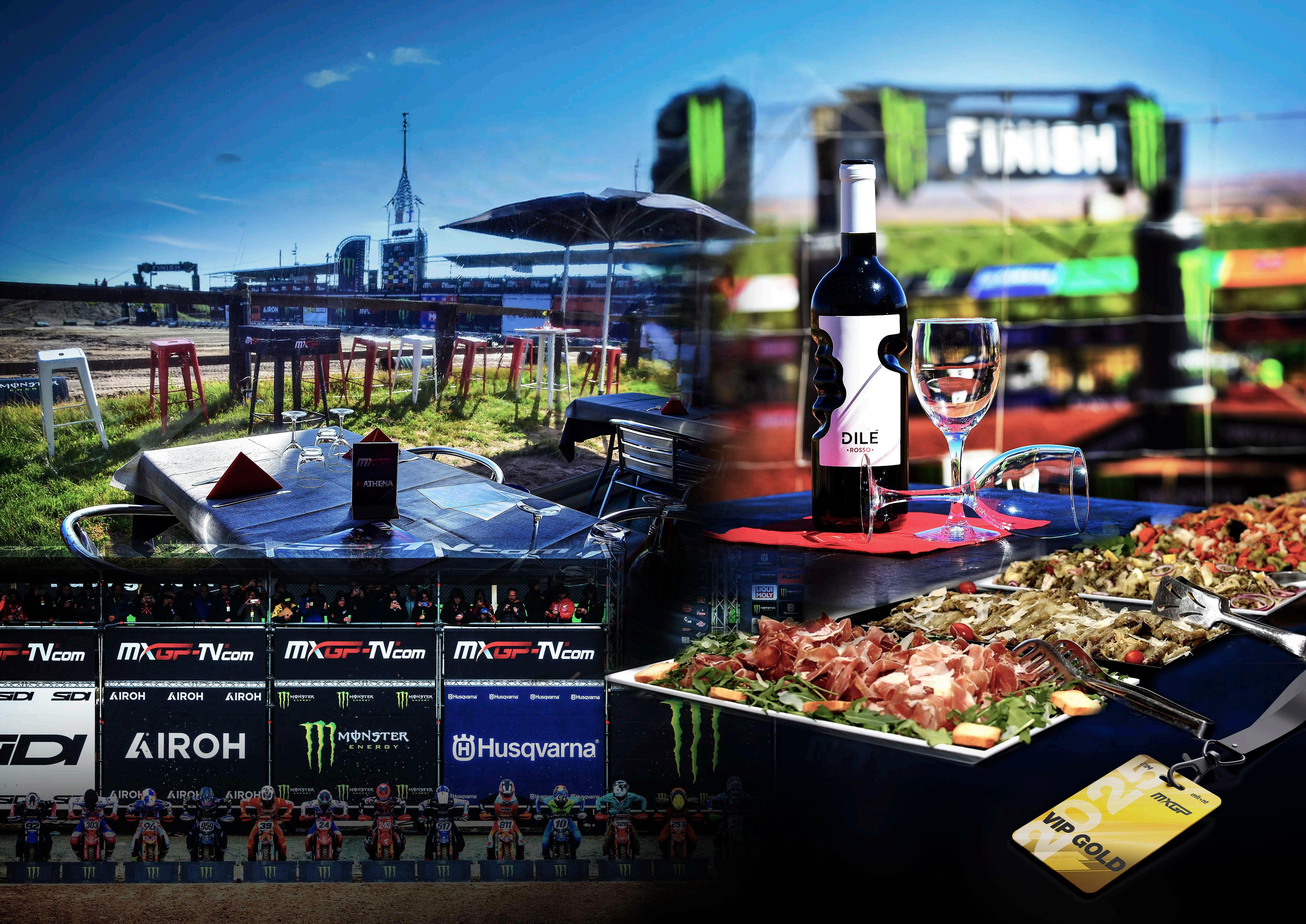

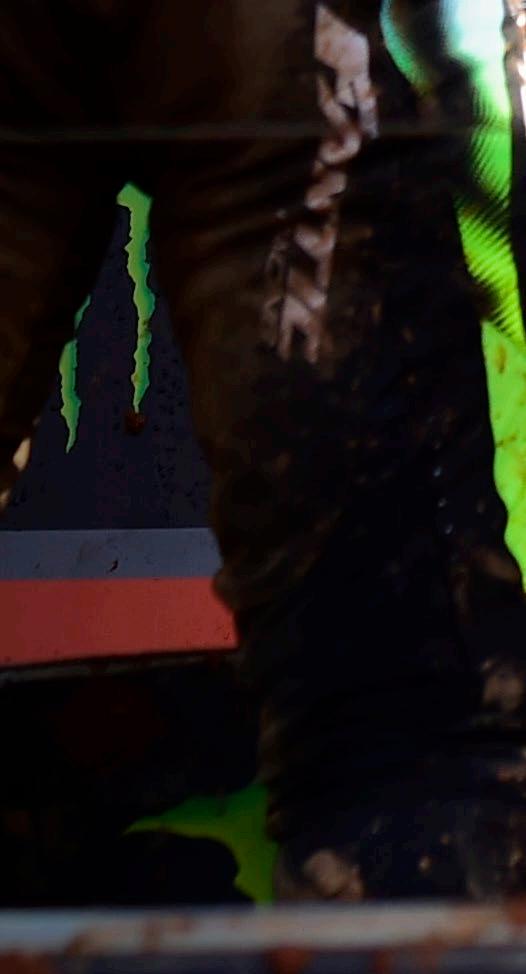
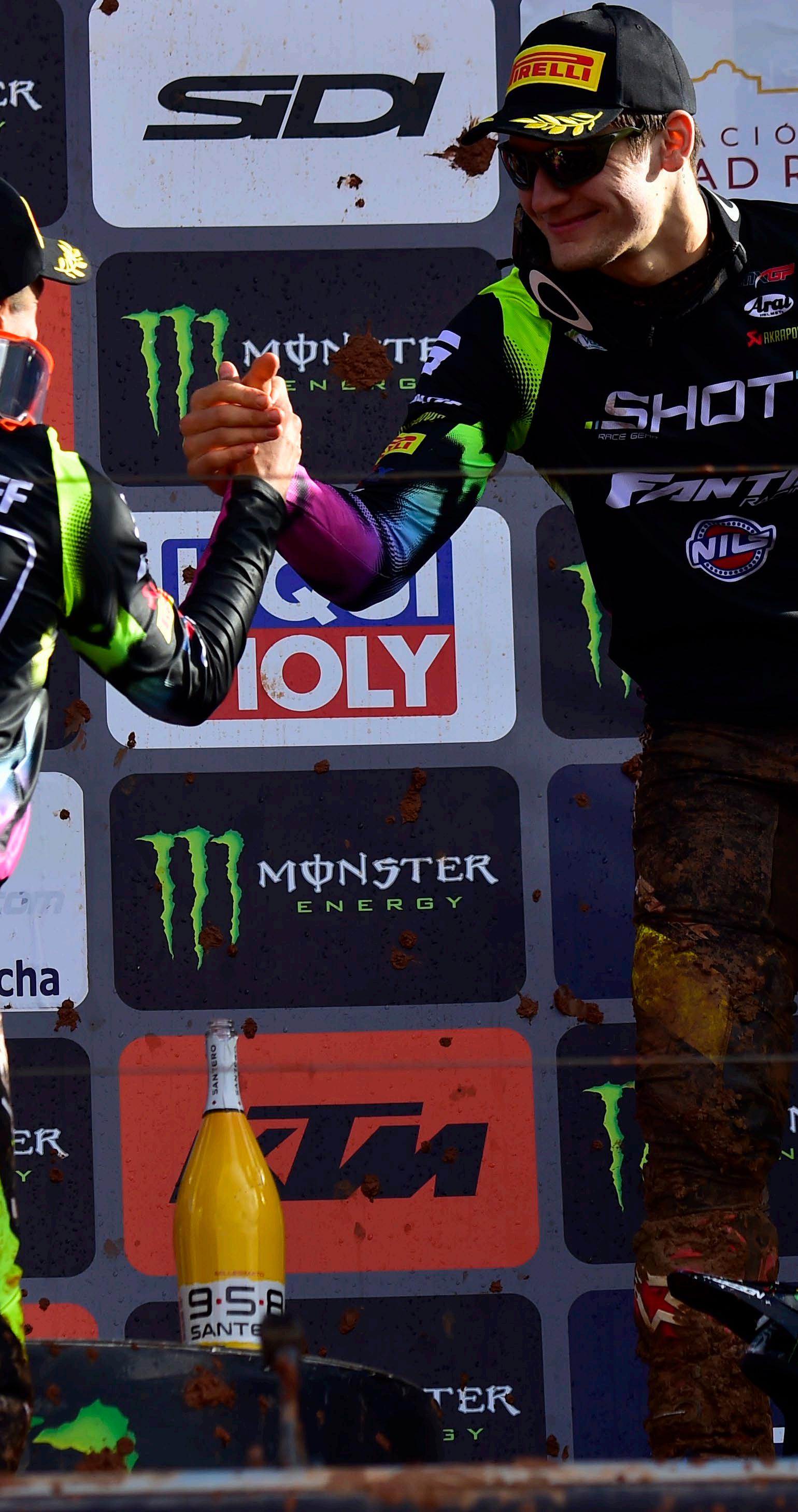
JUST OVER FIVE YEARS AGO, FANTIC RACING WAS LITTLE MORE THAN AN AMBITIOUS NEWCOMER IN THE HIGH-STAKES WORLD OF OFF-ROAD COMPETITION. FAST FORWARD TO 2025, AND THE ITALIAN BRAND HAS NOT ONLY EARNED ITS PLACE IN THE MXGP PADDOCK –IT’S BEGUN TO SERIOUSLY SHAKE THINGS UP.
This season has already delivered a major milestone: Fantic’s first-ever MXGP podium finishes. But these moments didn’t come out of nowhere. It’s the product of tireless development, a clear vision, and a team that has found its rhythm. Behind the scenes, riders, engineers, trainers, and team managers have been working in sync to elevate the brand to new heights.
The results are starting to show and they’re only just getting started.
FROM EMX TO MXGP GLORY: BONACORSI’S HOMECOMING
For Fantic’s athlete Andrea Bonacorsi, team’s success this year carries a deeply personal weight. It was with Fantic that he won his first EMX title back in 2020, marking the beginning of his journey on the international stage. Now, just a few years later, he’s delivered Fantic’s first podium in the premier class – a fullcircle moment that reflects not only his own development, but the brand’s as well.
“It was an incredible feeling,” Bonacorsi said. “In 2020, I won my first EMX title with Fantic. It is where it all started for me – and now, coming back and taking my first MXGP podium with them means a lot. It was really special and gives us a lot of energy to keep pushing.”
Bonacorsi credits much of his performance this season to the atmosphere within the team. For a rider still relatively new to the class, feeling at ease in the paddock makes all the difference.
“I’ve felt good on the bike since the first test this winter. The whole team makes me feel at home and gives me a lot of confidence. We have fun, we laugh, we help each other. That kind of mindset helps me when I’m out on the track.”
He’s not getting carried away, though. The goal for 2025 remains clear: learn, improve, and keep showing up near the front. “To get a podium already at the second round is a really positive sign. It hasn’t changed my goals –I’m still focused on gaining experience and staying calm. But mentally, it’s a step forward. I know now we can do it,” he states.
Another key-member of the team is Glenn Coldenhoff – an experienced athlete who has been instrumental in shaping the team’s direction since his arrival. His second-place finish at Riola was another statement of intent from the red bikes, and a sign of just how far the project has come in a short space of time.
“It felt really good,” Coldenhoff said of his podium. “Fantic made a big step, and they’ve worked so hard over the last year. I feel like we’re really working closely together. There are some very motivated people behind this team and I get a lot of energy from them.”
According to Coldenhoff, the breakthrough didn’t come from any one factor, but from steady, focused work across the board.
“It’s really a combination of things. Last year, we were getting to know each other. I gave feedback, they listened, and from
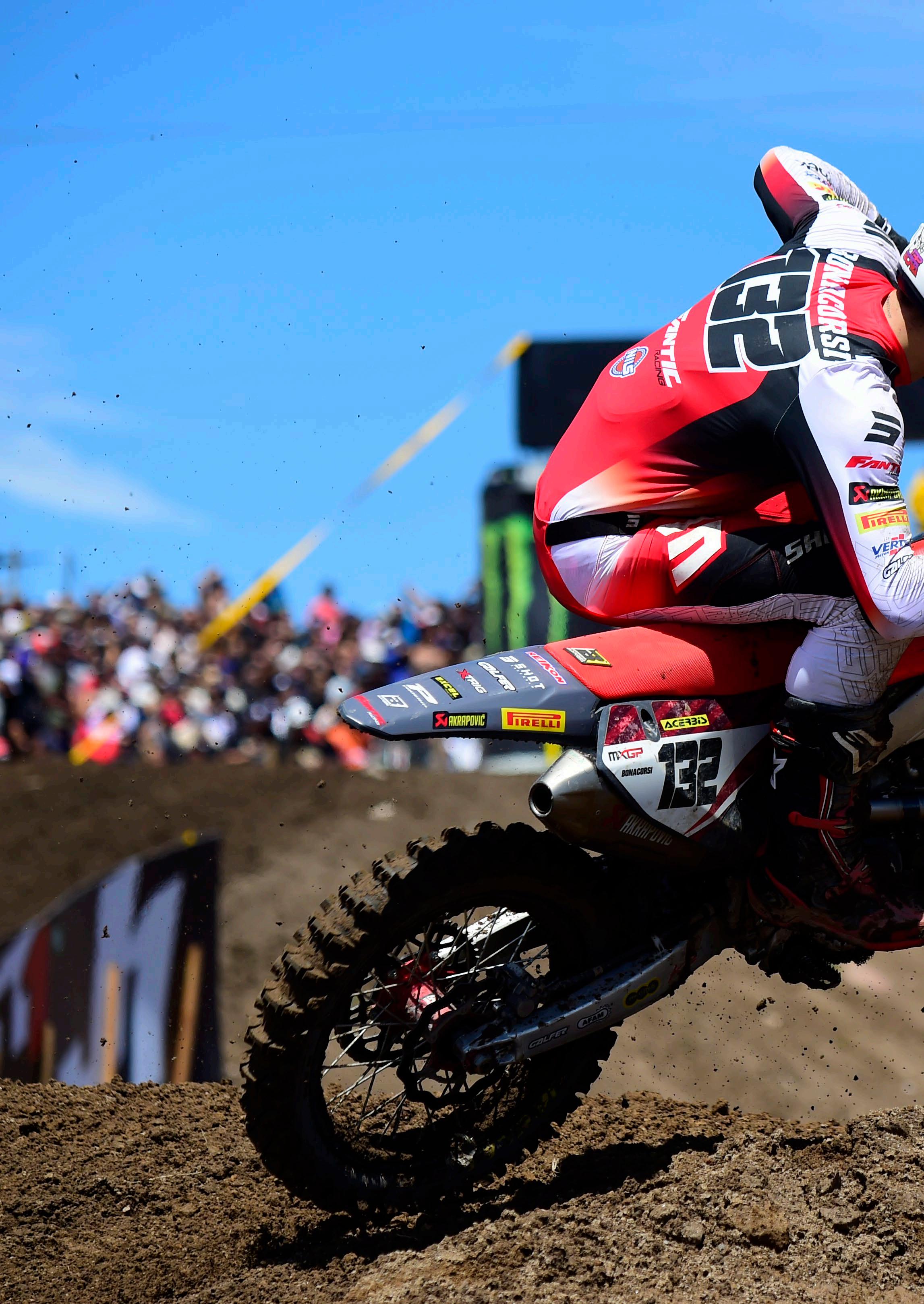
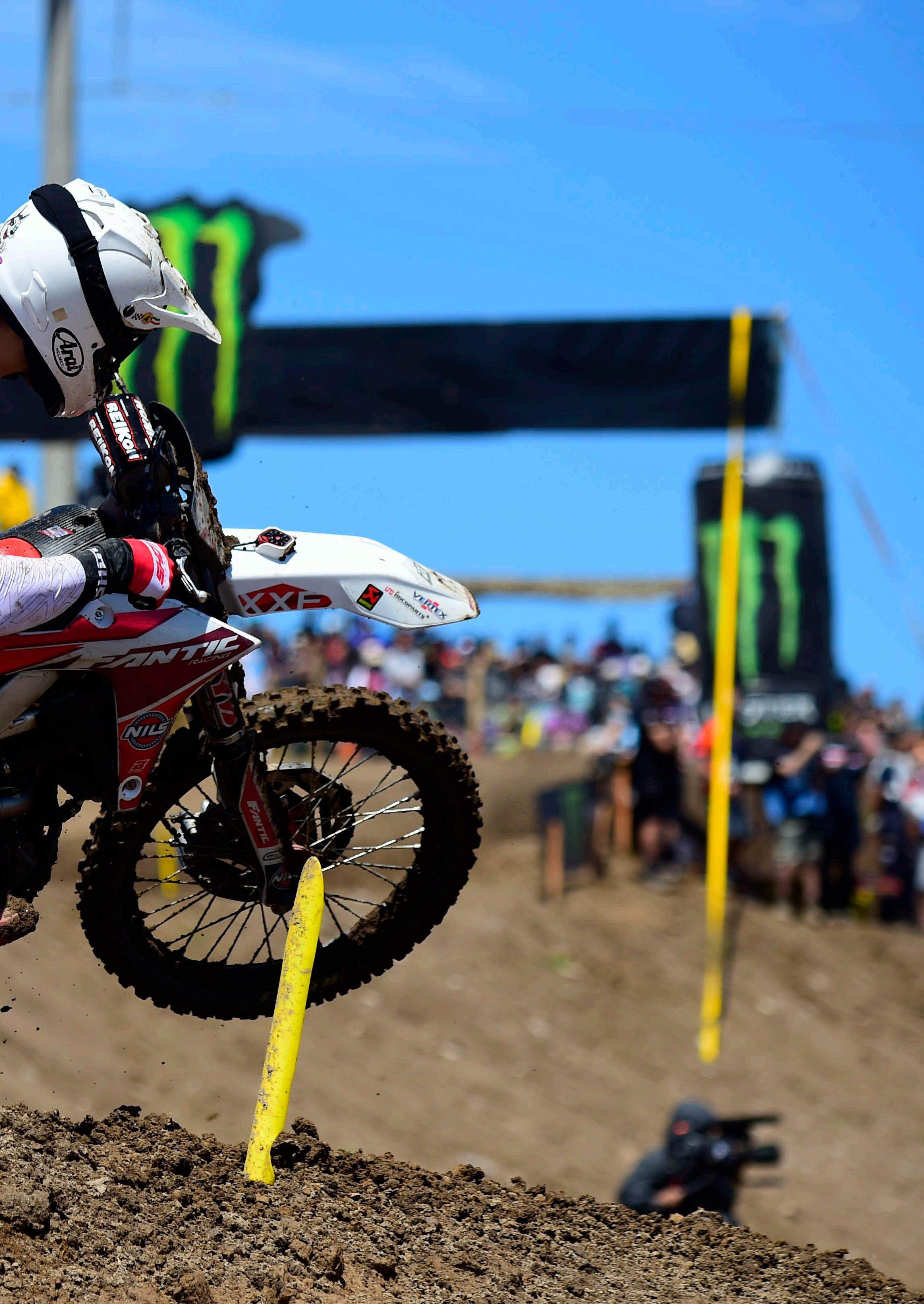
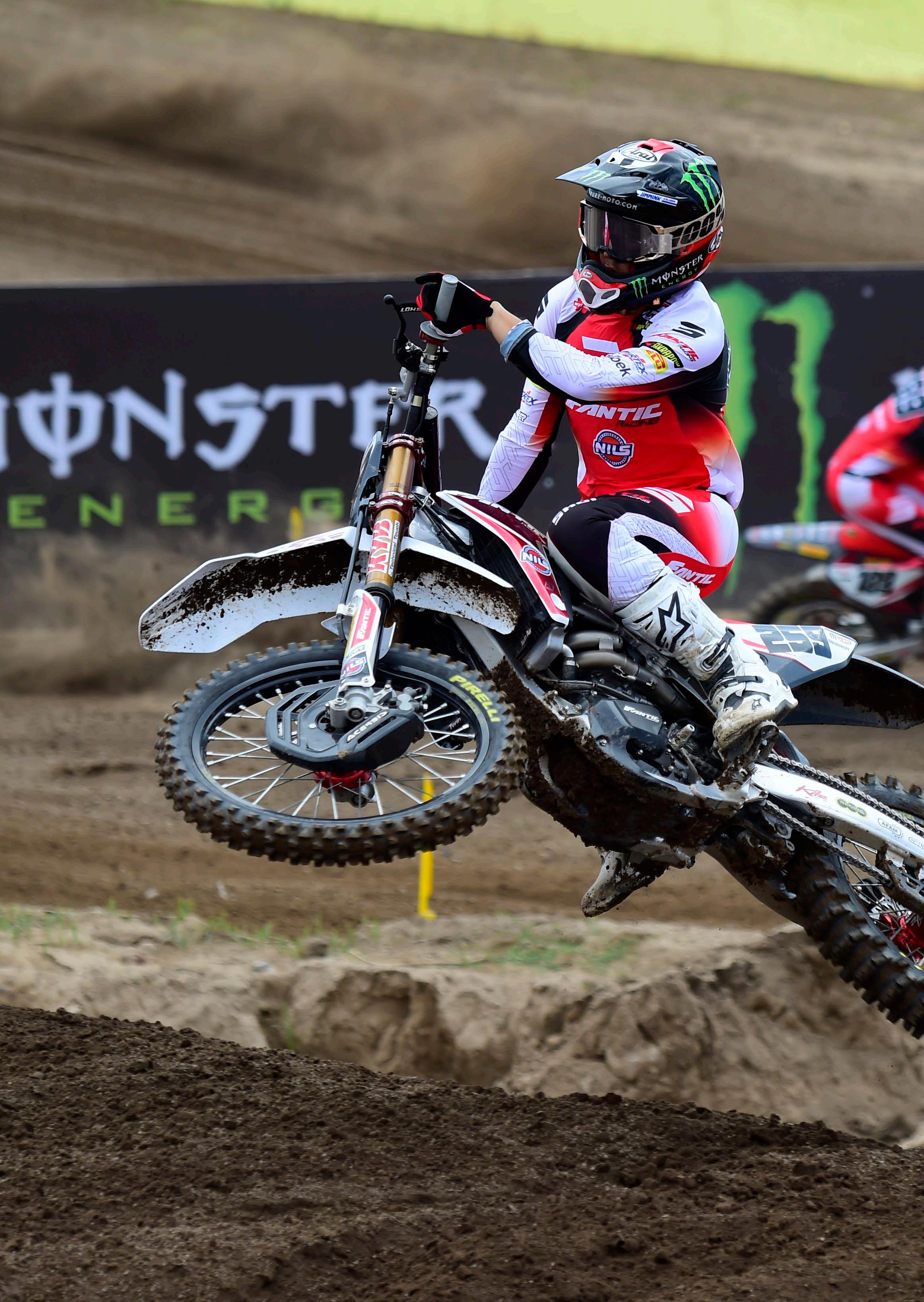
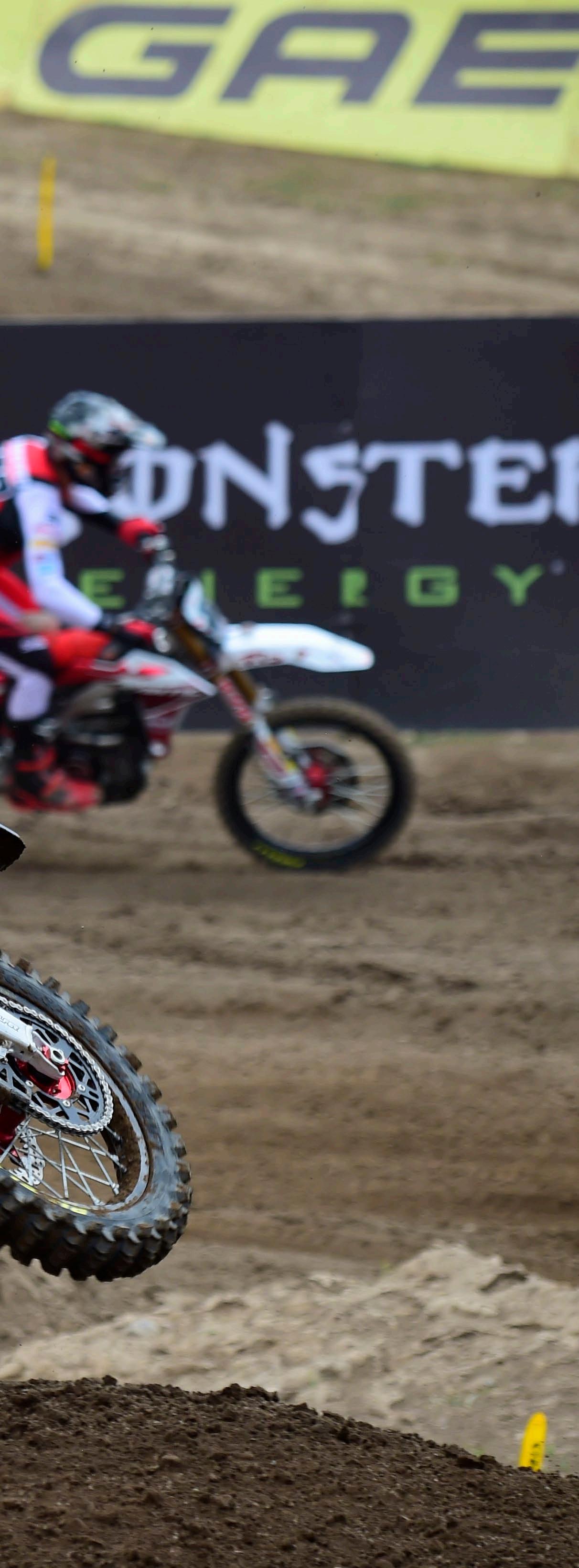
the very first test this winter, it immediately went in the direction I was looking for. That communication and understanding – that’s what made the difference.”
While Coldenhoff is hungry for wins, he’s also leaning on patience and experience.
“Of course, the goal is a GP win, but I’m not forcing it. I believe it will come when the time is right. The focus is on being there every race – consistently being top 5, ideally top 3 and the rest will follow.”
Behind the scenes, Fantic’s rise is being carefully orchestrated. Claudio Giovanardi, the brand’s Chief Strategy Officer for Racing Teams, sees this season’s early success not just as a win, but as confirmation of a bigger plan at work.
“It’s a historic achievement, a milestone for Fantic in the premier class of motocross,” Giovanardi said. “It shows that we are working in the right direction. We know nothing is guaranteed in racing, but this gives us a lot of enthusiasm to keep improving in what we are doing.”
“As of today, Fantic is the only Italian brand competing in four different disciplines, and we need Motocross just as much as we need Moto2 or Enduro, because we aim to progress in all of our disciplines, which are also essential for the development of our production range,” Giovanardi said.
According to team leader Louis Vosters, this season’s momentum was built long before the first gate dropped.
“Having Glenn and Andrea on the box at Cozar was a big moment, but Glenn’s podium in Riola was just as great,” Vosters said. “We had a really good winter. From a technical point of view, the riders immediately felt the improvements during testing.”
Vosters highlights the team’s structure as a key advantage. The addition of a fulltime trainer, physiotherapist, and consistent communication across the technical and rider staff has built a foundation for success.
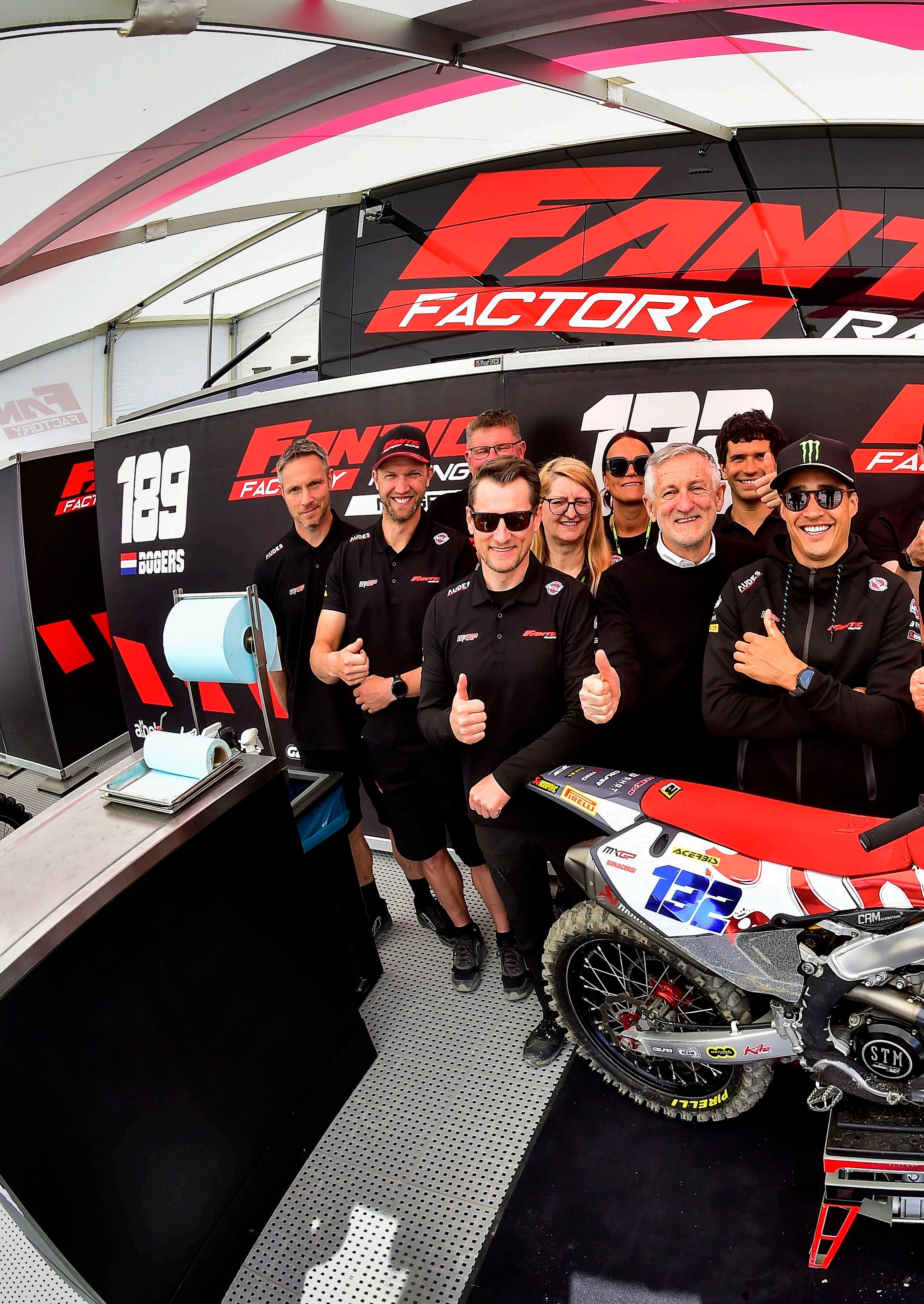
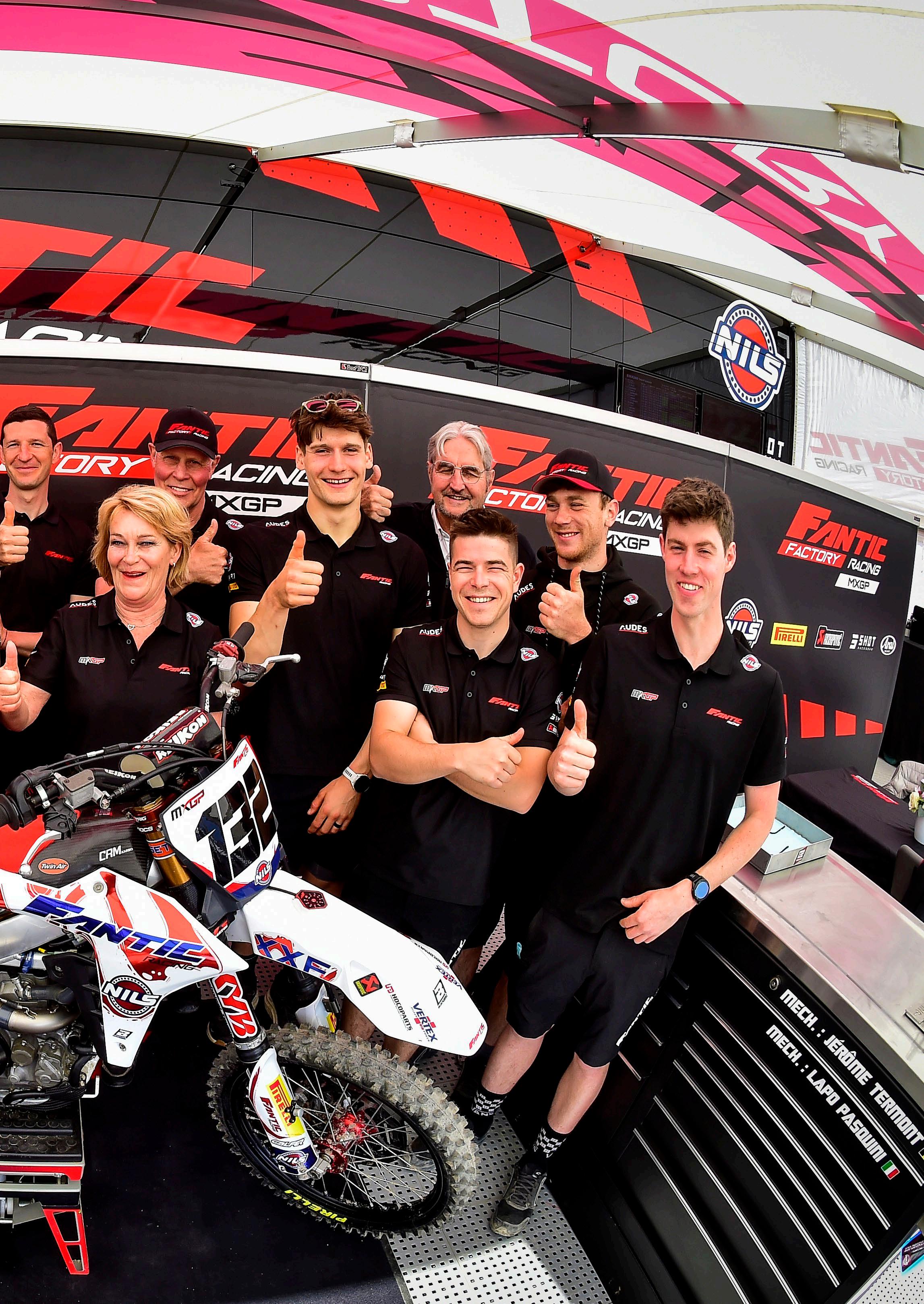
“The team has grown a lot over the past two years. We have invested in a full-time trainer for our riders and we have a fully dedicated technical staff. There is daily communication between the riders, trainer and management, all working together to get the best out of the riders. And I believe that effort is now paying off.”
What makes Fantic different? For Davide Guarneri, the man overseeing the brand’s MXGP programme, the answer is simple: adaptability.
“We are not that big, but we can react quickly – day by day, race by race,” Guarneri said. “That agility helps us make changes or shift direction fast, which is a big asset when working closely with riders.”
This winter, the technical team implemented updates across the board – from the engine to electronics to a new exhaust system designed to meet stricter noise limits.
“We started the work already last summer, gathering rider’s feedback. Seeing them respond positively to the new setup was encouraging. It
also came paired with the new exhaust system, which had to meet the new 111 dB noise regulations, adding another challenge.”
With three riders now in the premier class, the team has more data, more feedback, and more opportunities to tailor performance to specific needs.
“That’s a big step forward,” Guarneri noted. “It’s helped us solidify the working relationship and start this season from a much stronger foundation.”
Whether it’s podium finishes, technical strides, or a stronger team spirit, the signs are clear: Fantic Racing is no longer just building for the future – it’s already here.
With motivated riders behind the gate, a tightknit crew behind the scenes, and a company backing the vision across every level, Fantic is carving its place among motocross’s elite. And as Bonacorsi put it, the journey is only just beginning:
“We know we can be there. With experience, we can keep stepping onto the podium. That’s the exciting part.”


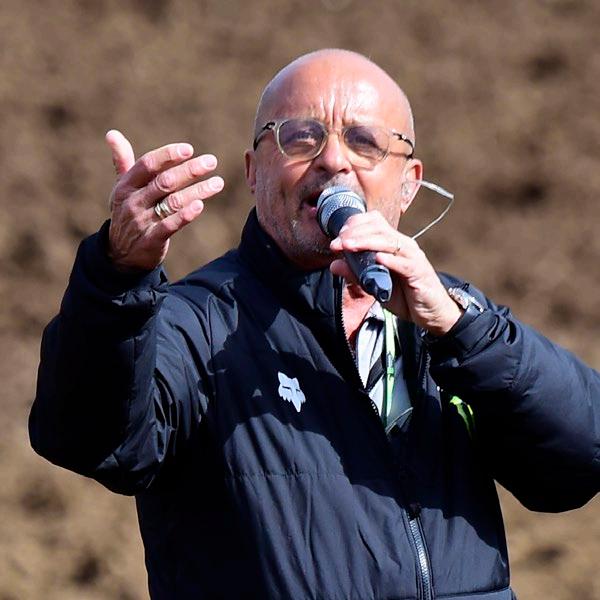
by Francis Magnanou Presenter
I’M FRANCIS MAGNANOU, AND FOR OVER 40 YEARS NOW, I’VE BEEN LUCKY ENOUGH TO TURN MY LOVE FOR MOTOCROSS INTO THE CORE OF MY PROFESSIONAL LIFE. PRETTY AMAZING, RIGHT?
It all started back in the early ’80s with my first “commercial” steps at Motocross Marketing. Since then, my world has been spinning to the rhythm of lap times, holeshots, and podium celebrations!
In 1988, I was entrusted by the president of the French Motorcycling Federation to comment and become MC for the Motocross of Nations at Villars-sous-Écot — a race that marked a turning point in the sport, with Team France (Bayle, Vimond, Kervella) bravely taking on the mighty Americans. What a moment that was!
Then, in 1990, I began presenting the Paris Supercross. I ended up doing it for 33 years straight — three decades of absolute joy, sharing my passion with fans from all over the world.
But if there’s one thing that truly changed my life, it was meeting Giuseppe Luongo around that time. We instantly connected — same values, same love for the sport, same dream: to make motocross bigger, better, and truly recognised around the globe.
Of course, I’ve also been involved in other iconic events like Formula 1, the Dakar Rally, and the Enduropale du Touquet — all unforgettable experiences. But motocross has always been the common thread running through it all.
Now, for the past three years, I’ve had the chance to bring that passion into the Paddock Show — and what a pleasure it’s been. The Paddock Show has become one of the must-see moments of the MXGP weekend, an exciting and emotional rendezvous where fans get to meet their heroes up close. More than just a show, it’s a space that brings to life the spirit of motocross — where the connection between riders and fans, which is at the very heart of this sport, remains strong and authentic. We’ve made it a mission to keep that bond intact and even deepen it — because motocross has always been about people, passion, and the thrill of sharing it together.
And while I know the end of this incredible story is approaching a little too fast for my liking… I’m enjoying every second until the very last lap.
See you at the track!
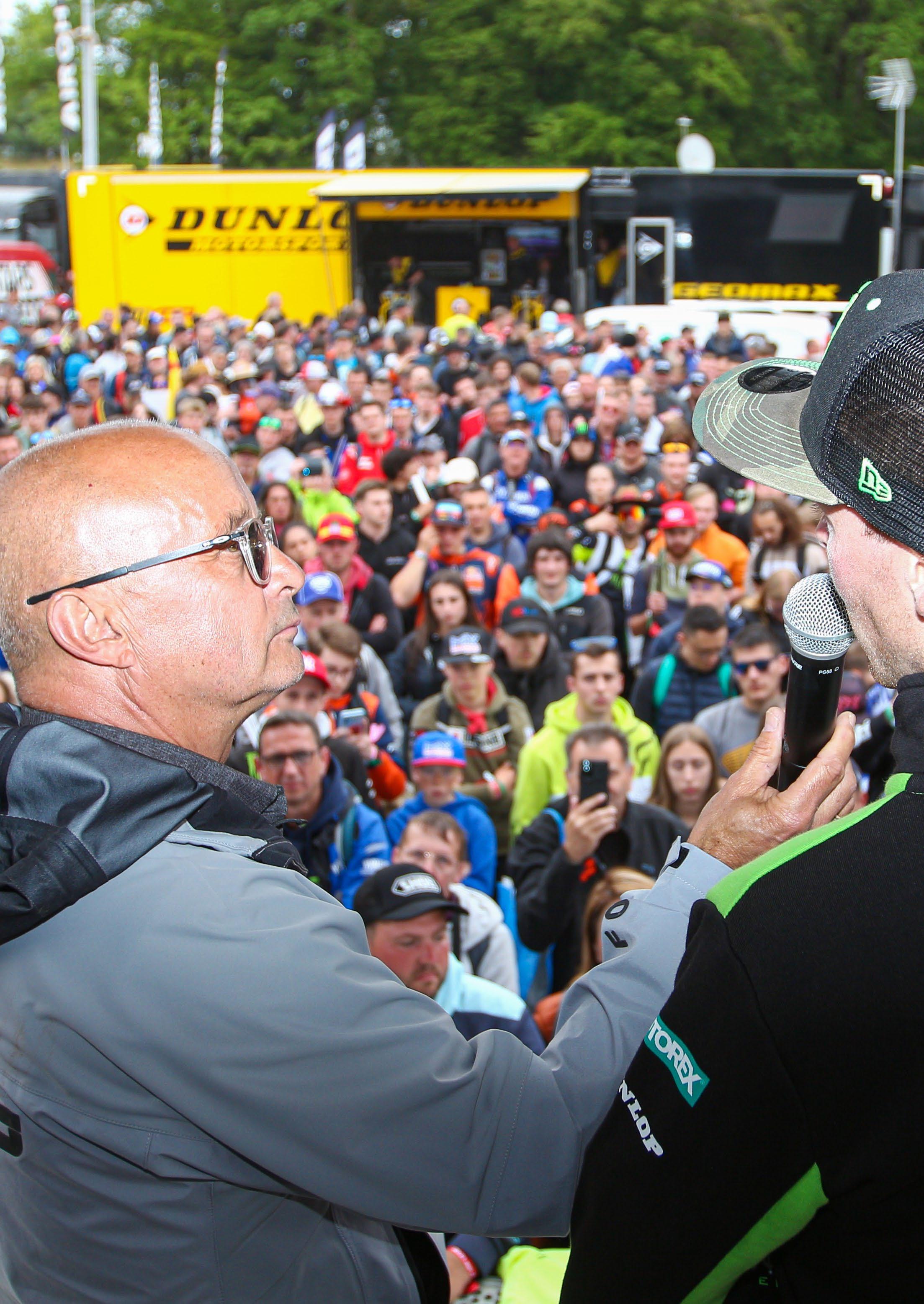
AUSTRALIAN LEGEND CHAD REED IS A RIDER WHO REALLY NEEDS NO INTRODUCTION, BUT FOR THE SAKE OF ARGUMENT, MOST WILL PROBABLY KNOW HIM FROM HIS EXPLOITS IN AMERICA WINNING PRETTY MUCH EVERYTHING ON OFFER, FROM 125CC AND 250CC SUPERCROSS TITLES, TO 450CC INDOOR AND OUTDOOR TITLES.
However, for the younger readers of this magazine, how many of you know that Reed once competed in the FIM Motocross World Championship? Well, he did, and in 2001 ‘Speedy Reedy’ also won a GP in the premier class now known as MXGP, and it’s Reed’s factory SR250 Kawasaki which we will feature in this issue of MXGP Magazine.
In 2000, Chad Reed was getting ready to embark on another season competing in his native Australia, and the thought of competing in the world championship was something that had never entered his mind. That was until, just before the opening round of the FIM 500cc GP in Australia at Broadford, near Melbourne, where
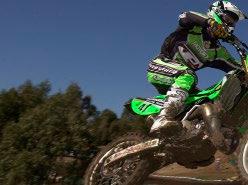
an opportunity arose due to him turning eighteen a few days prior to the event. Chad picks up the story:
‘I had turned 18 in March of 2000, which allowed me to be just of age to ride the 500 GP at Broadford, Australia. I was riding for Yamaha at the time, and if everyone remembers, Michael Byrne and Andrew McFarlane had holeshotted and kind of were the heroes of the event, they led laps and did really well.’
‘Jan de Groot (250cc Factory Kawasaki team boss) obviously saw that from afar and paid attention; they were younger guys, maybe in their early twenty’s. Jan went after both of them, but as it turned out Andrew took a 500cc ride with Michele Rinaldi and Byrne took a ride in the US with Jeff Emig, so I guess Jan then hit me up instead.’
‘I was the younger of the three and much more fitting for a 250cc ride at the time, probably. I was racing for Yamaha, but a long story short would be that Jan offered me a ride and it was my ticket out of the country to take on the world, and I always looked at that as a short-term way of making a
name for myself, so I could go to America and race supercross.’
After a brief meeting with Factory 250cc Kawasaki team owner Jan De Groot at the Motocross of Nations at the end of 2000 in France, Reed flew to Japan to test the 2001 bike, knowing that it would be the first time in his career that he would get to ride a full factory motorcycle, but as Reed recalls, his first impressions were not exactly as he’d imagined, as he recalls:
‘My memory of the bike is that I showed up and Mickael Maschio was my teammate, so there were four bikes, two each. We both had a number one and a number two bike, and I was like WOW! I looked them over and they were typical factory Kawi’ – there was a lot of magnesium and titanium and it was a really nice, bad ass bike. No-one really gave me a whole load of information, other than there was a one and a two bike.’
‘I rode the number one bike and truthfully speaking, it wasn’t very good, I didn’t love it, I was expecting that a factory bike was gonna just be everything that you can ever imagine and more, and I found out quickly it was just a dirt bike that
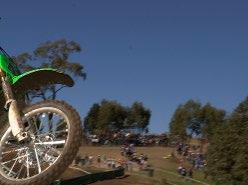
wasn’t that great and it still needed ‘to be mine’. And then I jumped on bike number two, and I immediately just fell in love. I’m like WOW, this is everything I imagined as a kid that a factory bike should be, and so what I learned in the next few hours was that the first bike I rode was the 2001 bike, so basically the current bike, and then the number two was actually a 1999 bike, so I guess that the US and Europe at the time had gone back to their ’99 bike – obviously I wasn’t there for that transition – but the 2000 and 2001 bike wasn’t a better direction and no-one liked it, so the ’99 bike from what I remember just did everything right.’
Whilst the engines on the two bikes were the same, it was the chassis and swingarm that were different, and once Chad was on the number two bike, he immediately felt like it was ‘his’ bike. It turned, it handled; it was perfect. When it came to suspension though, as an eighteen-year-old kid, fresh off the ‘plane from Australia, Reed was faced with the difficult task of knowing which brand to go for, and remembers that it all came down to a stab in the dark as he points out:
‘We had all the Ohlins technicians and the KYB technicians at the test and my teammate Maschio was seemingly leaning all-in towards the Ohlins thing. I had ridden the Ohlins and, it’s actually kind of funny when I think about it some 20 odd years later, that the only guy I knew at the test was the Ohlins guy who was an Australian guy called ‘Moose’. So, here I am an Aussie, with an Aussie technician and it made all the sense in the world for me to work with Ohlins, and I loved the suspension, it was great, but all I wanted to do was ride supercross and I was like ‘well, Ohlins is not really known for their supercross settings, so maybe I just want to ride KYB and be on the same suspension that Ricky Carmichael is riding on in America …’ and so I just remember making a decision as an 18 year old kid that I was just going to ride factory KYB because it looked better, and it was what RC was using in supercross.’
‘So, based off of no evidence of being better, actually it was quite horrible and horrendous at the time, I went with the KYB, but we progressed through the season and it came really good. We made a lot of progress.’
When the tests were done in Japan, Reed raced the final round of the Japanese Championship to see how the bike fared in race conditions, but even this didn’t come without its problems, as he recalls:
‘The first practice was muddy and I remember on the inside of the race track there were these rice fields, and I cross-rutted and literally jumped off the side of the track, straight into the water and the bike was just completely submerged, was

gone! And so, my first experience as a factory rider was launching this thing off the race track and into basically a pond, and I just remember how non-issue it was, like they brought the bike back, they tore the engine out, threw a new engine in like it was nothing and off we went for practice number two, and I was like ‘that’s how it’s done, right? That’s the life I want to live, you know, to be able to be the best I can and have that kind of support, so yeah!’
Perhaps one of the biggest things Reed remembers about being a factory rider for the first time was how the technicians were able to mould a bike to his liking, a process not every rider gets to experience:

‘We had several different options of cylinders and pipes and things like that. I think for the most part when I jumped on it, the power was really good. I don’t really look for a motorcycle that rips your arms off, I like it to be rideable, and if I’m honest, most of the European bikes, all seemed to be really smooth, really linear and so that fit my style; it had really good bottom, so that’s what I remember is the customisation of the bike, meaning you could have the power wherever you wanted it.’
‘I remember going to one cylinder and it was better but then maybe it lacked a bit of bottom, so then they would have a pipe to pick up the bottom, and so it was kind of finding that combination. I don’t remember a point in my life
prior to that point where you could kind of have it all where, as a factory rider I felt like I could have it wherever it was, where I could pick a pipe in one direction and a cylinder in another direction and combine them all to make the perfect bike.’
When the 250cc World Championship kicked off in Bellpuig, Spain, Reed fought back from a first turn crash to 8th and felt like he was on top of the world, like he belonged on the world stage. However, that feeling of elation was somewhat short-lived next time out when he went to Valkenswaard:
‘All I remember is, it had some pretty big jumps, and the most insane ruts I’d ever seen in my life. Taking off jumps in foot peg dragging ruts and
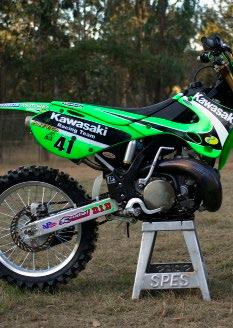

landing in foot peg dragging ruts was something foreign for me and I just struggled. Was so bad in the race, maybe crashed five times, got lapped by Mickael Pichon.’ Reed failed to score. It’s worth pointing out that from 2001 to 2003 the world championship saw all three classes compete on the same weekend in a one-race format, like MotoGP, Moto 2 and Moto 3.
At round three in Australia, he finished a disappointing 6th and decided that from that moment on he would get his head down and work, and by round six, Reed visited the podium for the first time, at Spa in Belgium.
‘I showed up to Spa, an American, Mark Peters, was the track builder. I had evolved as a rider, but I remember showing up at the track and from the very first laps, it just felt like a normal track to me, like sandy but not too sandy, it was really jumpy and I kind of felt at home.’
‘I had a bad start and got to 3rd and I remember passing Josh Coppins for 3rd. Not only was it a podium experience where I was like ‘wow, that’s cool’, but JC was someone I grew up around as a young teenager; I’d spent a lot of time in New Zealand, at his house and things like that and so I had a huge amount of respect for him, and with that came a rivalry, like yes, he’s a friend or like a big brother, but you always want to beat your big brother, right? So, me passing him was a big step in the right direction and gave me that confidence to keep digging. From there I believed I could be a podium guy.’
Another podium followed a week later in Sweden and after a 9th in France, Reed rounded out the last six GP’s by not missing a single podium, taking six on the bounce. One of those was at Roggenburg, Switzerland where he only just qualified for the main race, and after making a good start from the outside gates, ended up 3rd, which was another vital lesson in his career, as he points out:
‘I kind of grew a lot from that because I went from thinking I’d barely made the race to getting on the podium, so it gave me the opportunity to start thinking differently, right? Suddenly, I believed I was a podium guy from anywhere on the grid.’
Reed’s biggest achievement though came at round twelve of fourteen at Lierop in Holland where he pipped eventual world champion Mickael Pichon to the win, in what was an eventful day. No matter who Reed spoke to about Lierop, they all said the same, that it was the most gnarliest track ever, but when he arrived, it had
been ‘steamrolled’ which left him thinking it wasn’t going to be that bad.
‘I go out for first practice, and think man this place is fast, it’s not that gnarly, but when I go out for the second one, and I’m like WOW! This track is gnarly. I just couldn’t believe the evolution of the track and how quickly it changed, but to me it felt like one big SX track and I felt at home on it.’
I remember Everts telling me you’ve got to jump really far off of the singles, and I remember thinking okay, I’m jumping pretty far, and I’m already scared. Here I am thinking I’m sending it off these single jumps, and killing it and scaring the crap out of myself, and I go and watch Joel Smets and Stefan and I’m like WOW! They’re really jumping far, but they were jumping so far that they were landing in an area that was never scary, it was harder and past the scary bumps, and so I remember going out for the next practice and just straight sending these single jumps, thinking I’m gonna blow my legs off when I land, and then I land and the bike just picks up like it’s on hard pack. I’m like, these guys know what they’re talking about, you know?’
‘And that’s all I remember about the race; I got a decent start, Mickael was leading and I remember in the back of my head thinking, don’t let him get away. About halfway, it started drizzling rain, and I was struggling to see. Goggles off or leave them on? It was so distracting looking through
the narrow roll off film, that I could barely see out and it was a distraction. I felt like I couldn’t ride my best, and started losing time, so I just thought screw it, I’m taking my goggles off. I’m either gonna finish 2nd anyway, or I can maybe ride the best that I can, and if I stick to the insides – I’d seen he was moving around looking for smoother lines – so, instead of following his smoother lines I thought I’d suck it up, ride the insides, stay out of his roost and maybe pass him like that, and as it turned out I was able to do that, and I was able to win my first and only GP.’
When Reed first landed in Europe, one of the first tracks he rode was Lommel, and after spinning what he thought were some fast laps, he was disappointed to learn that he was more than TEN seconds off the pace compared to Everts and Smets. He thought Jan De Groot ‘was f***ing with me’ when he told him, so victory in Lierop was even sweeter as he points out:
‘Going back to the time when I was plus ten seconds on Stefan and Joel and that my only GP win in life was on one of the gnarliest sand races that I ever did in my life, that was pretty cool.’
Chad Reed ended his first and only year in the FIM 250cc Motocross World Championship 2nd overall, and from the fourteen rounds he raced, scored eight podiums, picking up 4x3rd, 3x2nd and that impressive win in the deep sand of Lierop.


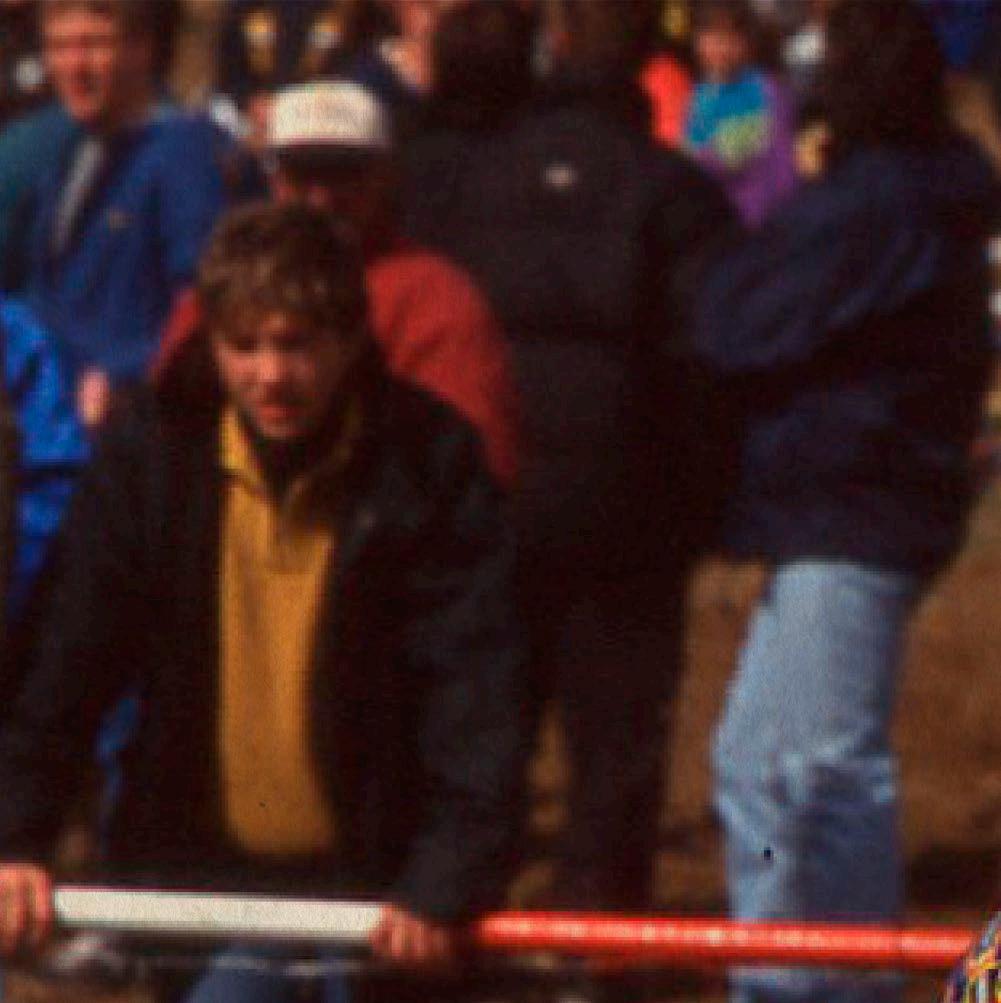
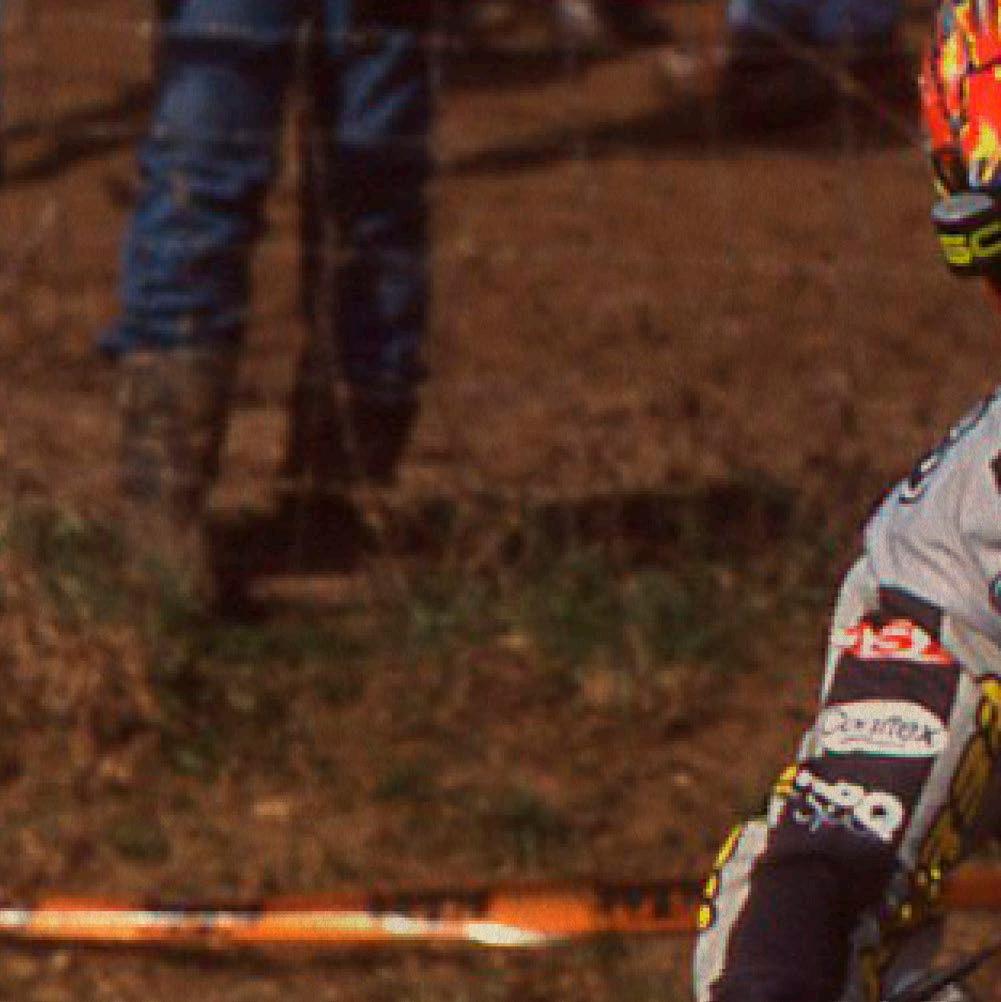
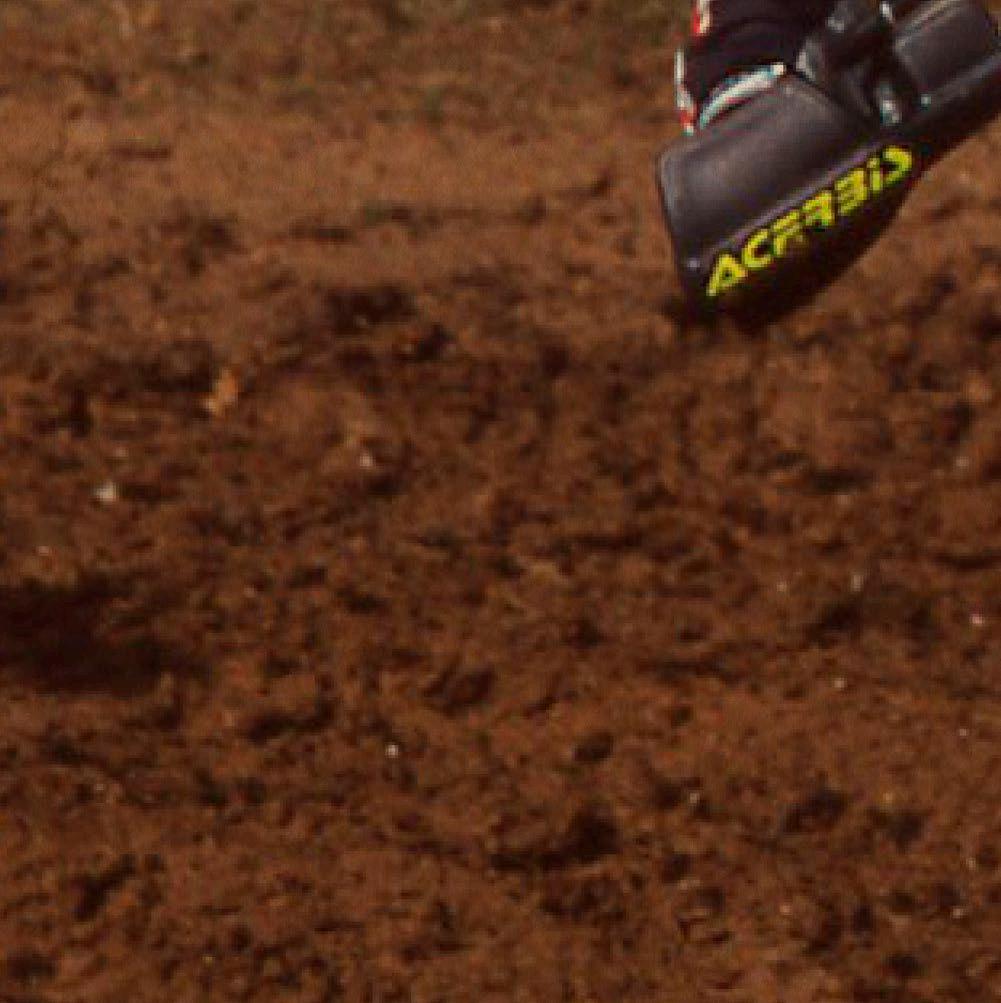
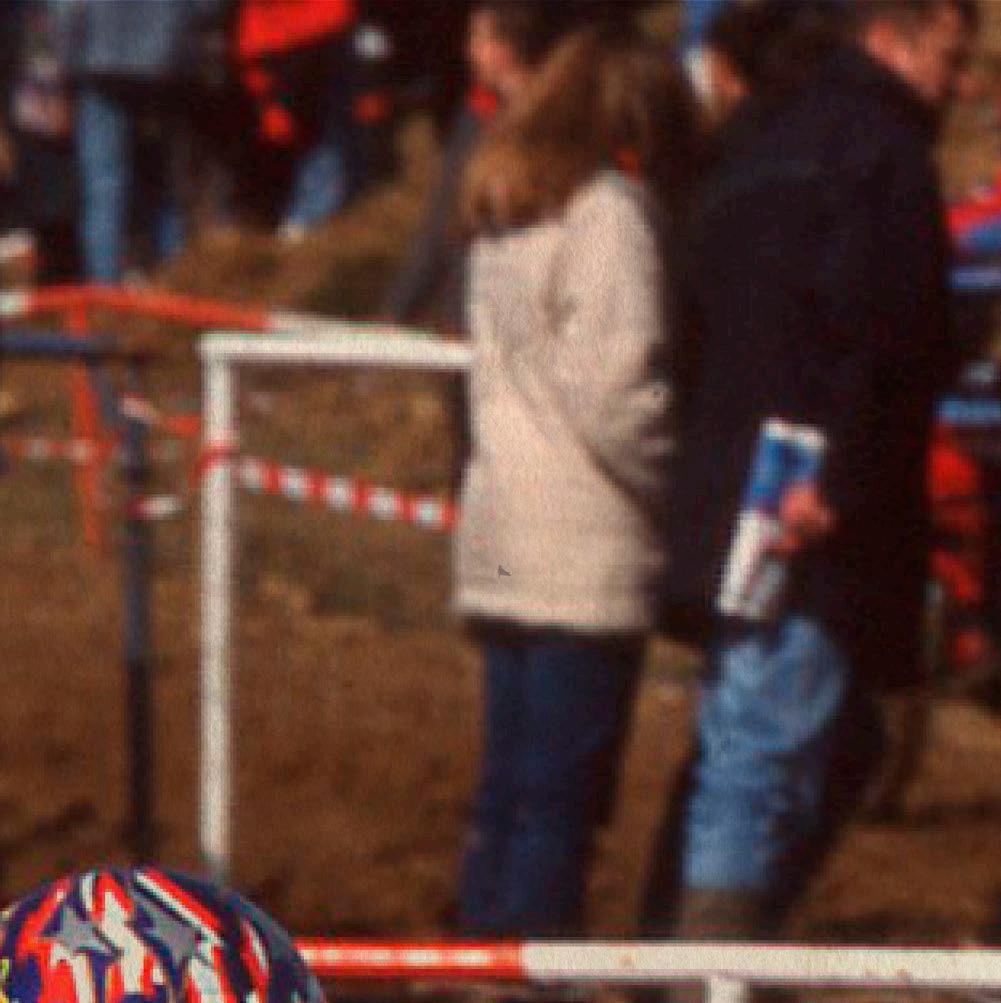
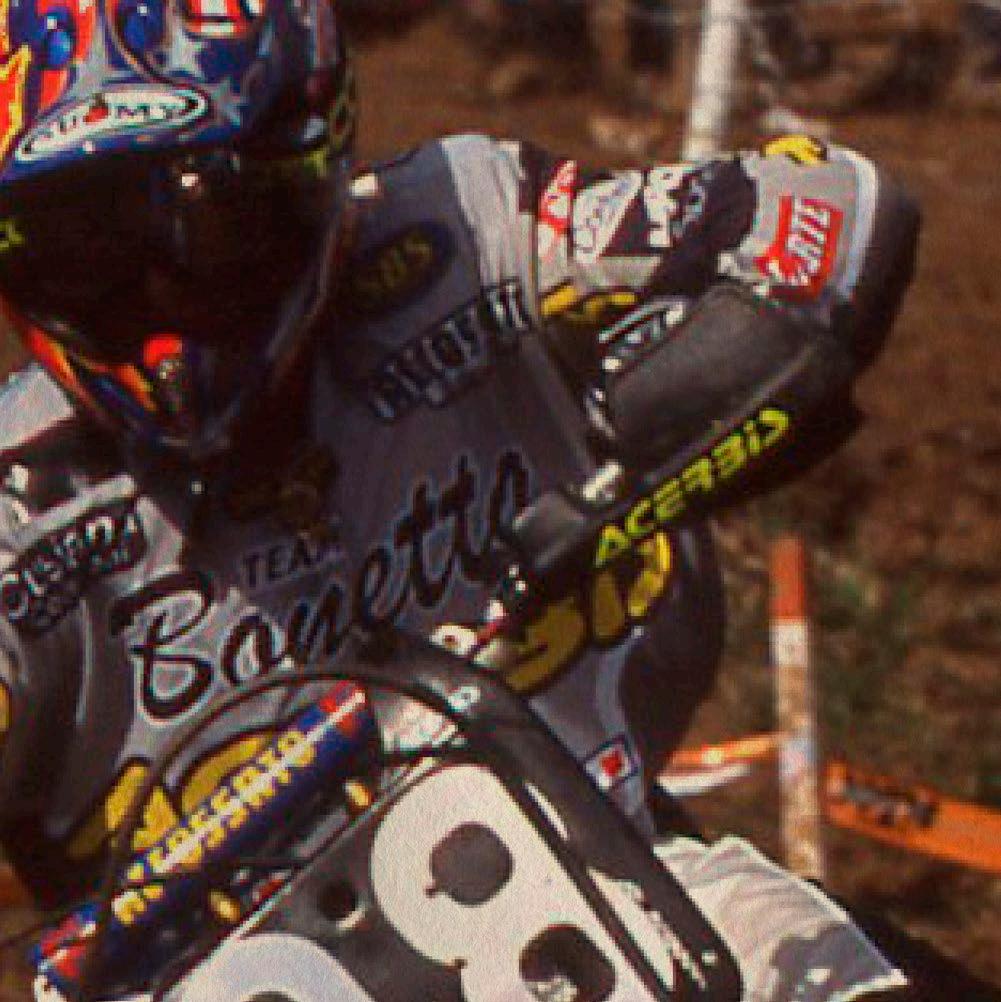


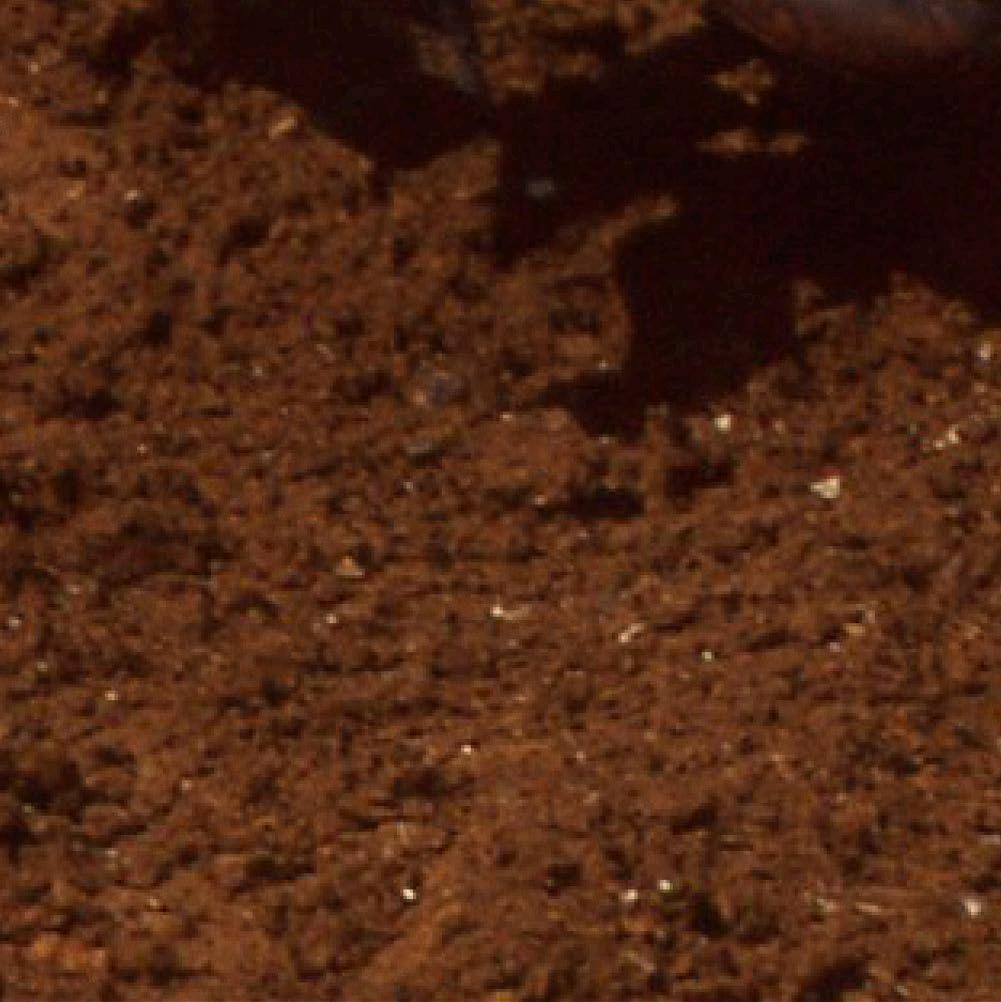


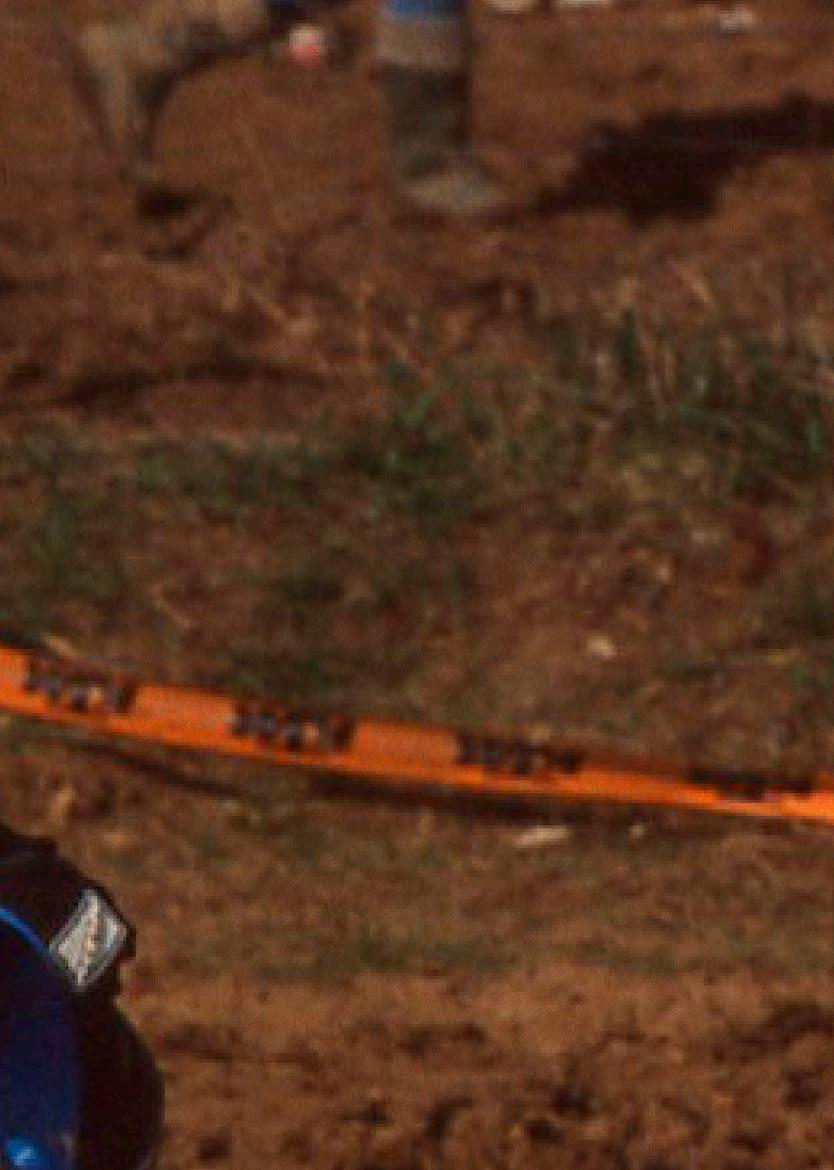


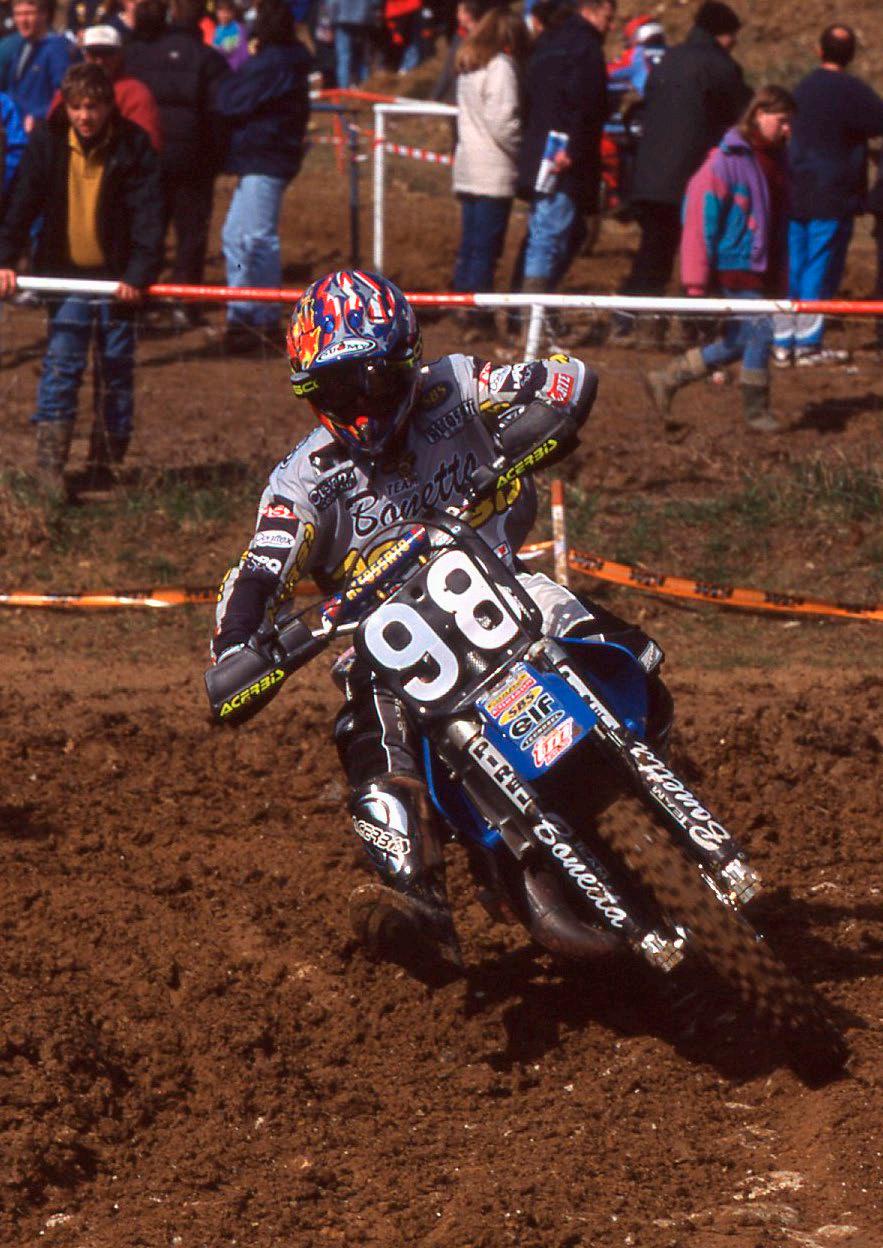

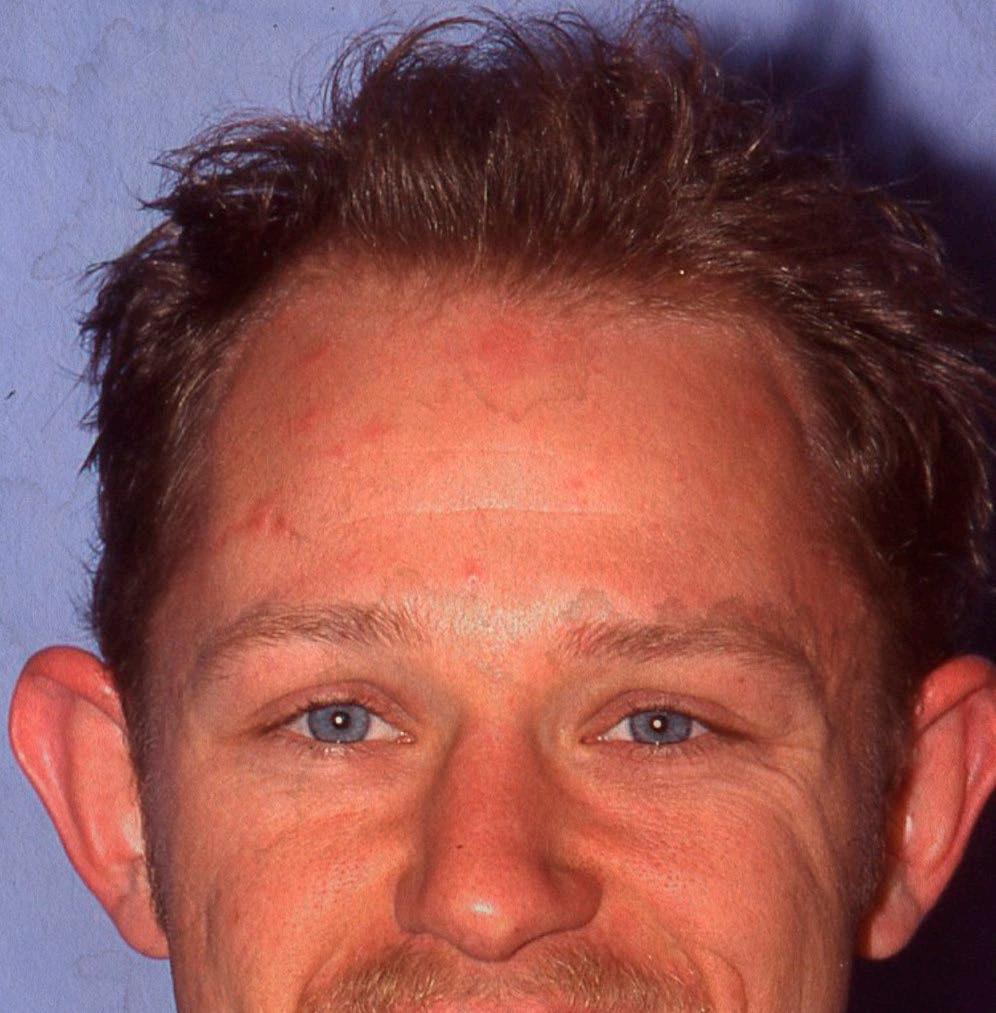

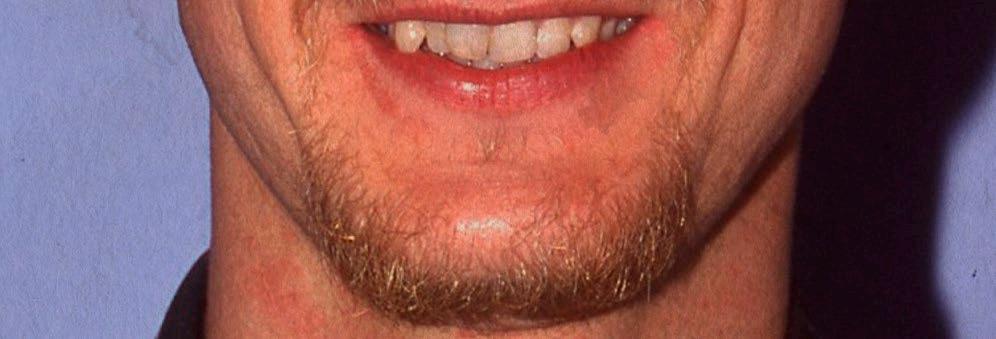


Born on 24th September 1974 at Sorens, not far from Fribourg, Philippe Dupasquier grew up in a two-wheeled environment as his parents Robert and Raymonde founded a motorcycle dealership in 1973. His father was a Motocross racer, so it was no surprise to see him start his first race when he was just eight years




alongside his brother Rolf in Team Switzerland. Then from 1993 to 1996 he entered the 125cc World Championship, improving his results every year even though he never raced the entire series. In 1997 he finally got his first race win at the Grand Prix of Slovakia. However, he had to wait one more year to enjoy a podium ceremony (as he retired in the second race in Slovakia) during the last round of the Championship at Bielstein in Germany, where he finished runner up behind Alessio Chiodi, who clinched his second straight world title with a perfect 1-1 that day.

2000, and
Thomas
After testing the waters of the 250cc class with a top ten finish at the Swiss GP in 1998, he moved to the class in 1999 where he finished the year in the top twenty, and also claimed two national titles that year. Back in the 125cc class and on a TM in 2000, he finally entered the top ten with ninth in the Championship and another GP podium, taking third in San Marino behind Thomas Traversini and Grant Langston. Missing most of the 2001 season, he was back on a KTM in 2002 for his best ever season as he was a title contender during most of the Championship; at this period there was only one race per GP, and after seven of the twelve rounds Philippe was third in the standings, just five points from Championship leader Mickael Maschio. His results in the last five rounds didn’t put him in a position to compete for the title to the end however, despite four podiums during the season, and he just missed the final podium by fifteen points.
In 2003 he made his

AS THE MXGP WORLD CHAMPIONSHIP MOVES TO SWITZERLAND, IT’S TIME TO PUT THE SPOTLIGHT ONTO ONE OF THE BEST SWISS RIDERS FROM THE TURN OF THE MILLENNIUM. MULTIPLE NATIONAL CHAMPION PHILIPPE DUPASQUIER WAS THE FIRST EVER SWISS RIDER TO WIN AN INDIVIDUAL GP RACE IN THE HISTORY OF OUR SPORT, AND IN 2002 HE FOUGHT FOR THE 125CC WORLD TITLE AGAINST MICKAEL MASCHIO, PATRICK CAPS AND STEVE


He started to race in his home country, and claimed a 125cc title when he was fifteen years old. Two years later he entered the 125cc European championship, scoring points in nearly half of the races to finish thirteenth in the series; 1992 saw him also racing the Motocross des Nations in Australia,



later on the Swiss
last GP appearances, at the age of 29, to focus Championships, where he claimed a total of ten motocross titles from 1990 to 2006. Then
he also competed in Championship, and to his scoreboard taking his kids Jason and also Jason was amongst

the national Supermoto added two more titles before taking care of Bryan who also started to race, but on asphalt rather than on dirt.
Europe’s most promising young riders, racing at Moto3 Grand Prix level, until he tragically lost his life in a crash at the Italian GP on May 2021. The entire paddock mourned his loss.
TEXT & PHOTOS: PASCAL HAUDIQUERT






125CC SWISS CHAMPION
13TH IN THE 125CC EUROPEAN CHAMPIONSHIP (YAMAHA)
26TH IN THE 125CC WORLD CHAMPIONSHIP (YAMAHA)









15TH IN THE 125CC WORLD CHAMPIONSHIP (YAMAHA)
1995: 15TH IN THE 125CC WORLD CHAMPIONSHIP (YAMAHA)
14TH IN THE 125CC WORLD CHAMPIONSHIP (KAWASAKI)
125CC SWISS INTERNATIONAL CHAMPION
13TH IN THE 125CC WORLD CHAMPIONSHIP (KAWASAKI)
125CC SWISS INTERNATIONAL CHAMPION







10TH IN THE 125CC WORLD CHAMPIONSHIP (TM)
IN
125CC AND 500CC SWISS INTERNATIONAL CHAMPION
19TH IN THE 250CC WORLD CHAMPIONSHIP (YAMAHA)
500CC SWISS INTERNATIONAL CHAMPION
9TH IN THE 125CC WORLD CHAMPIONSHIP (TM) : 42ND IN THE 125CC WORLD CHAMPIONSHIP (KAWASAKI)
4TH IN THE 125CC WORLD CHAMPIONSHIP (KTM)
29TH IN THE 125CC WORLD CHAMPIONSHIP (KTM)
CHAMPIONSHIP
125CC SWISS MASTERS CHAMPION



125CC SWISS MASTERS CHAMPION
125CC SWISS MASTERS CHAMPION
125CC SWISS MASTERS CHAMPION
CHAMPION
125CC SWISS MASTERS CHAMPION
SWISS MASTERS CHAMPION
SUPERMOTO SWISS CHAMPION
SUPERMOTO SWISS CHAMPION
SWISS CHAMPION







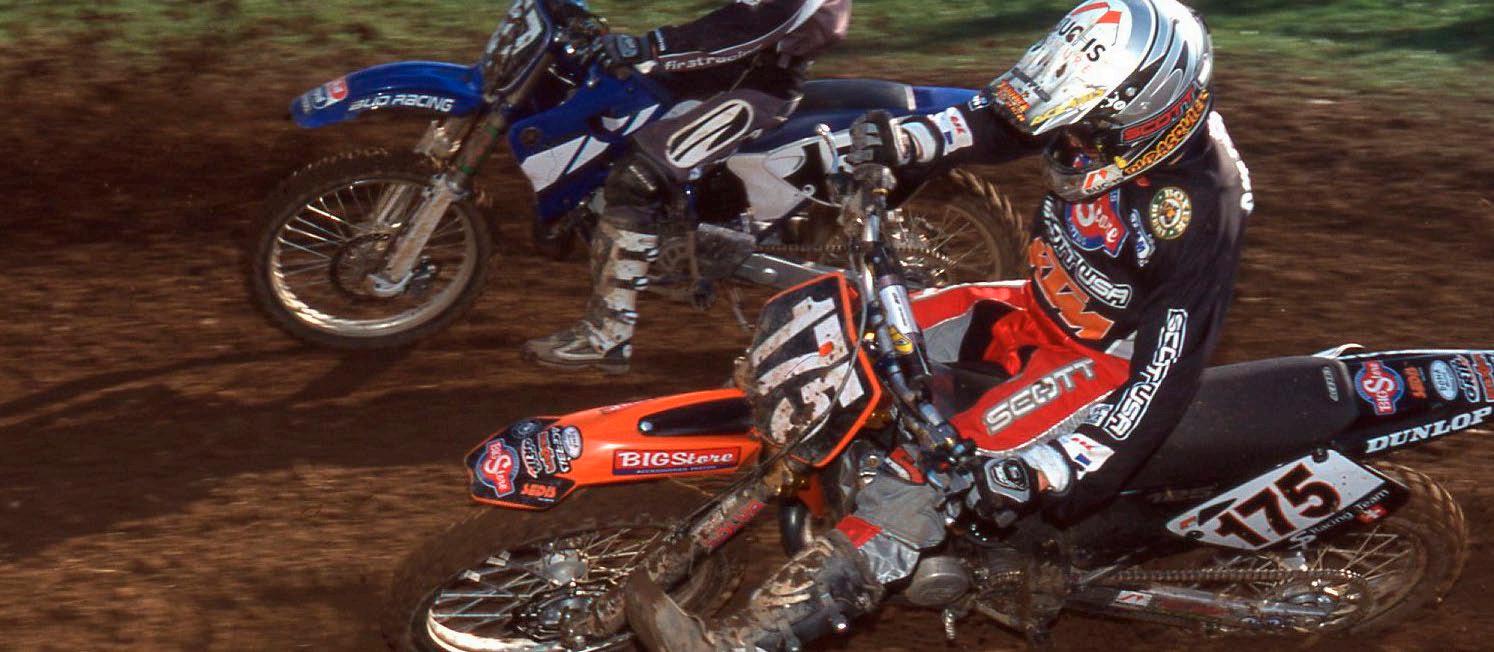




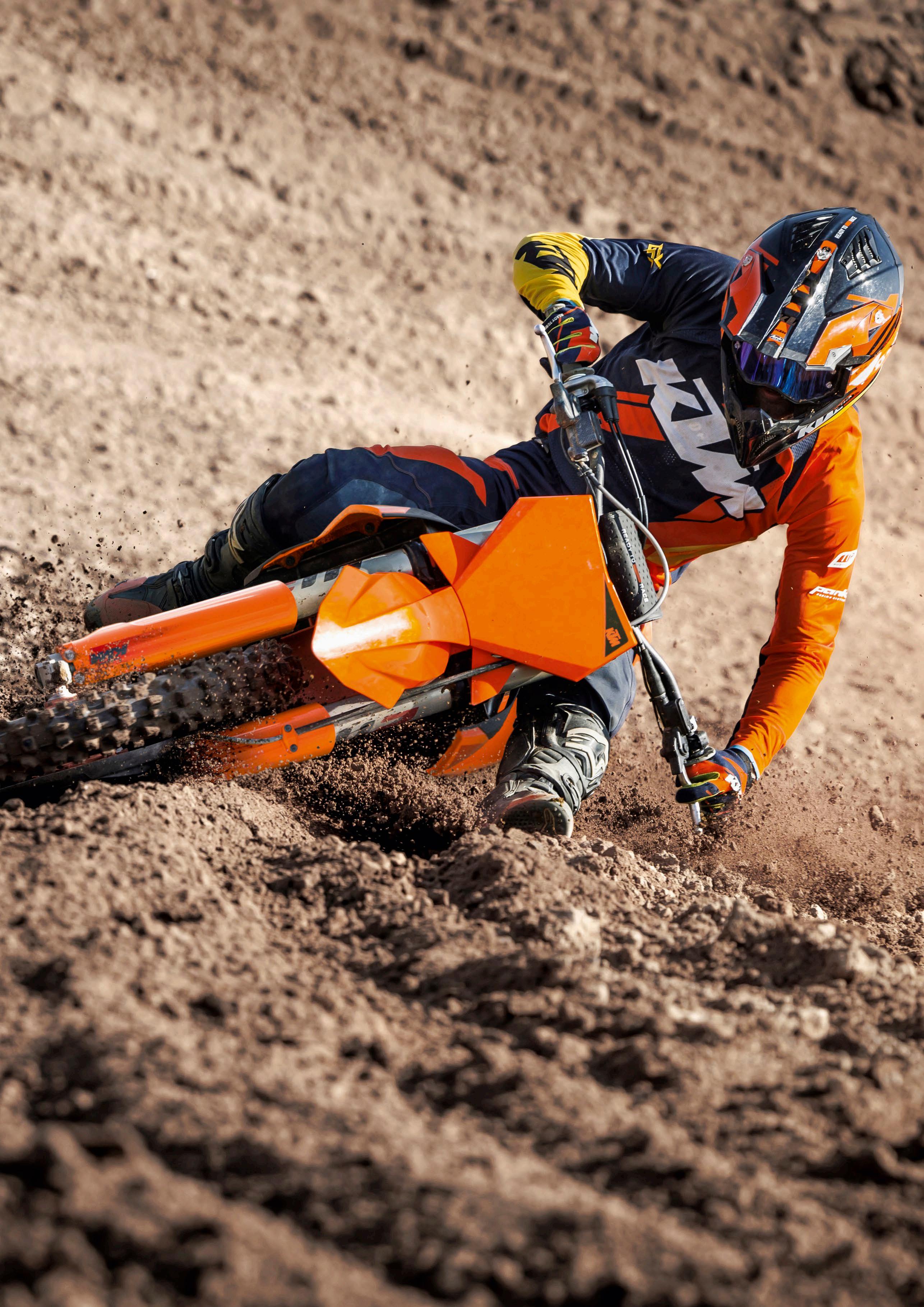
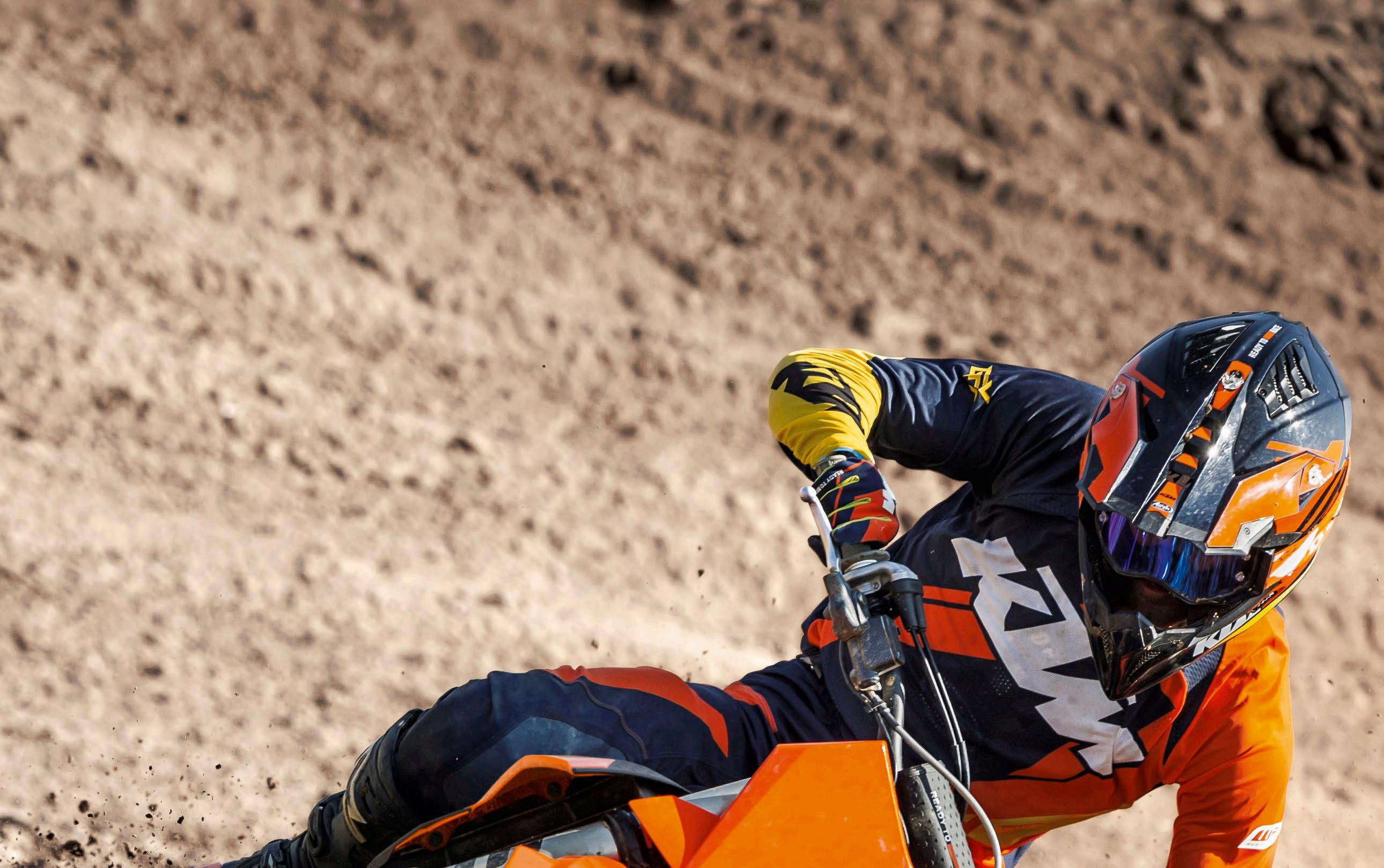



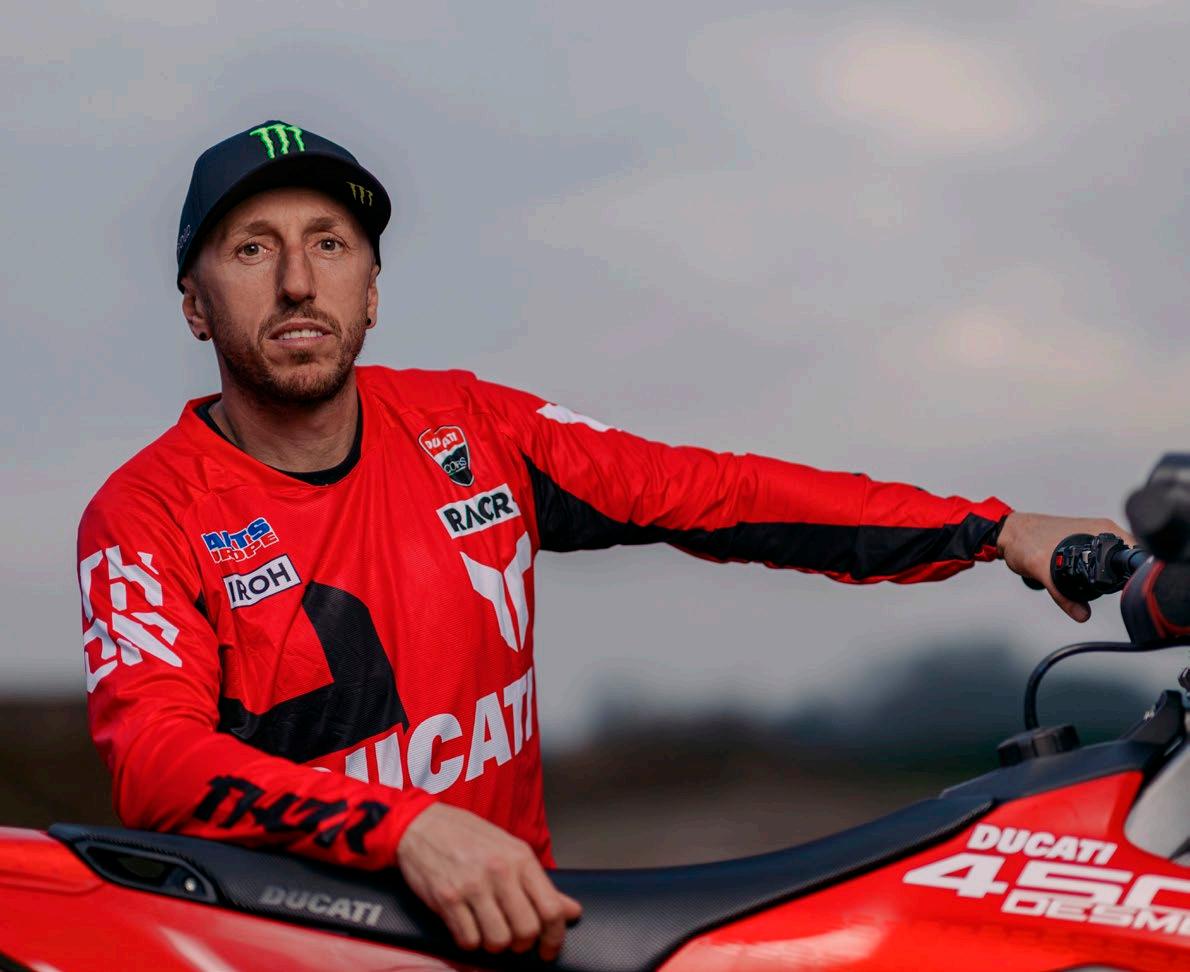




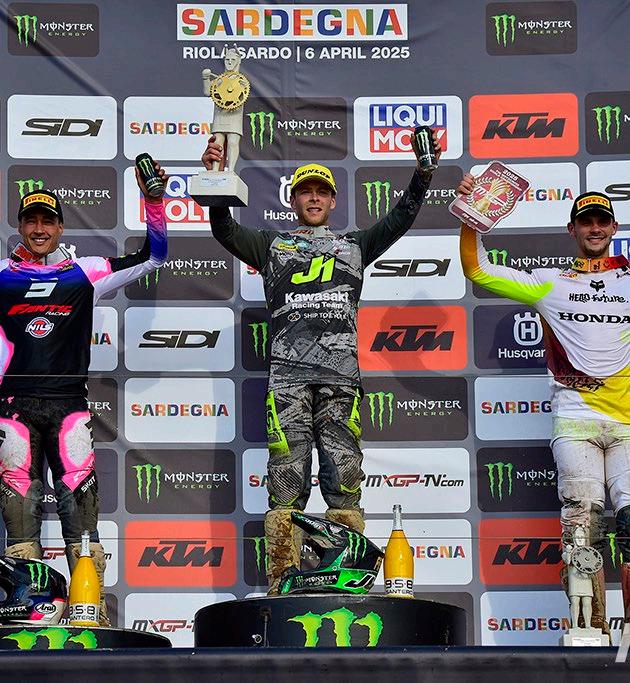





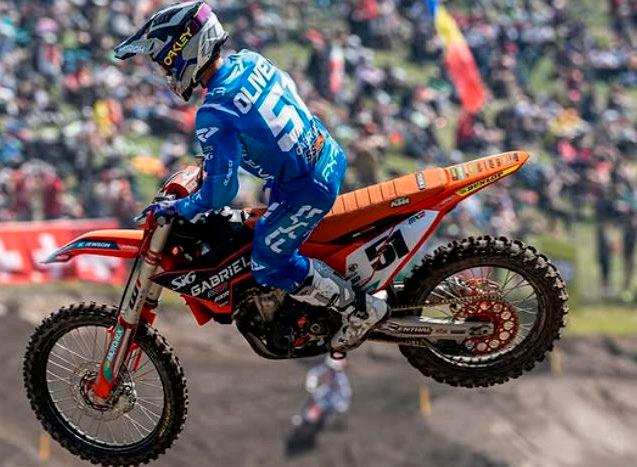








1 Ducatony’s comeback fire burns in Trentino—10 points and pure fun!
2 Tough break for Valin—wrist injury sidelines the rookie.
3 The Bullet returns with fastest lap in Sardegna !
4 Guadagnini injured, but smiling in Trentino and nearly ready to return.

5 Australia MXGP track revealed—sand and clay in Hidden Valley!
6 Gajser hits 50 wins—joins the legends of motocross.

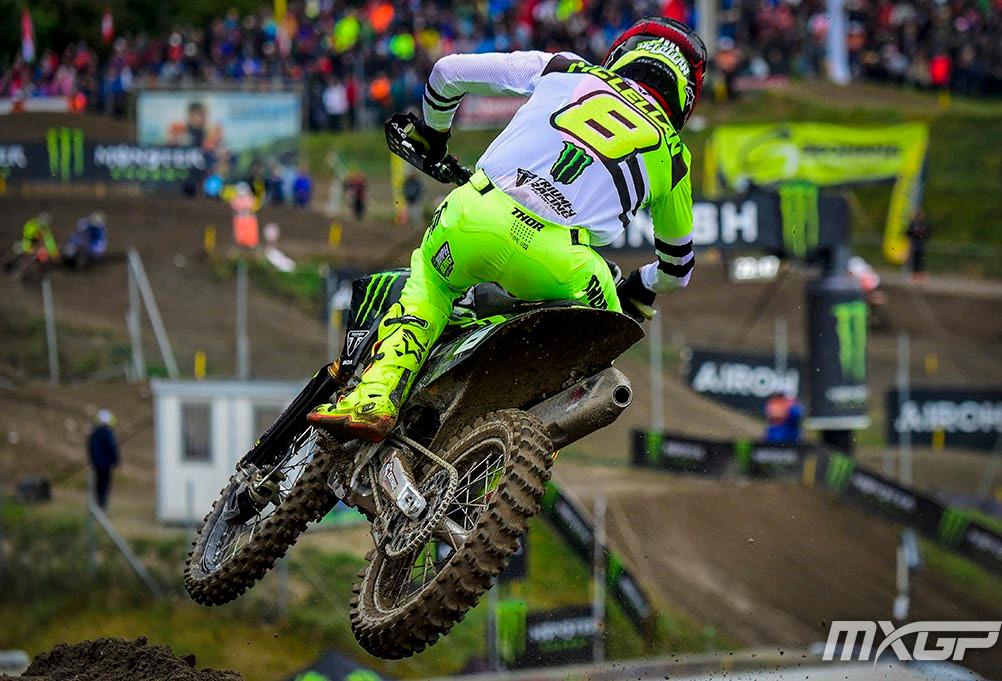

7 67 years combined—Febvre and Coldenhoff show experience matters!
8 New ride, new shot—Oliver shines with top six finish.
9 History made—Mc Lellan and Triumph win their first GP!




